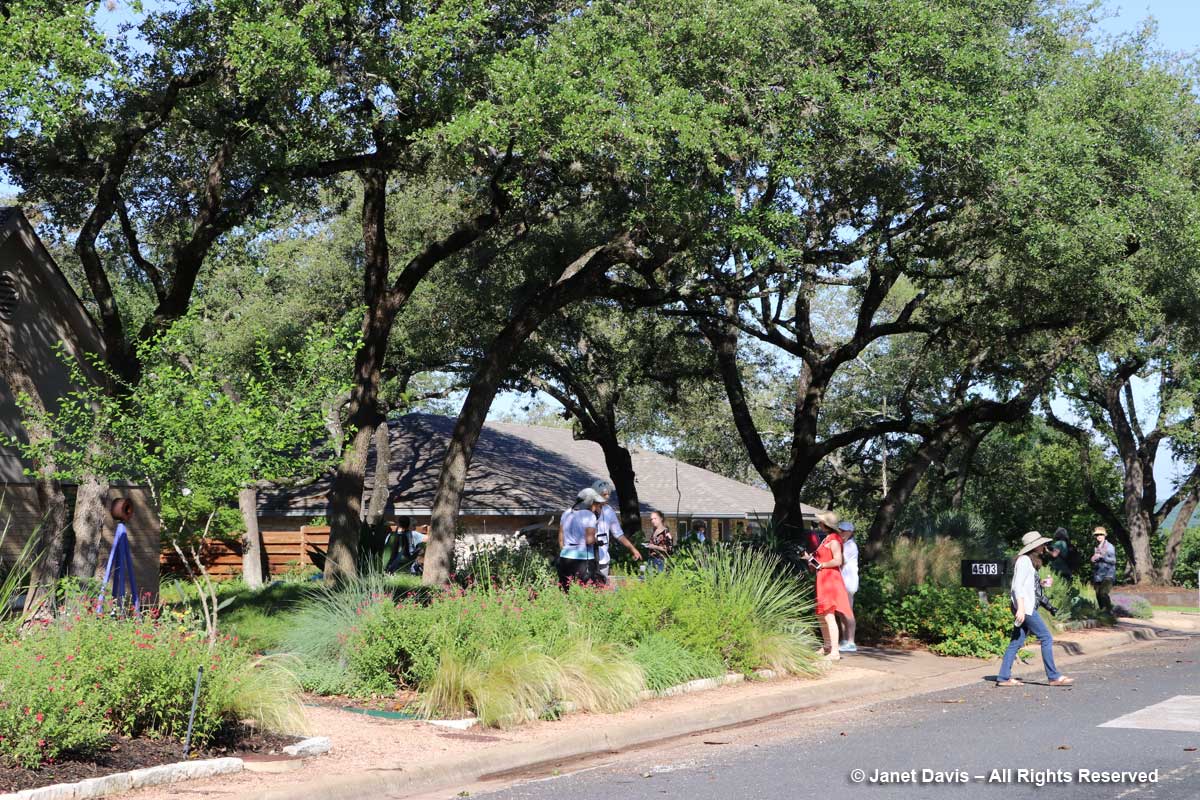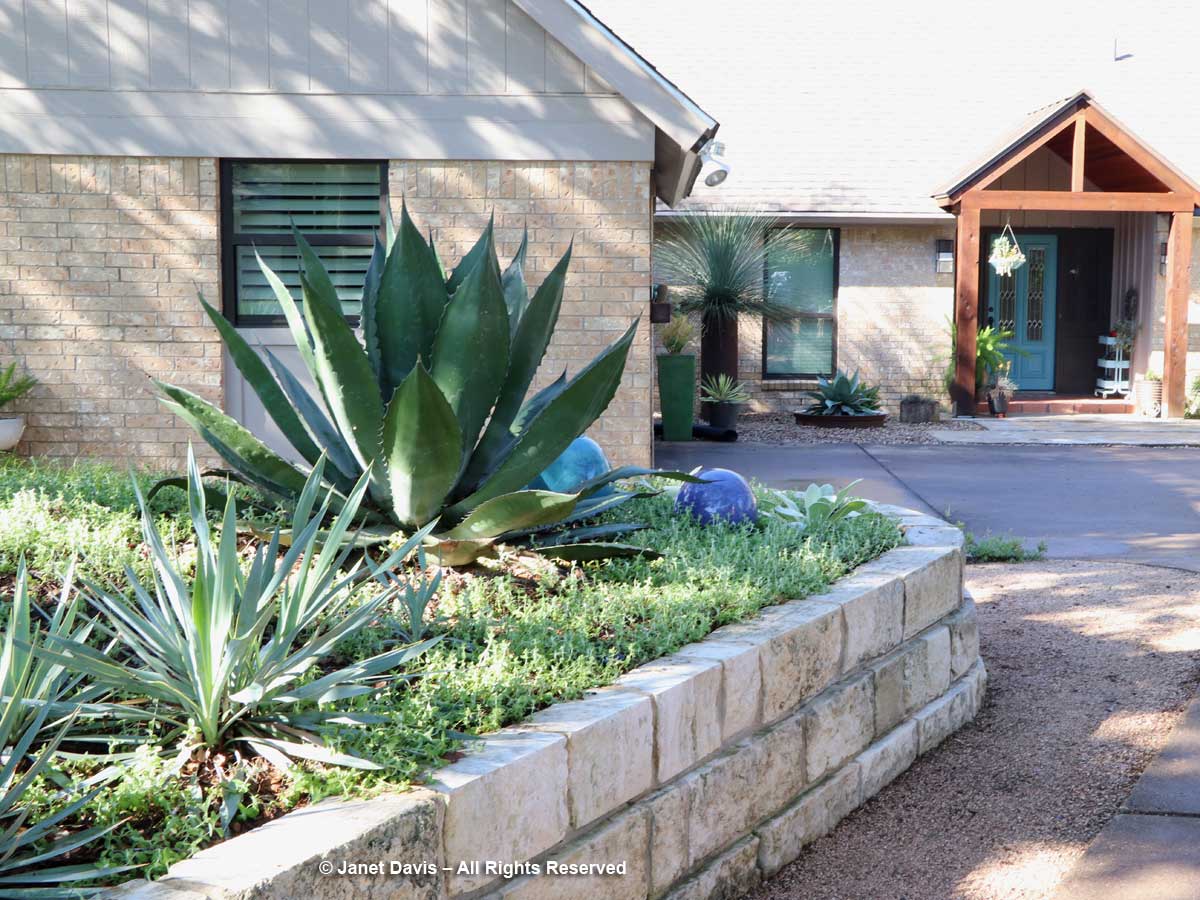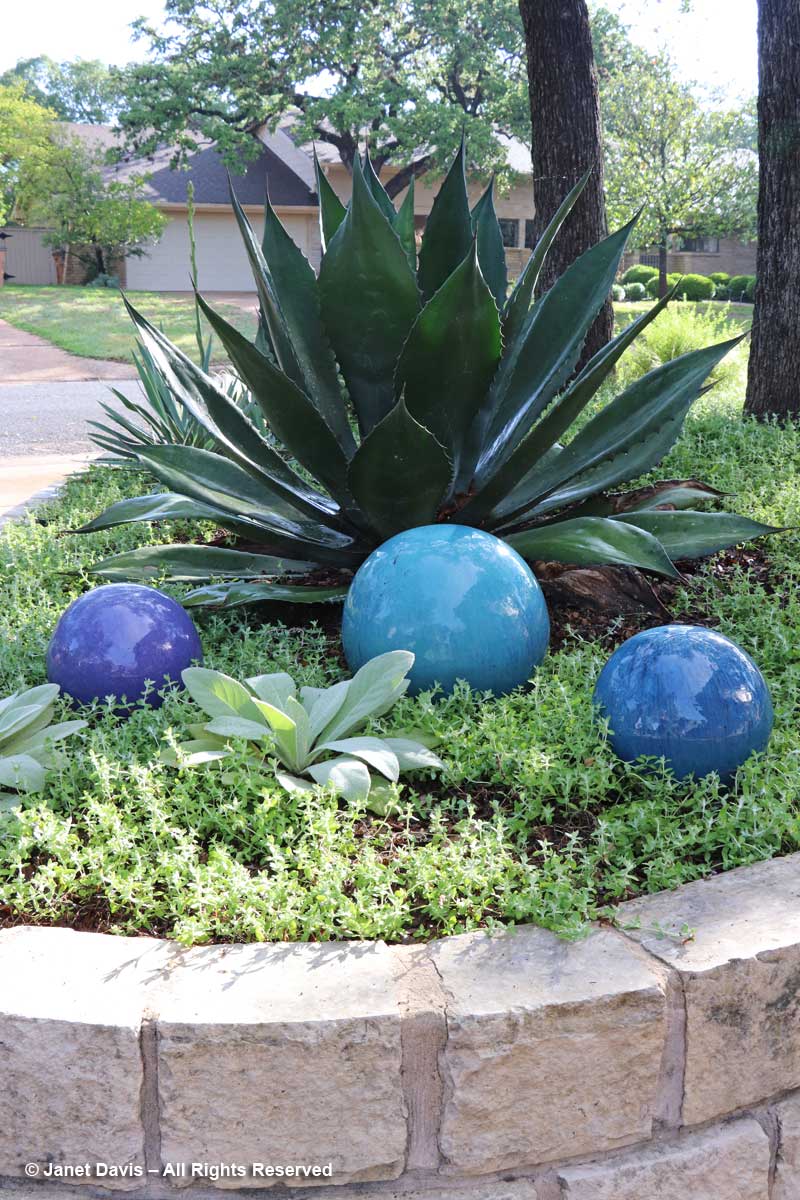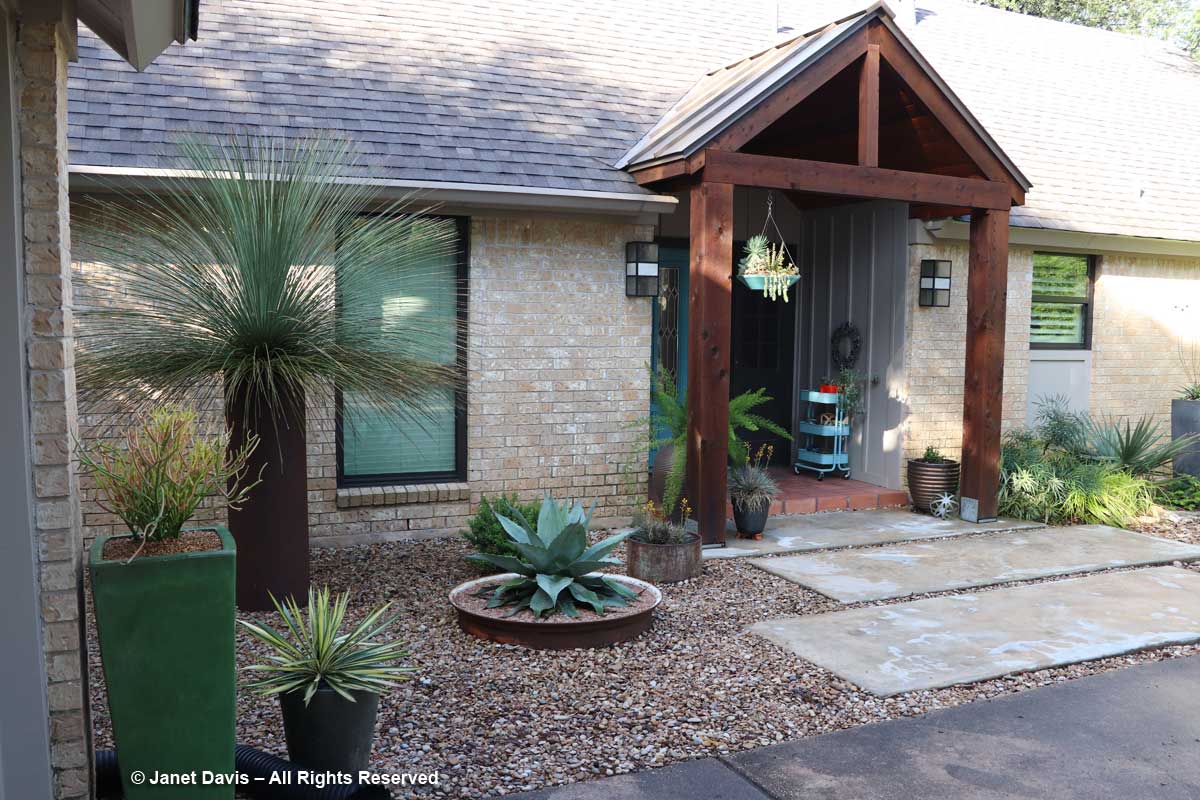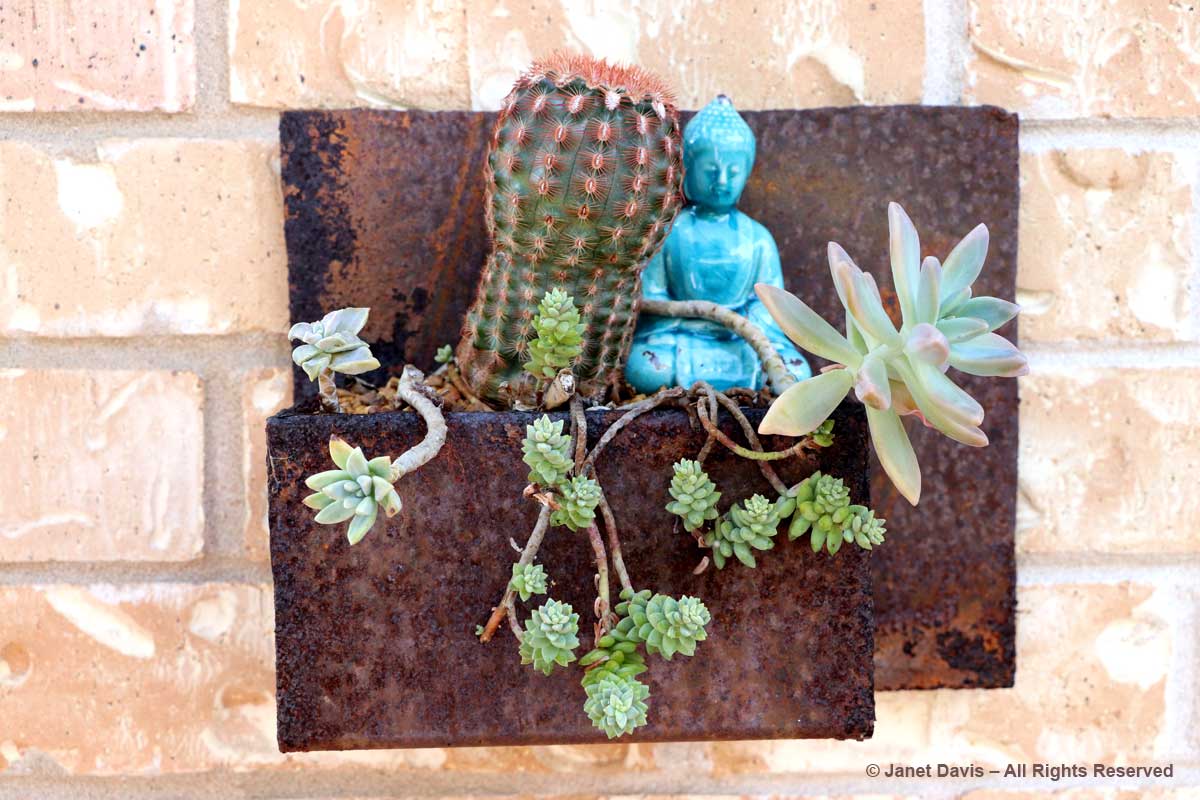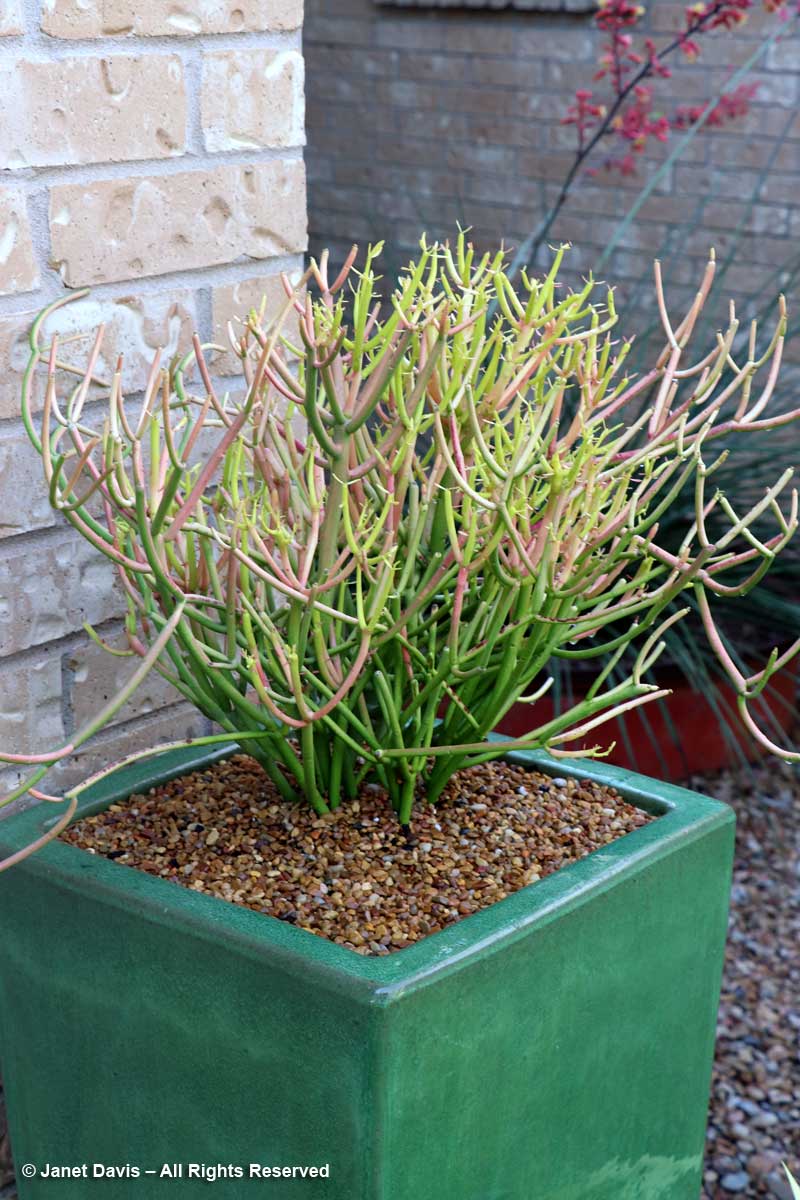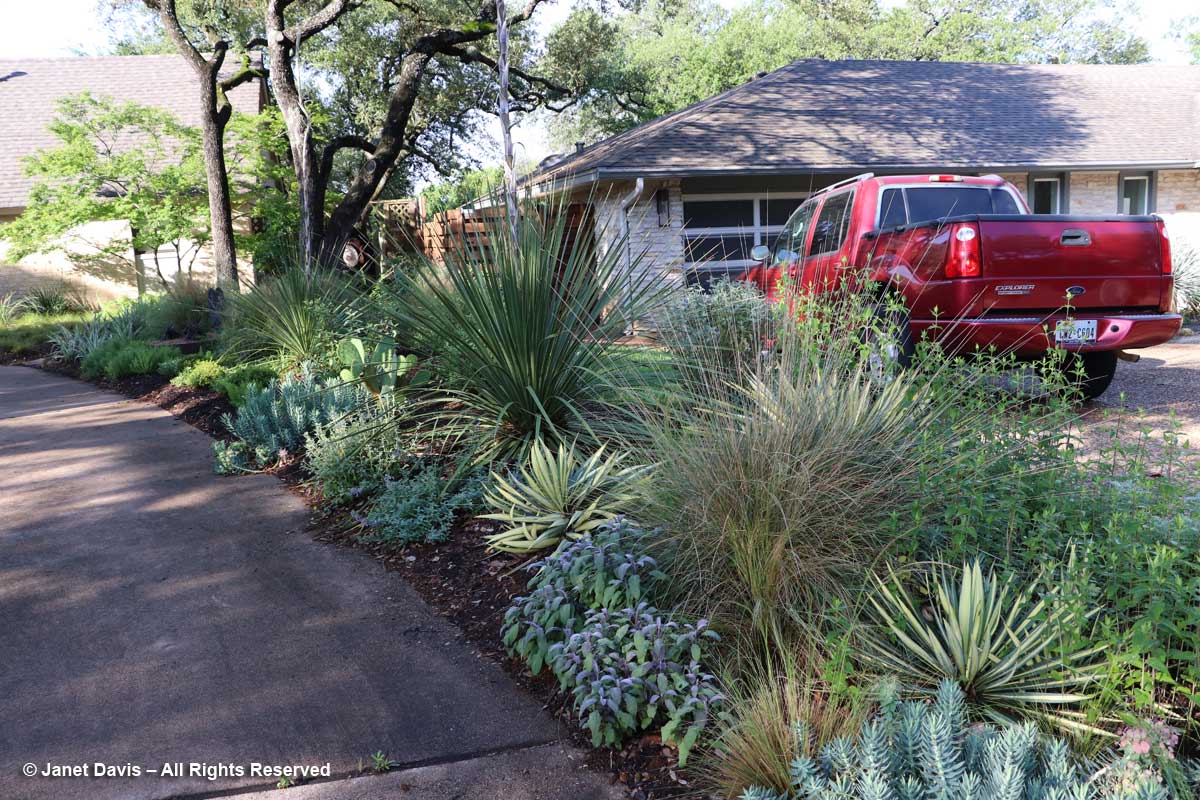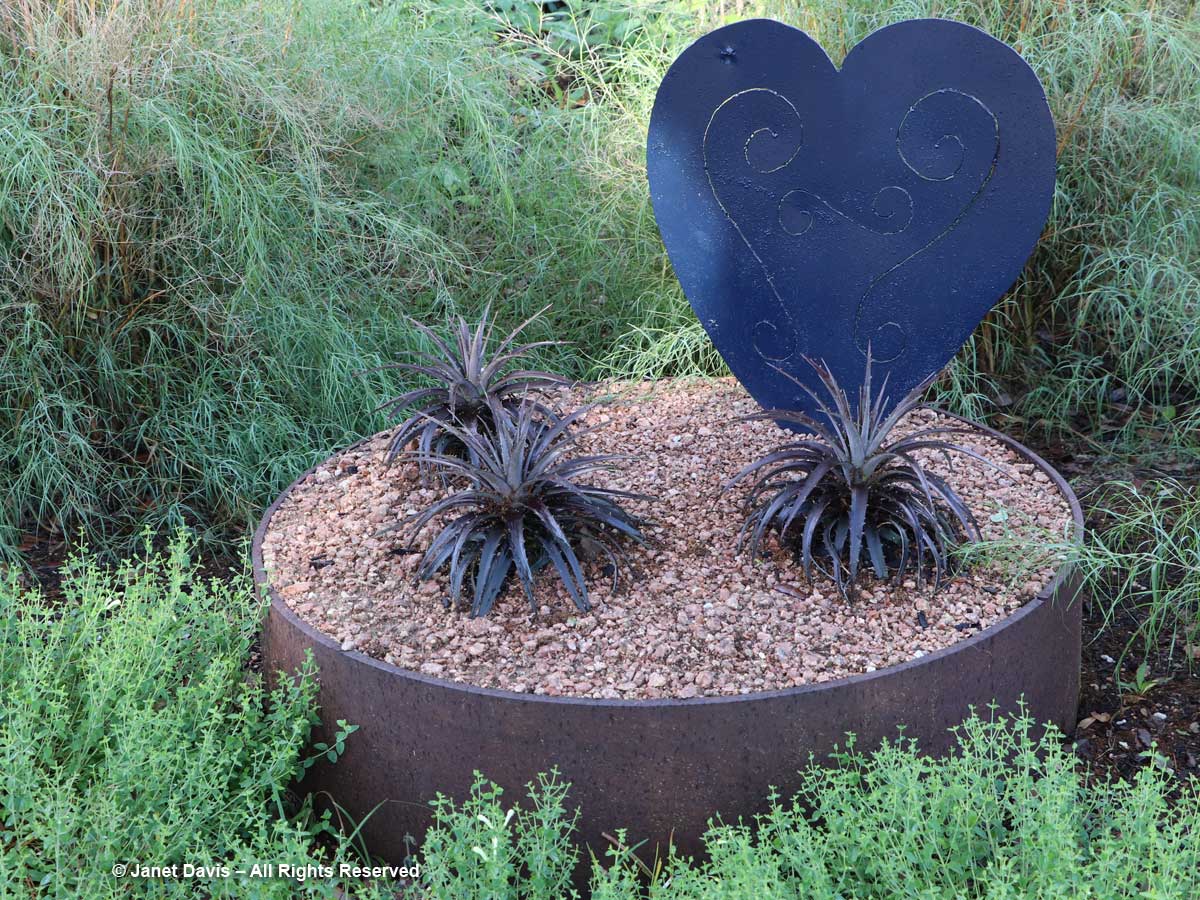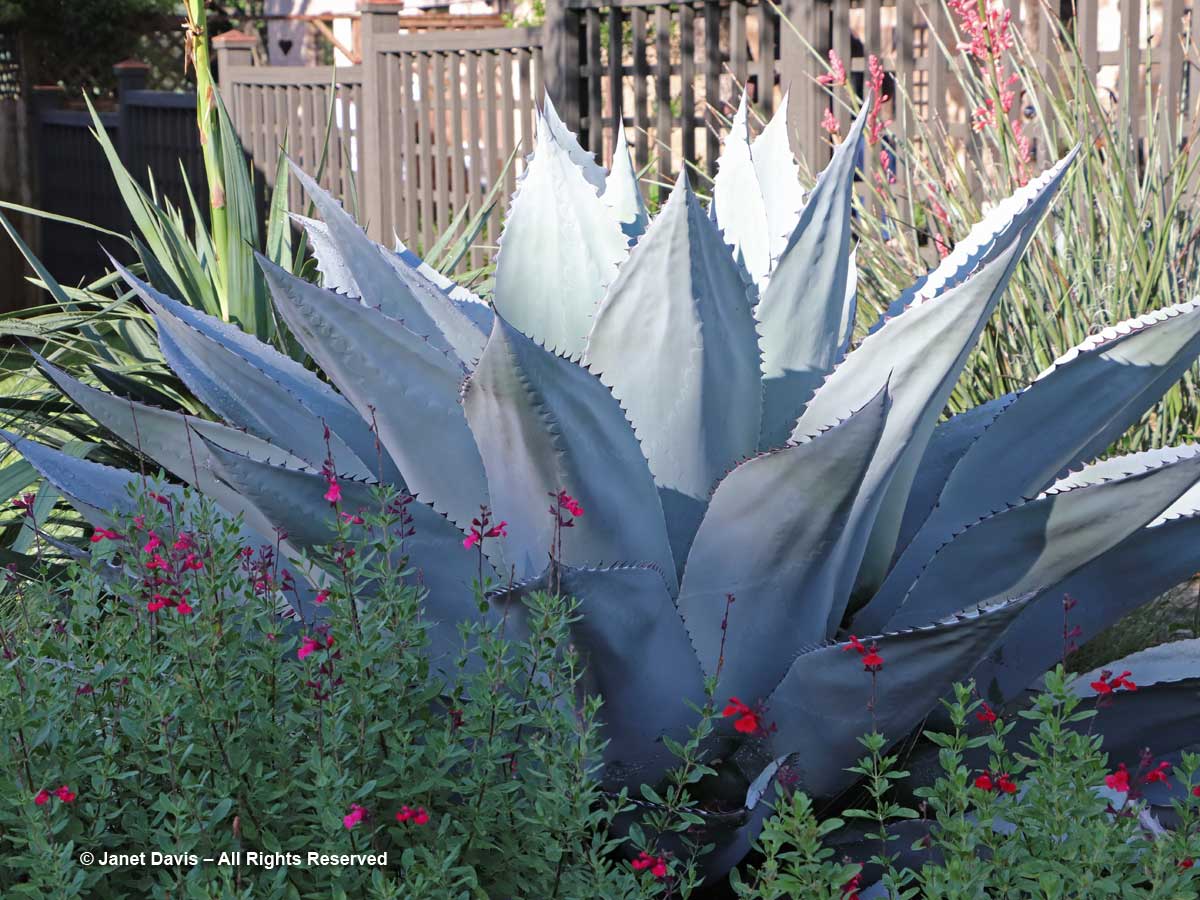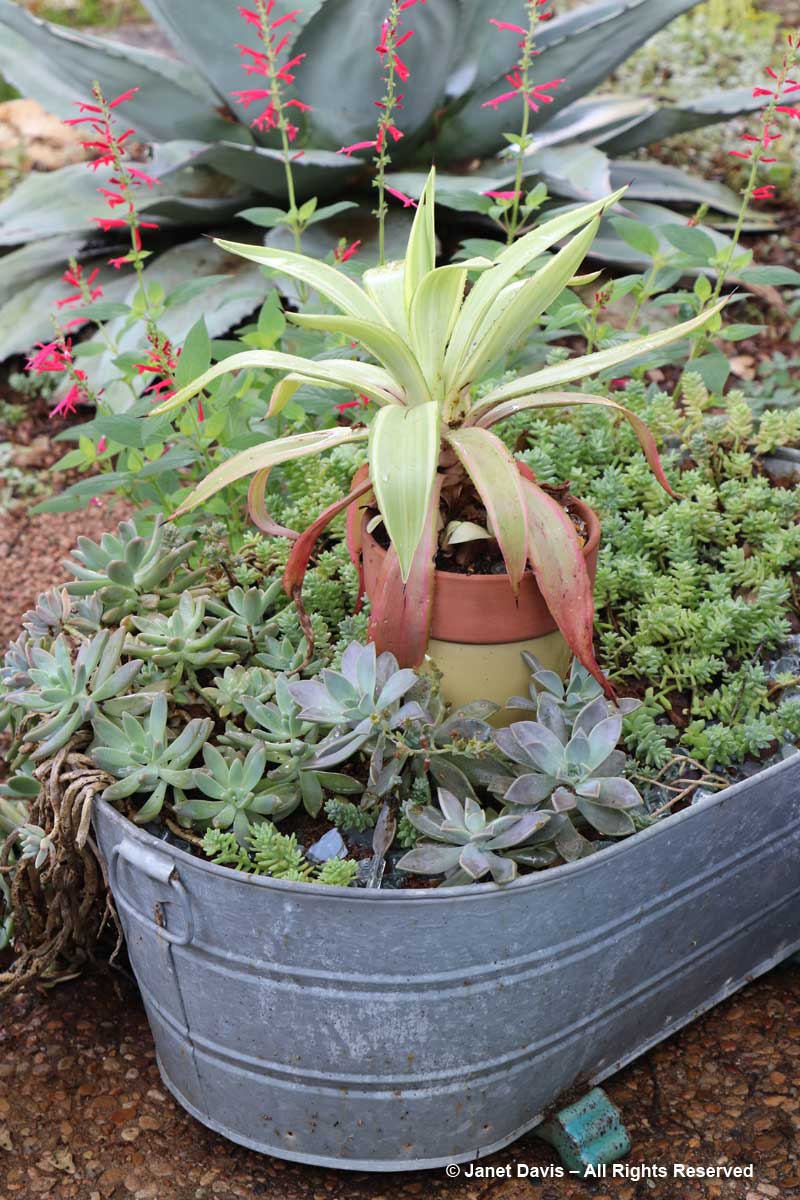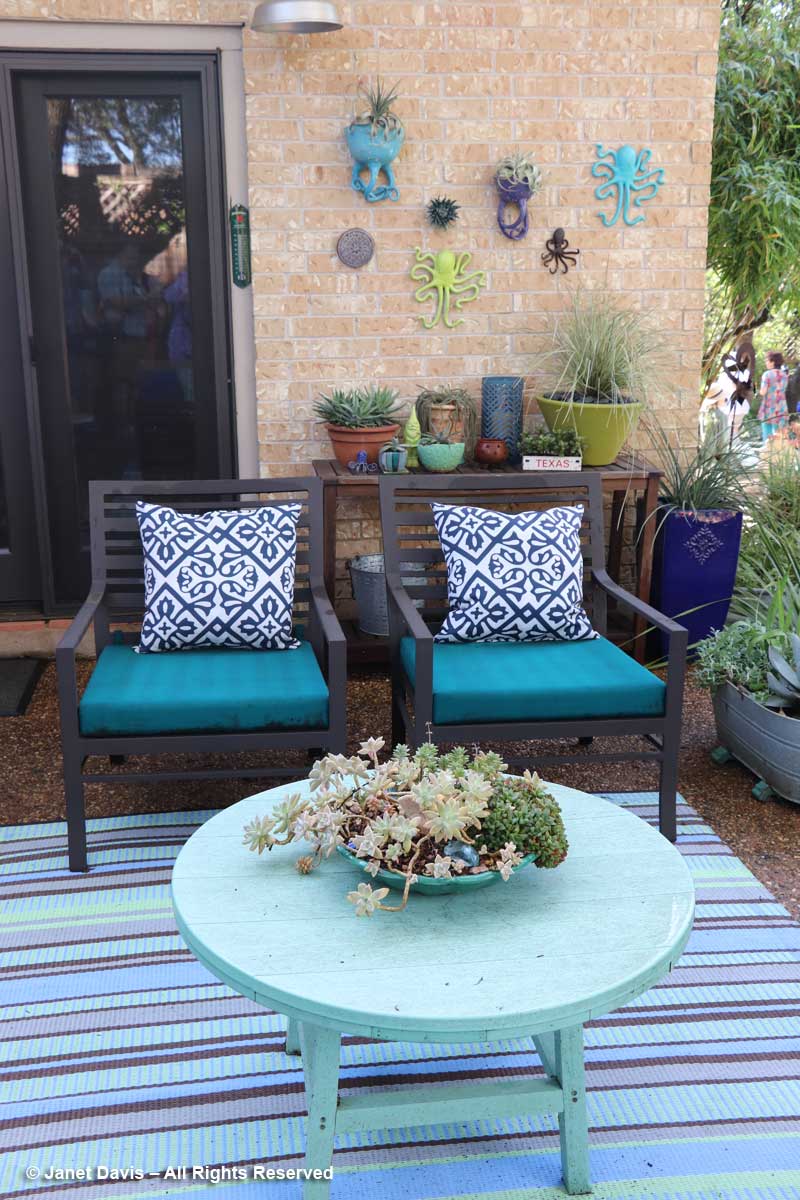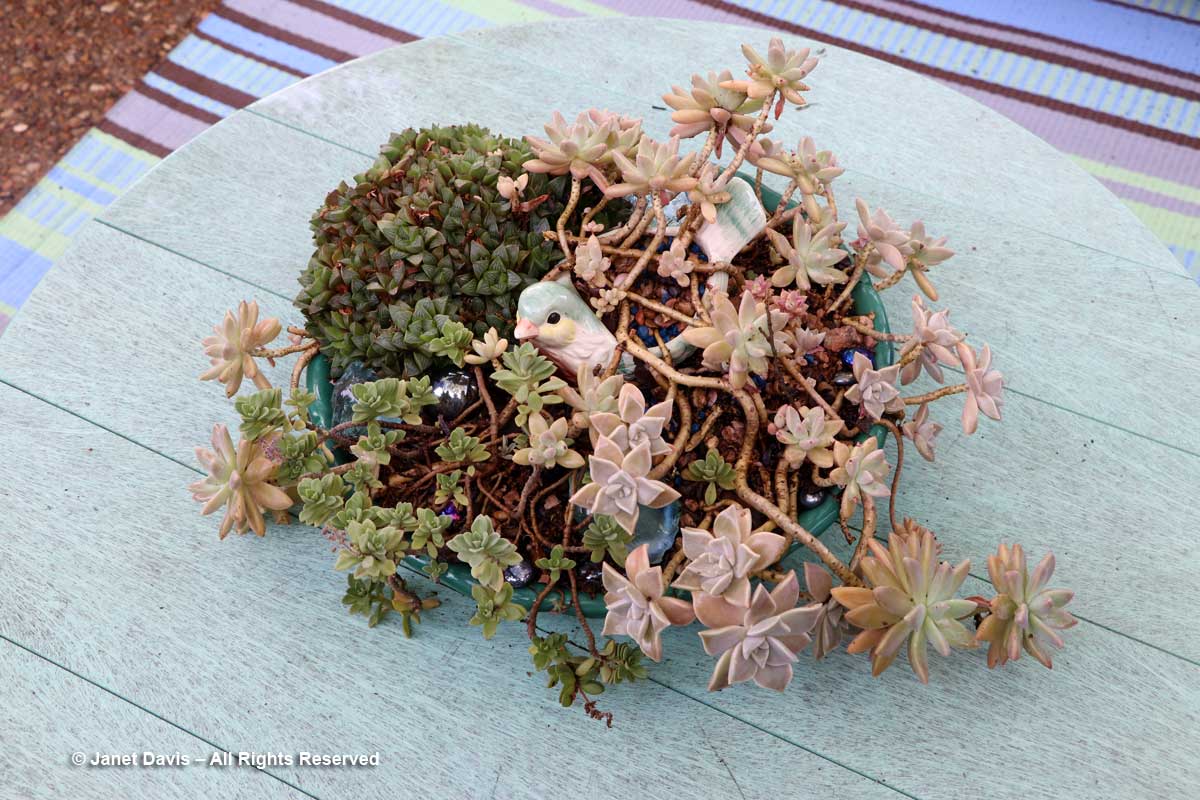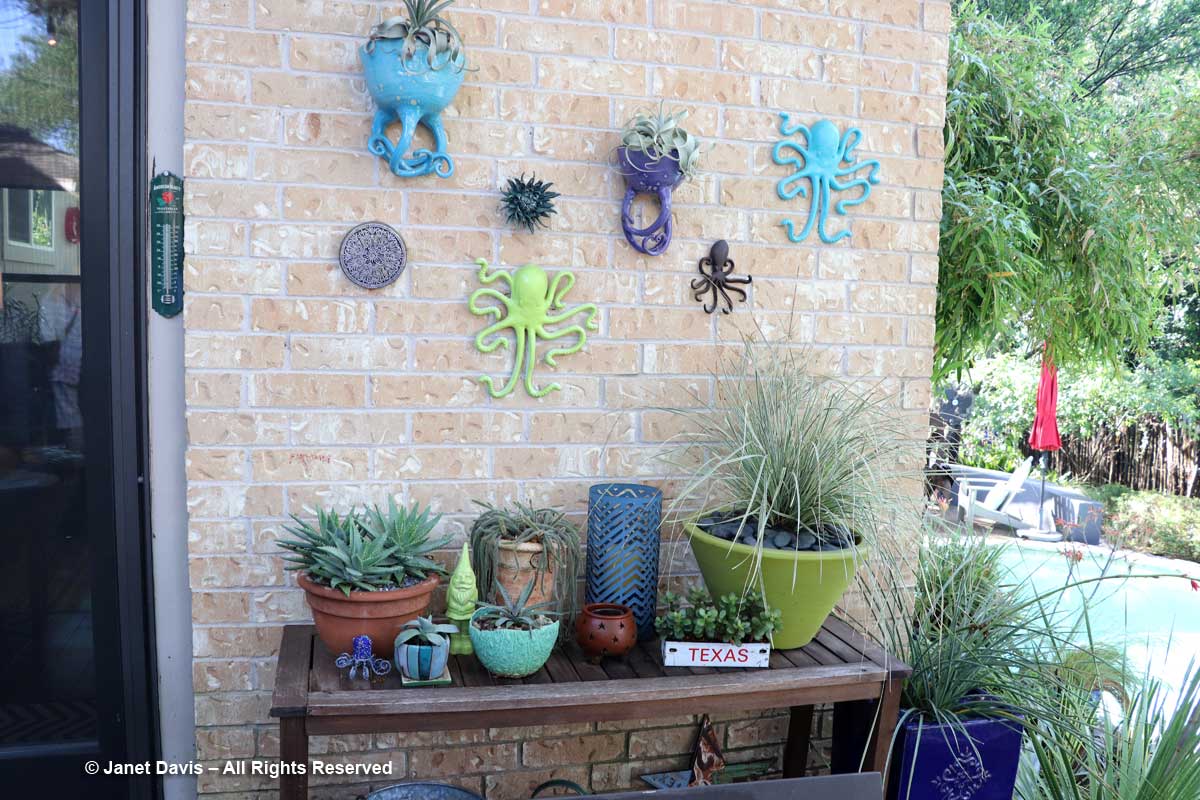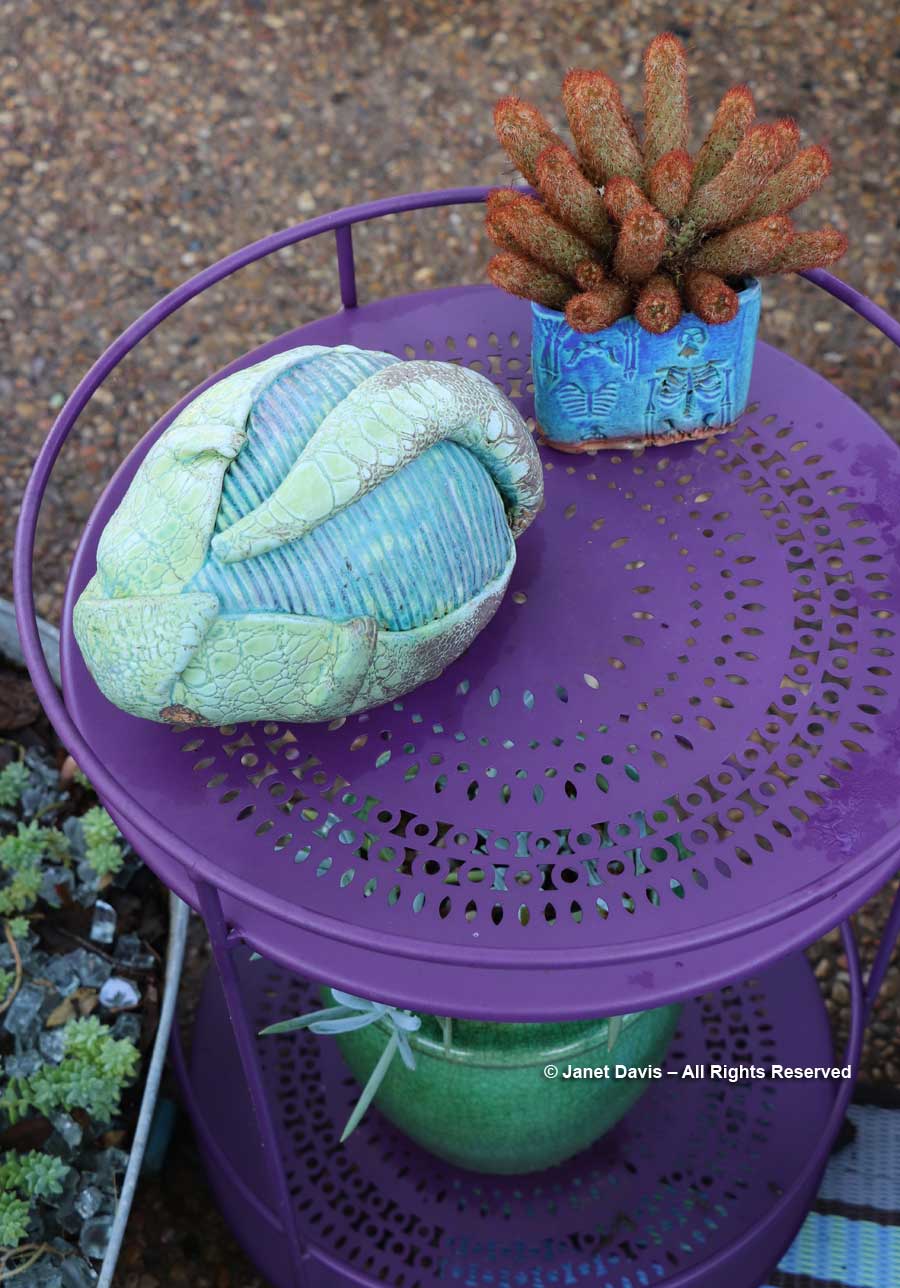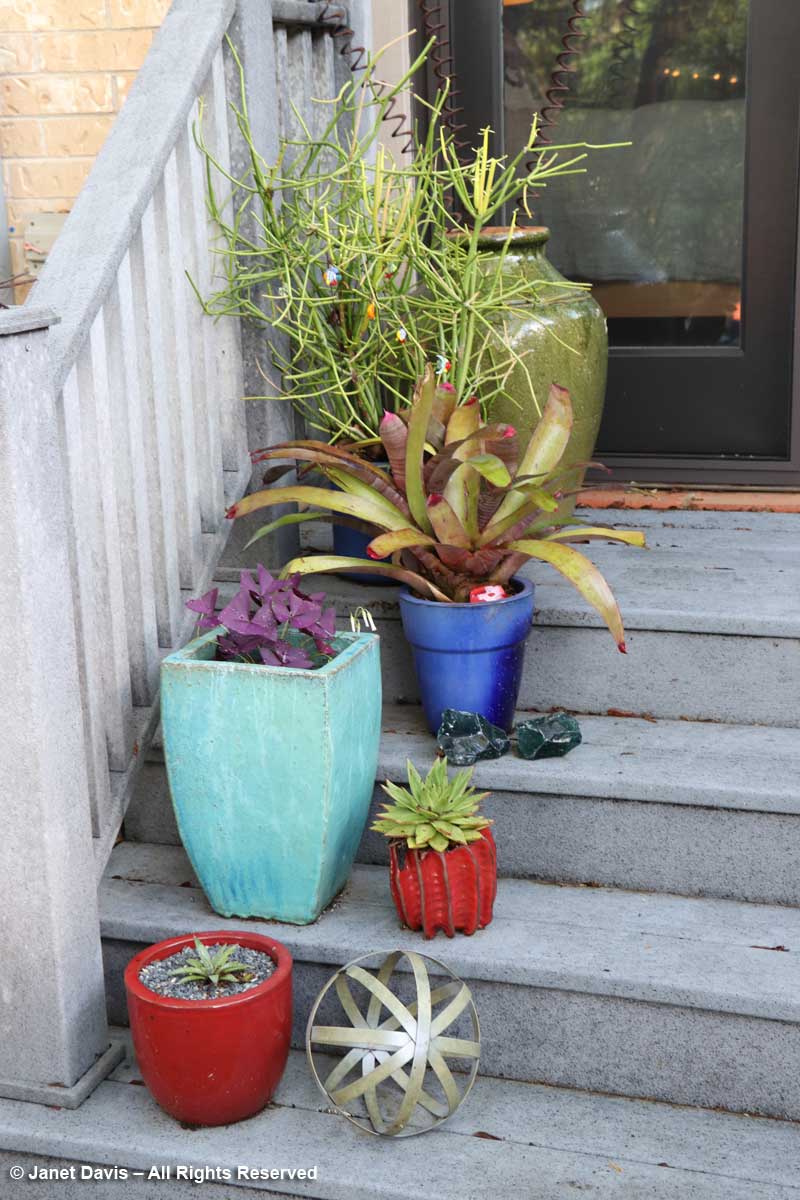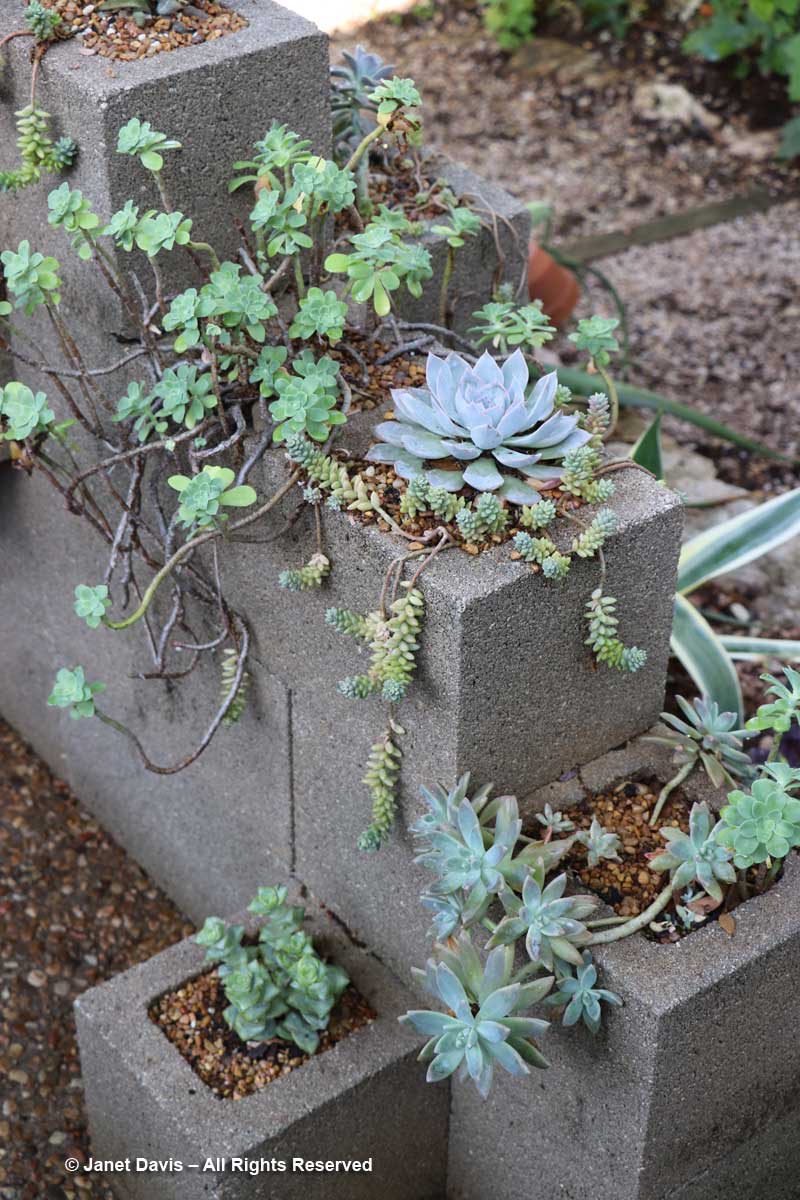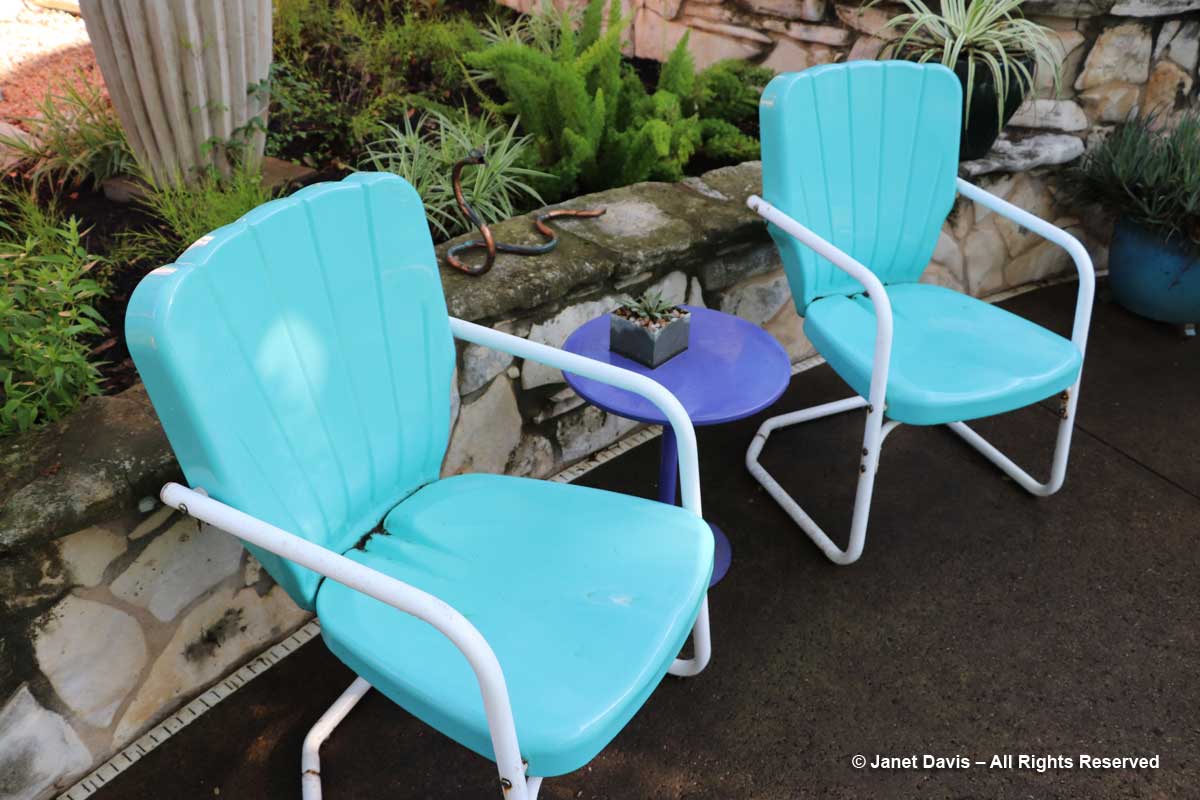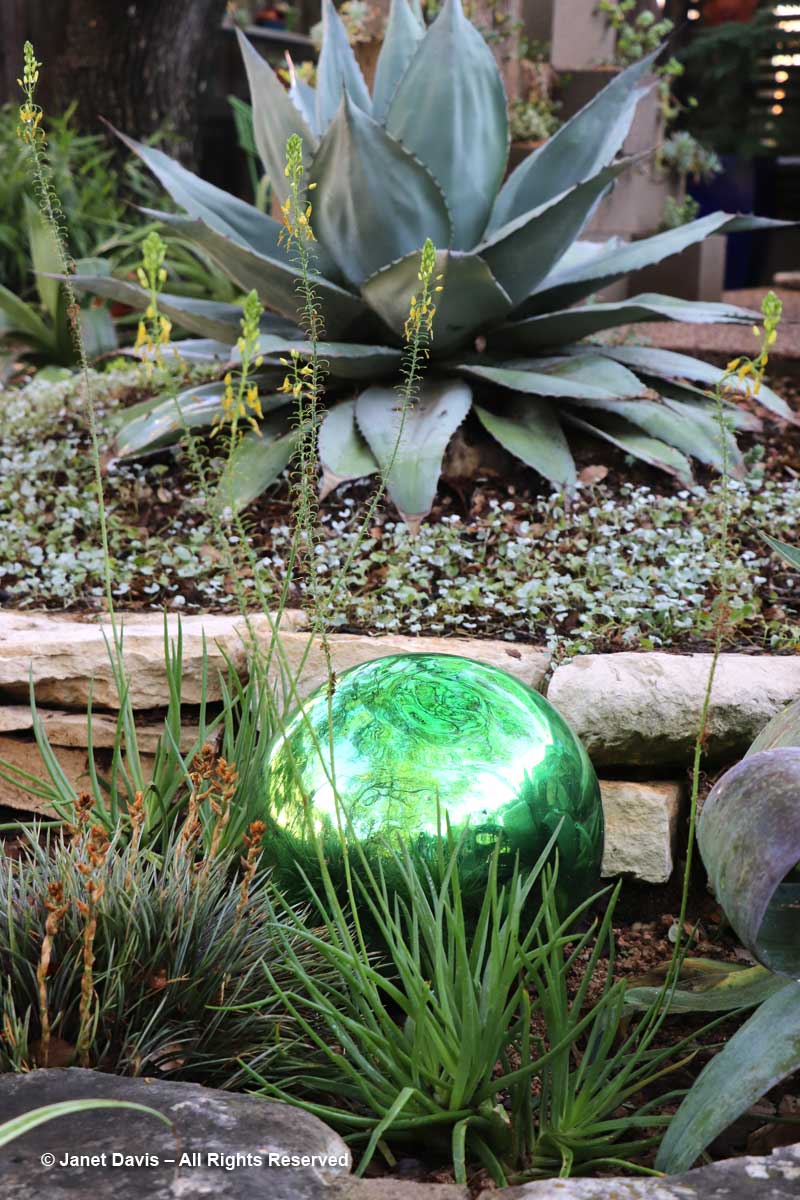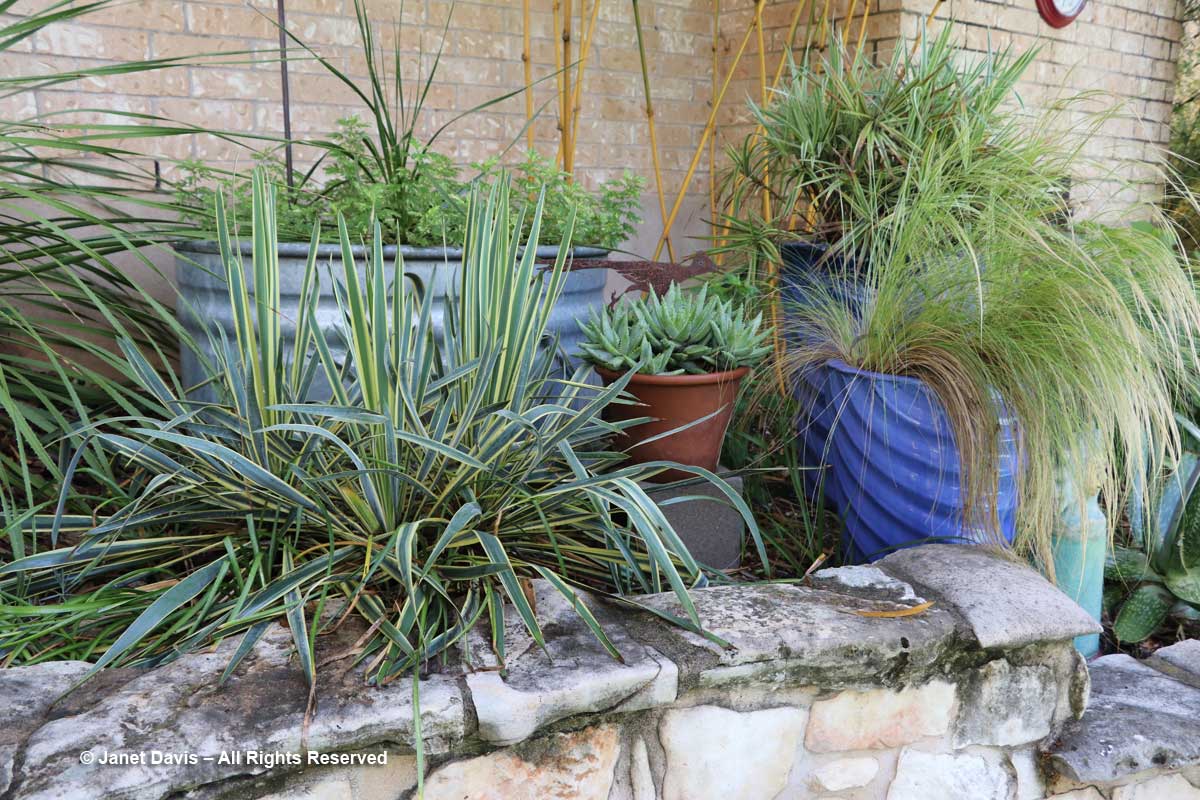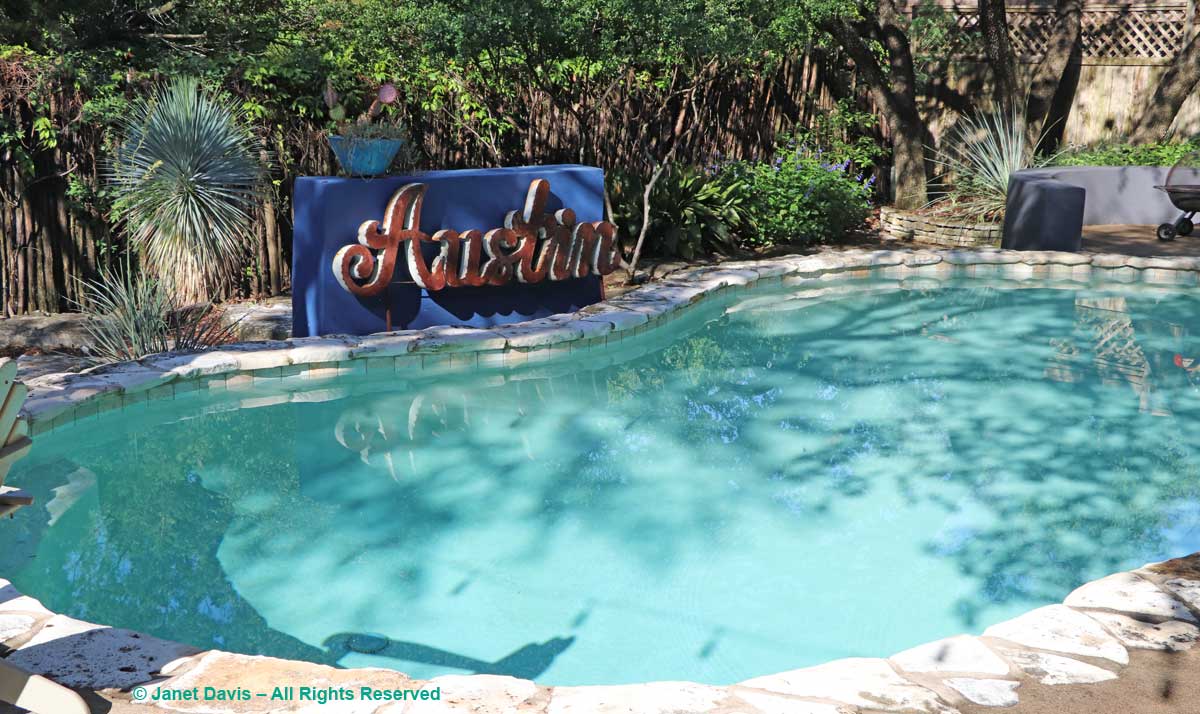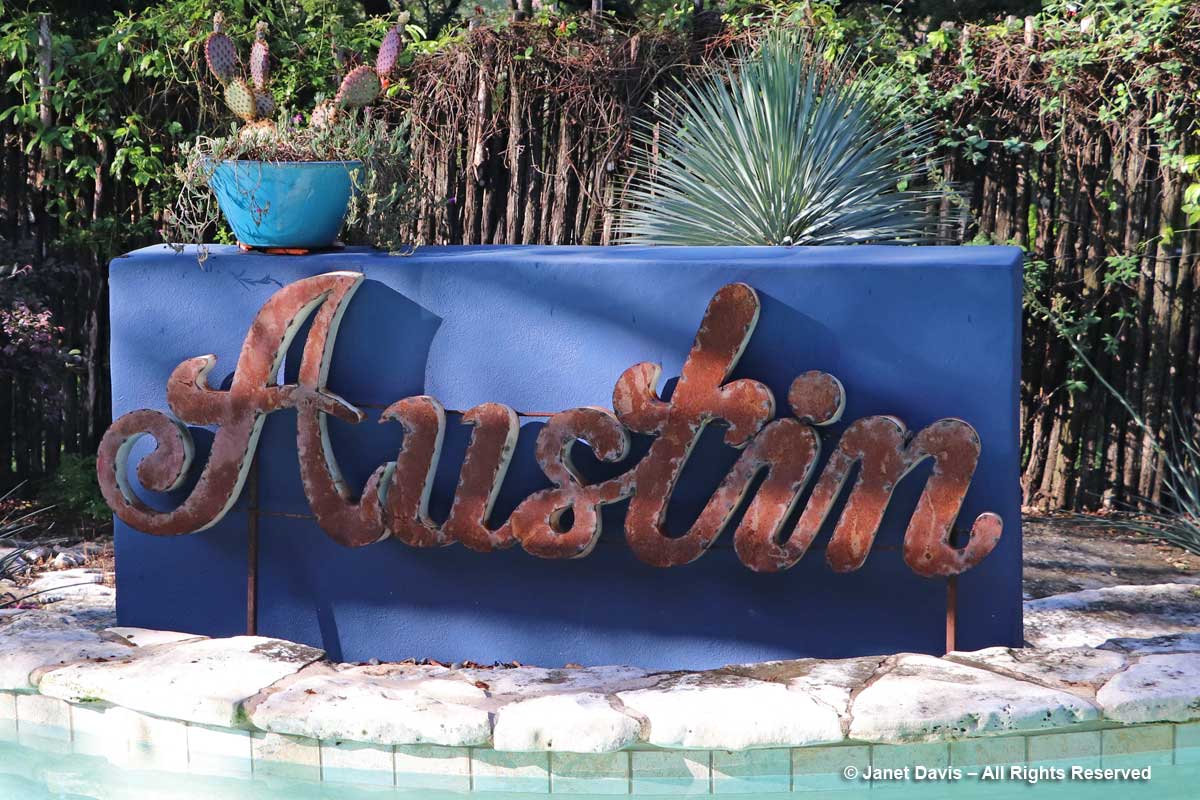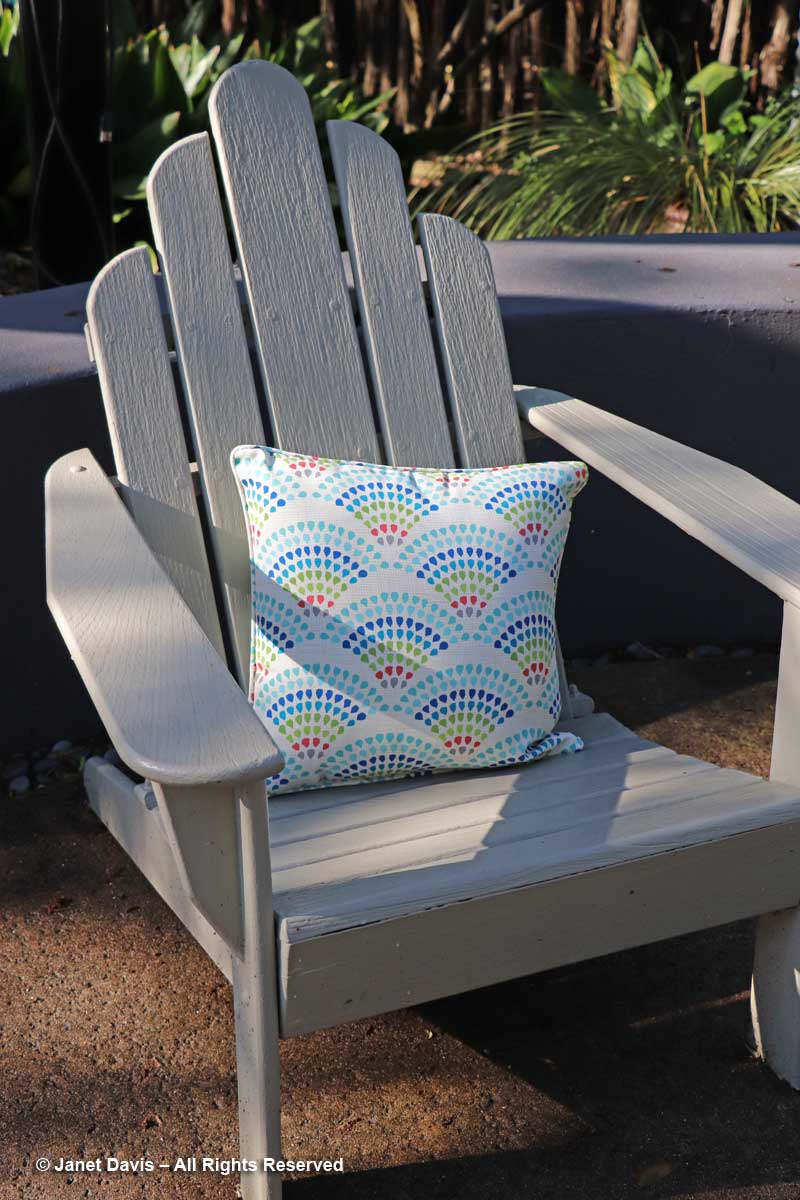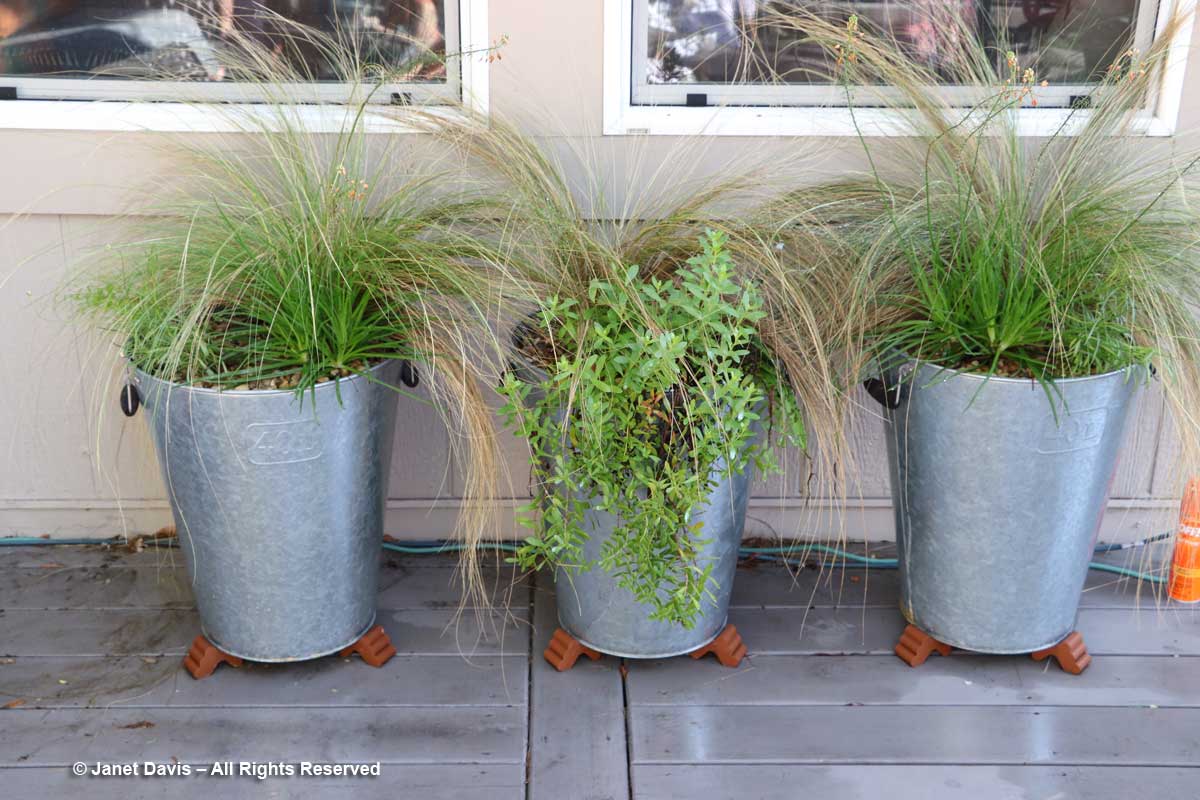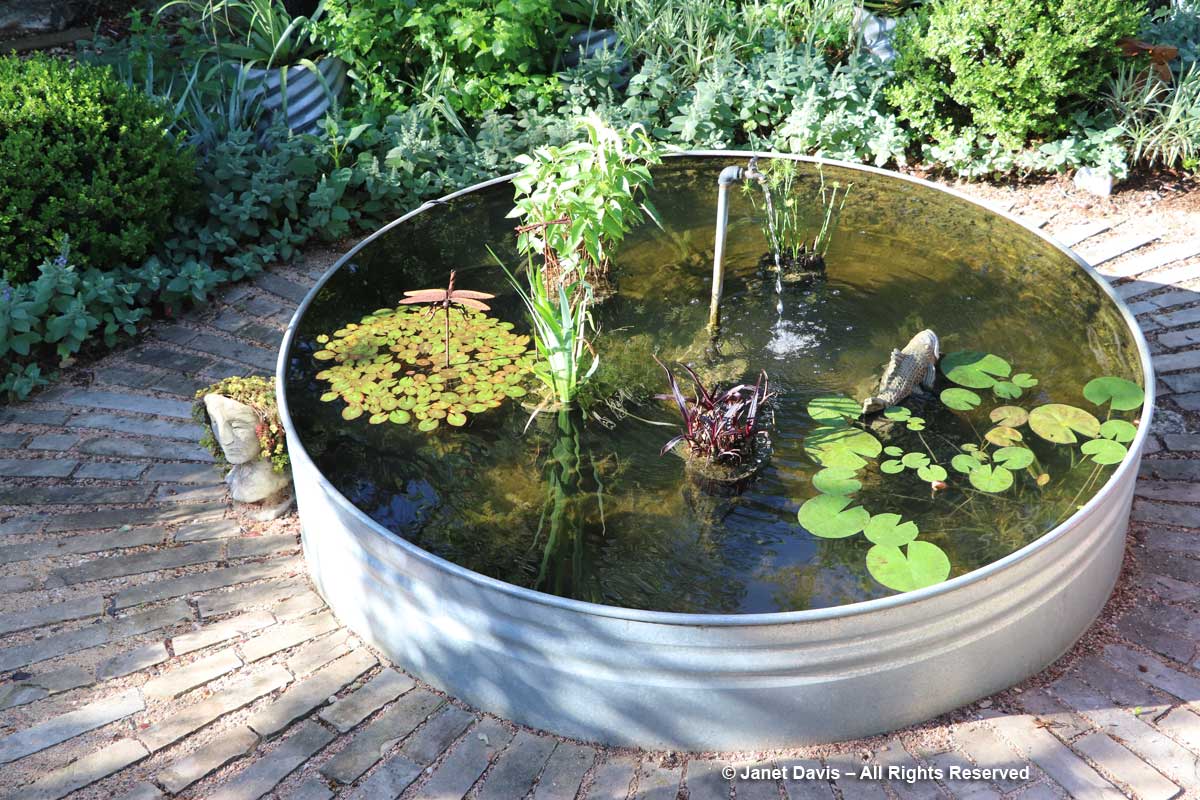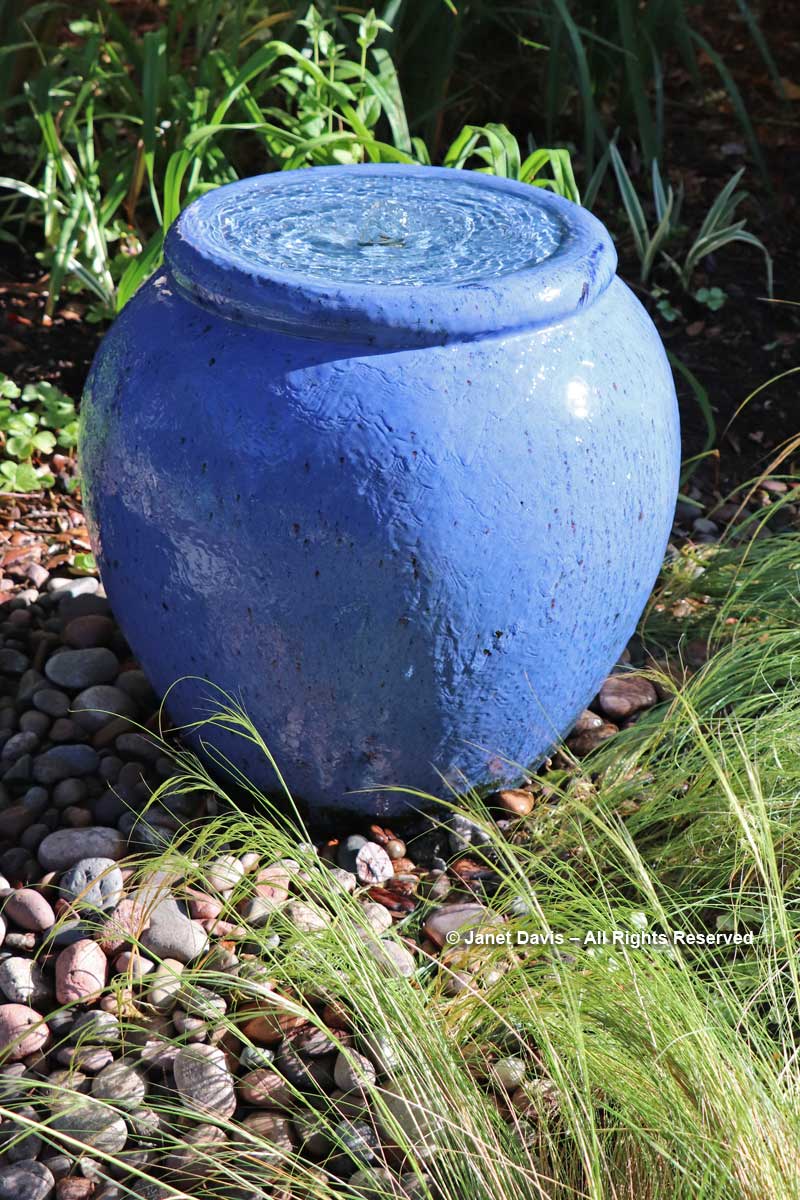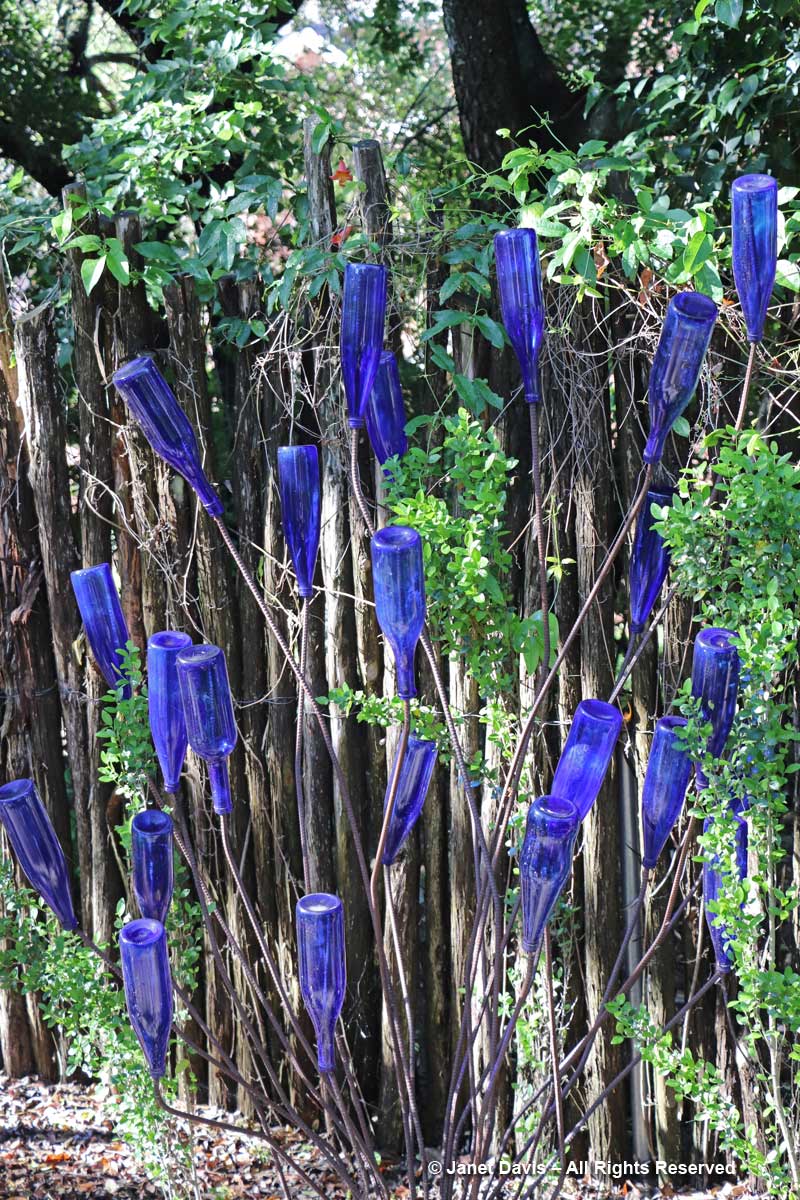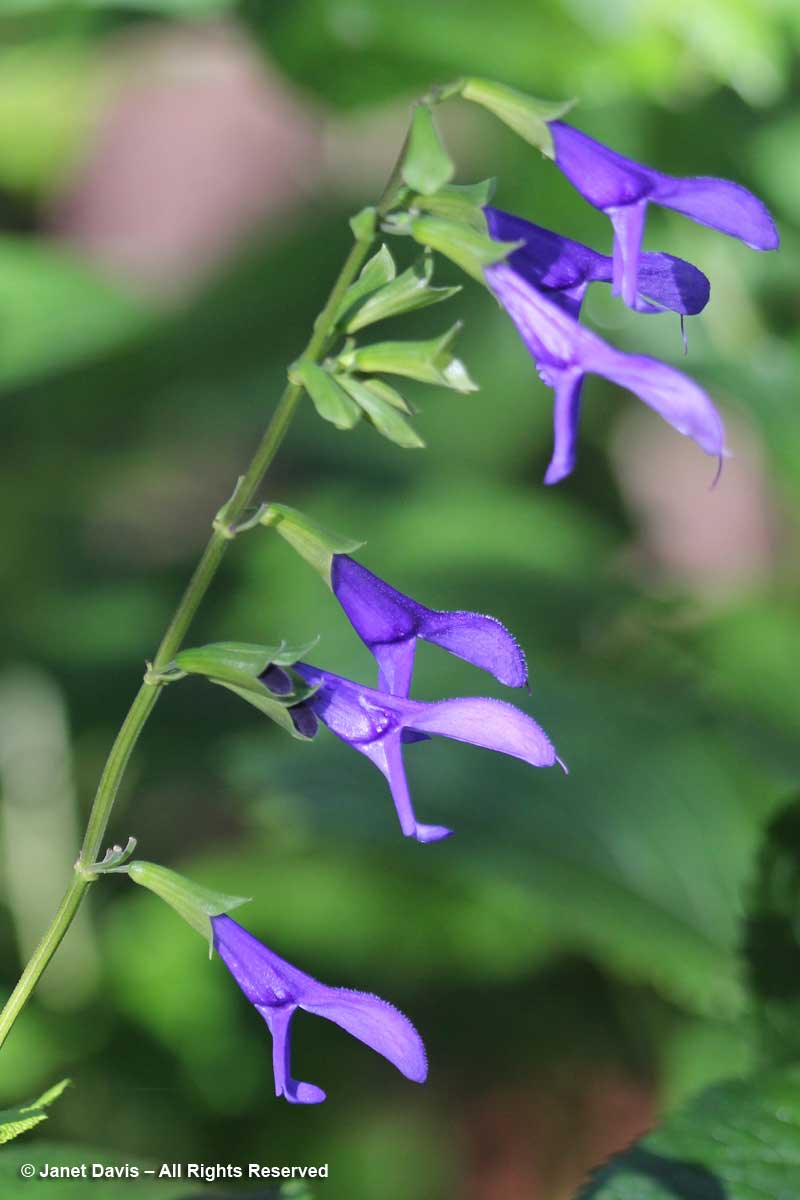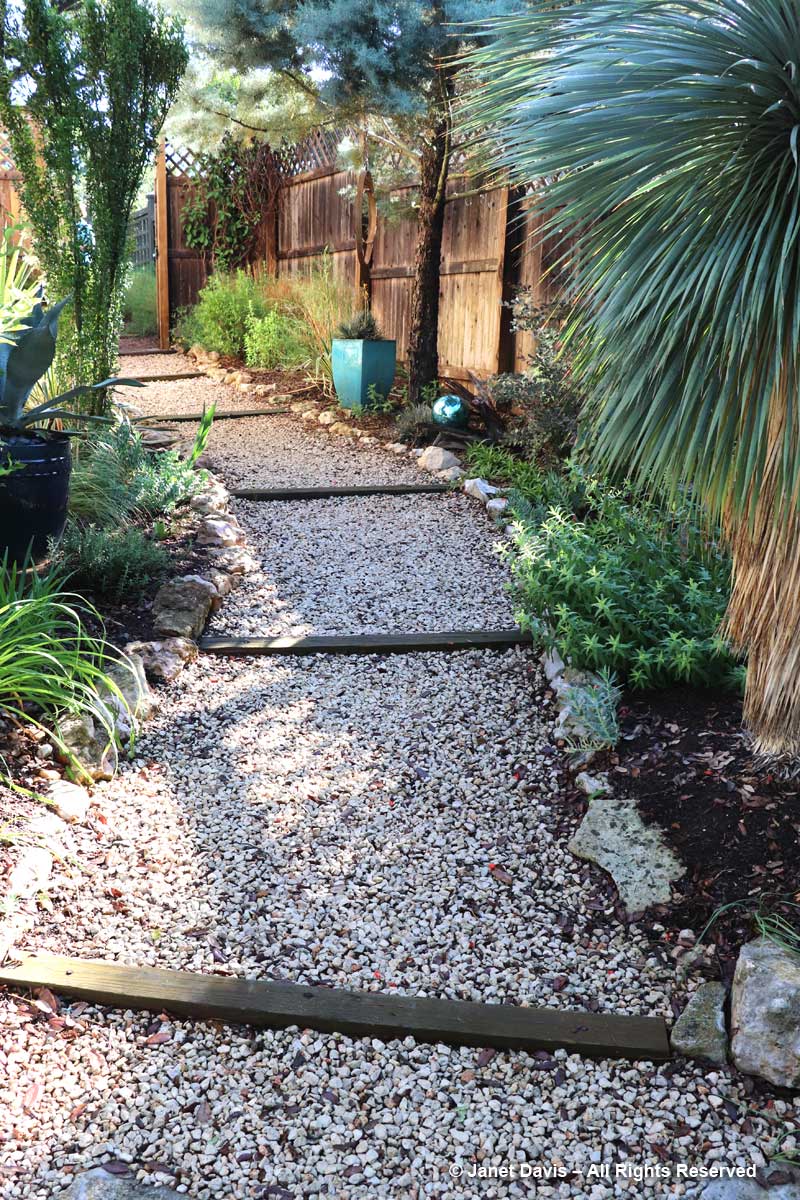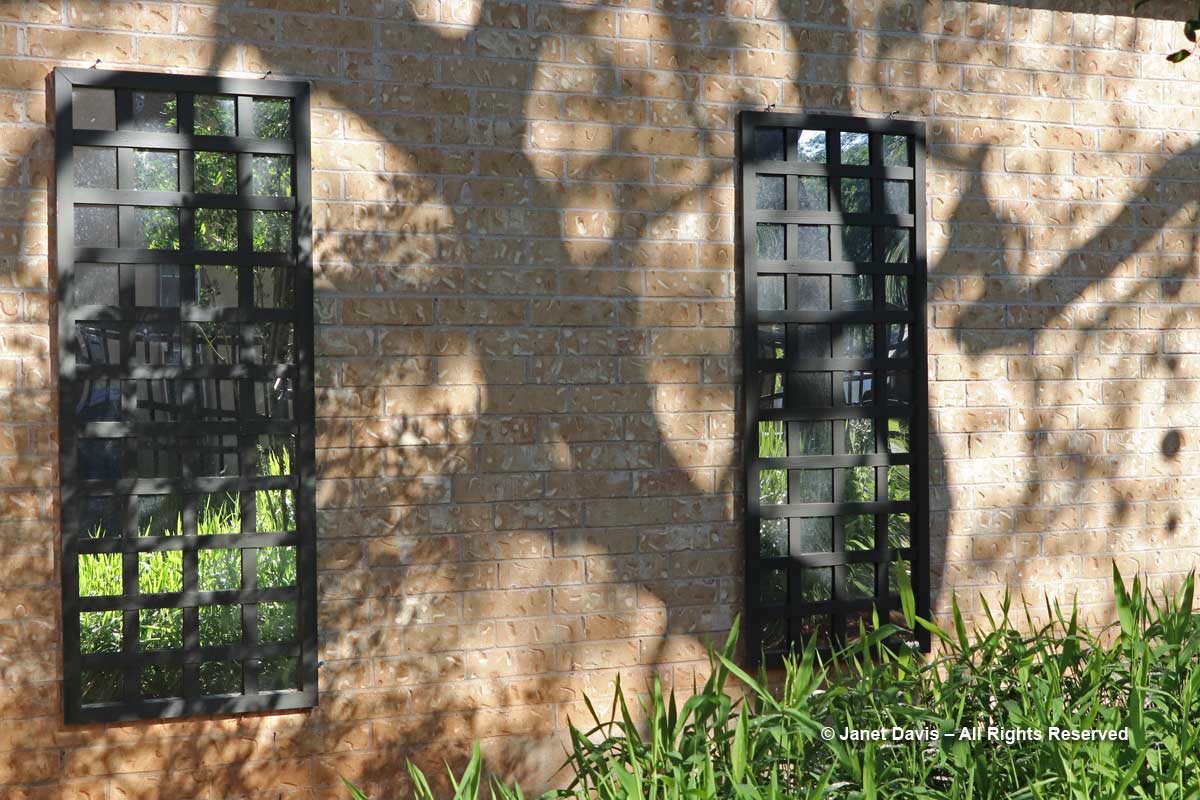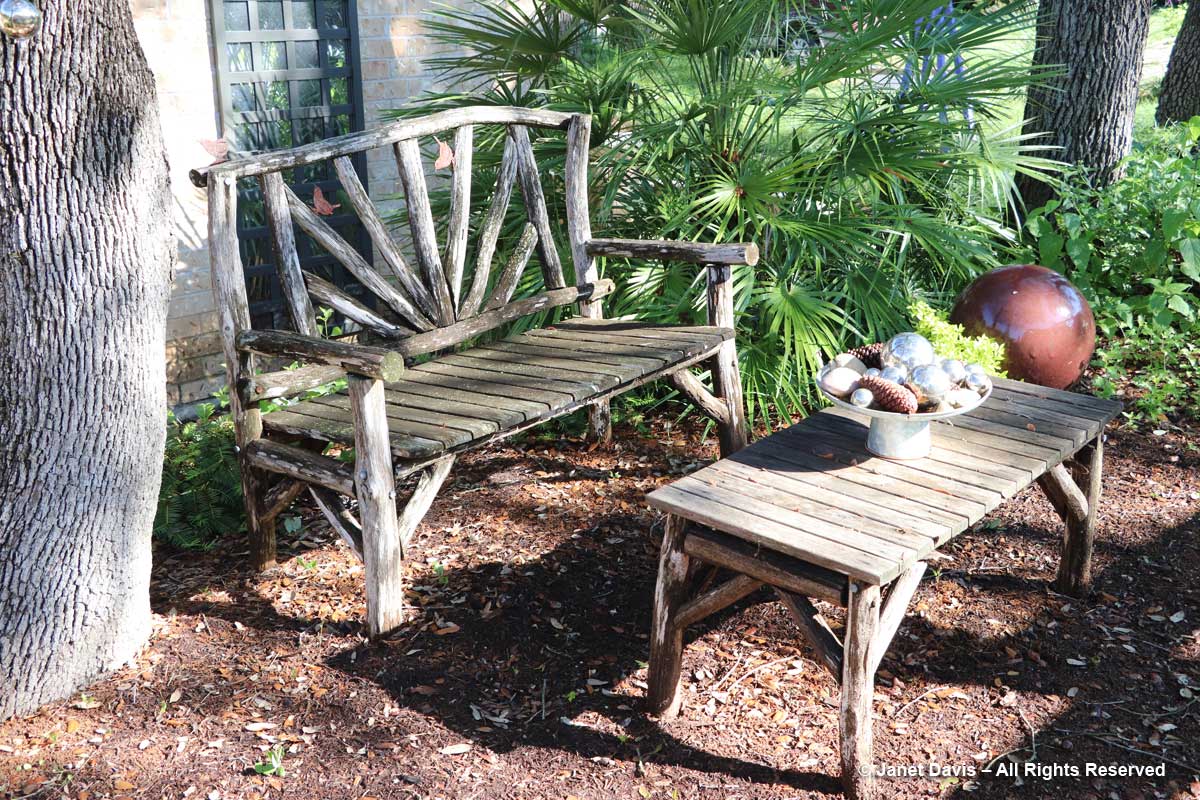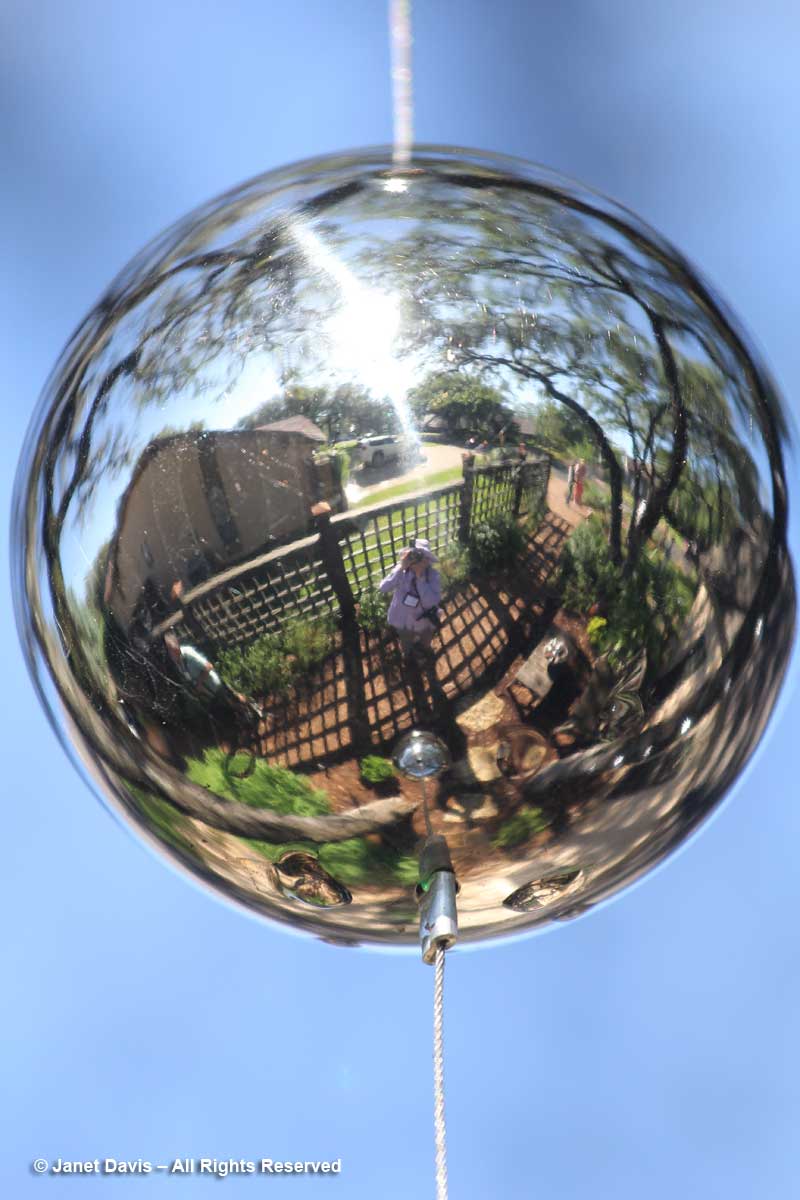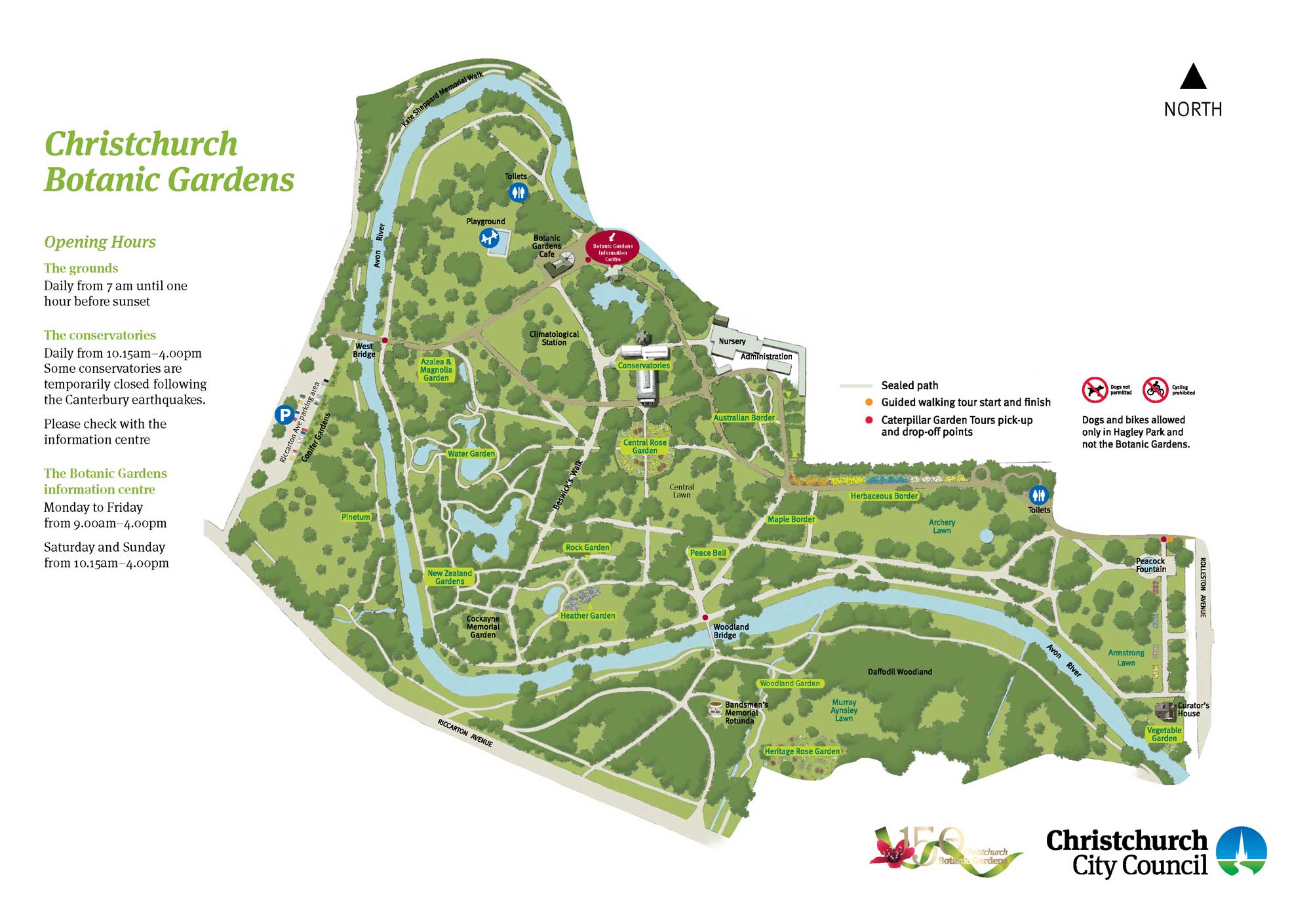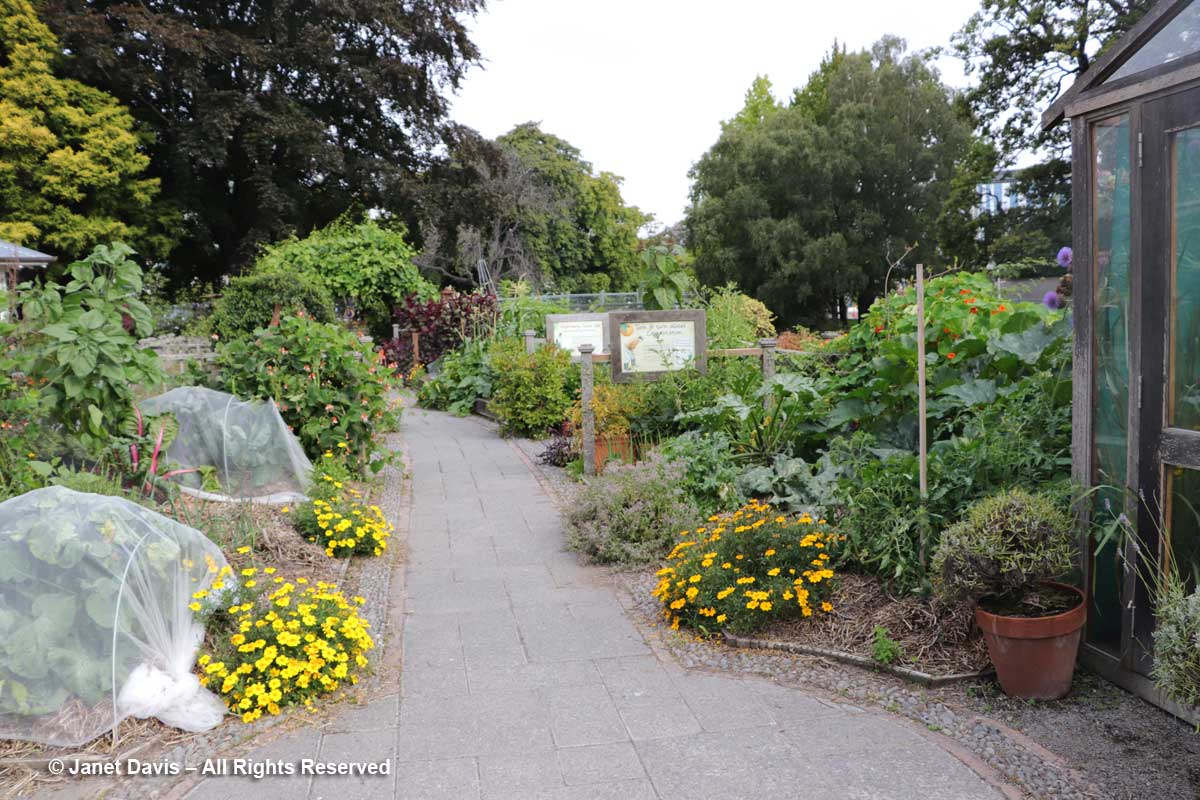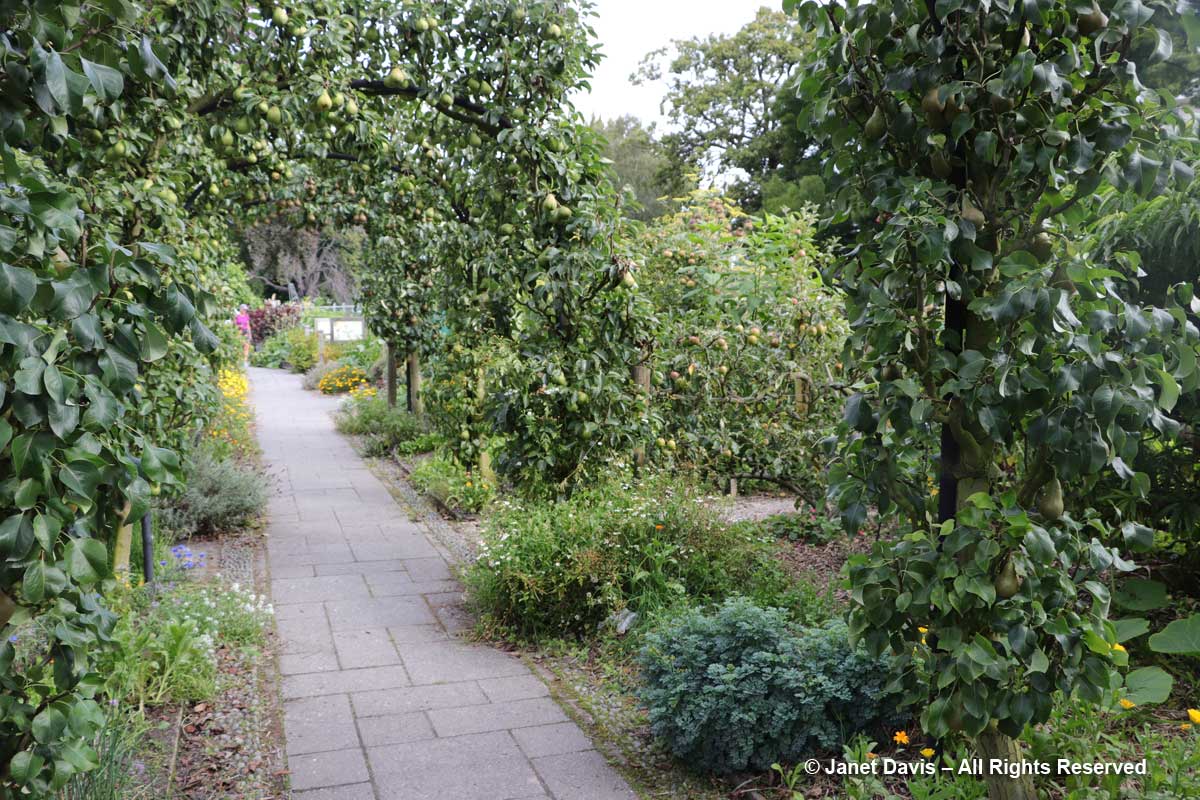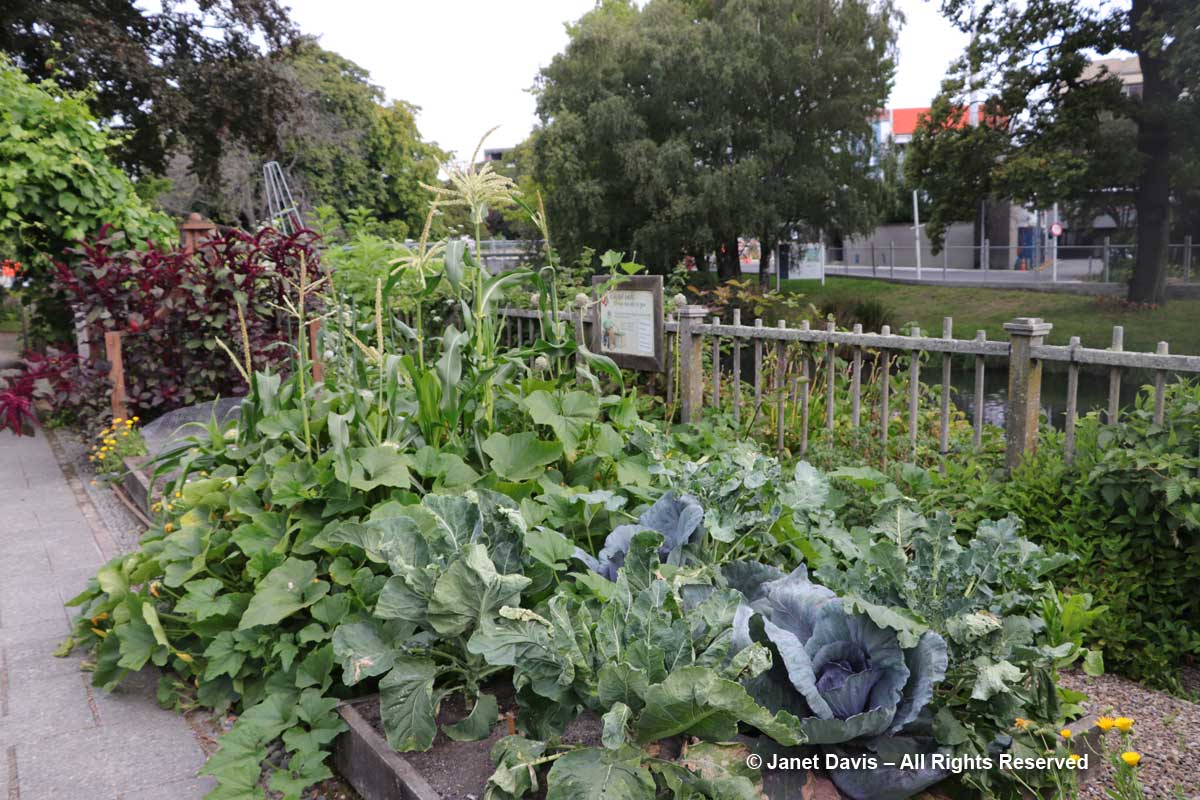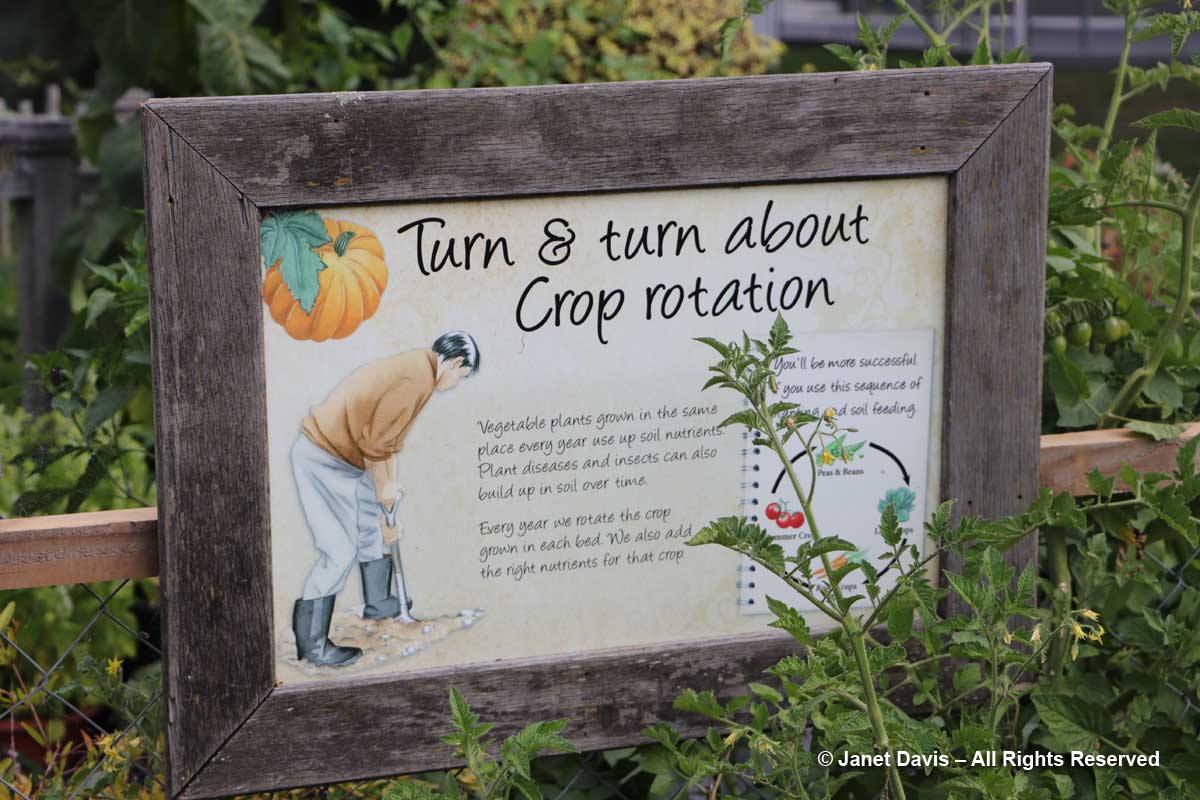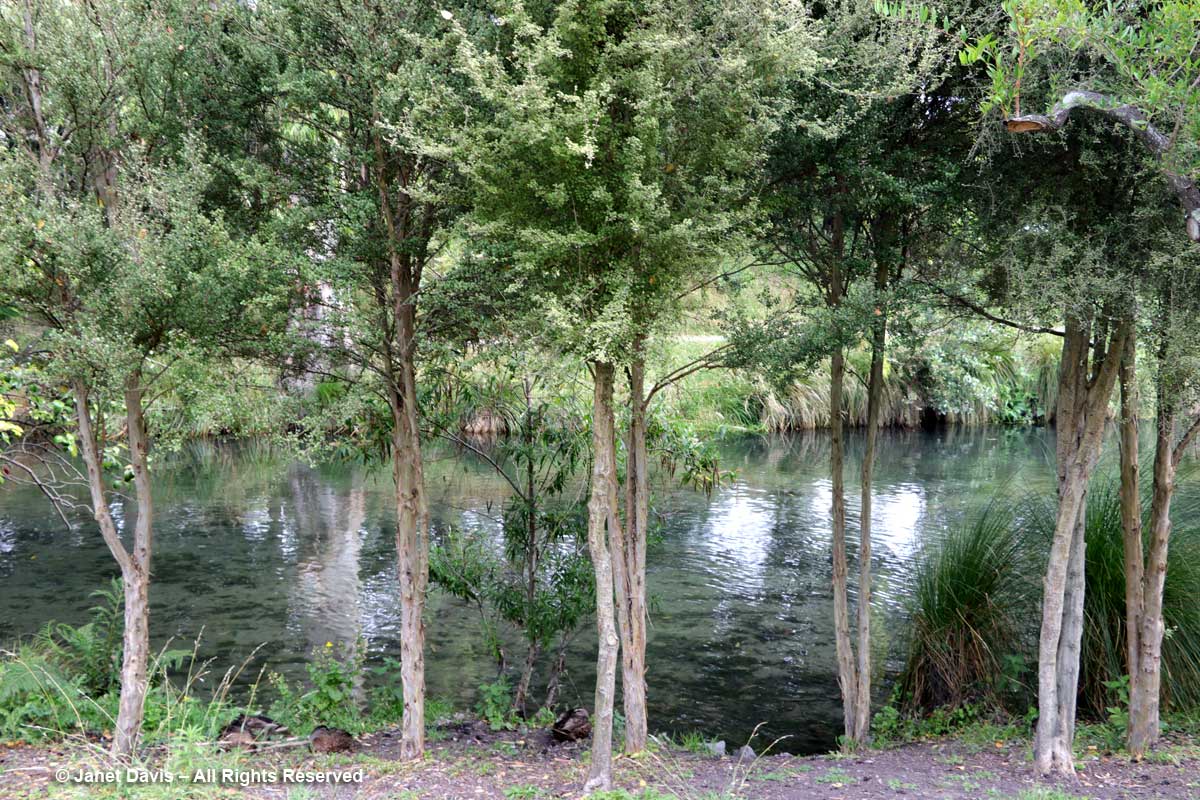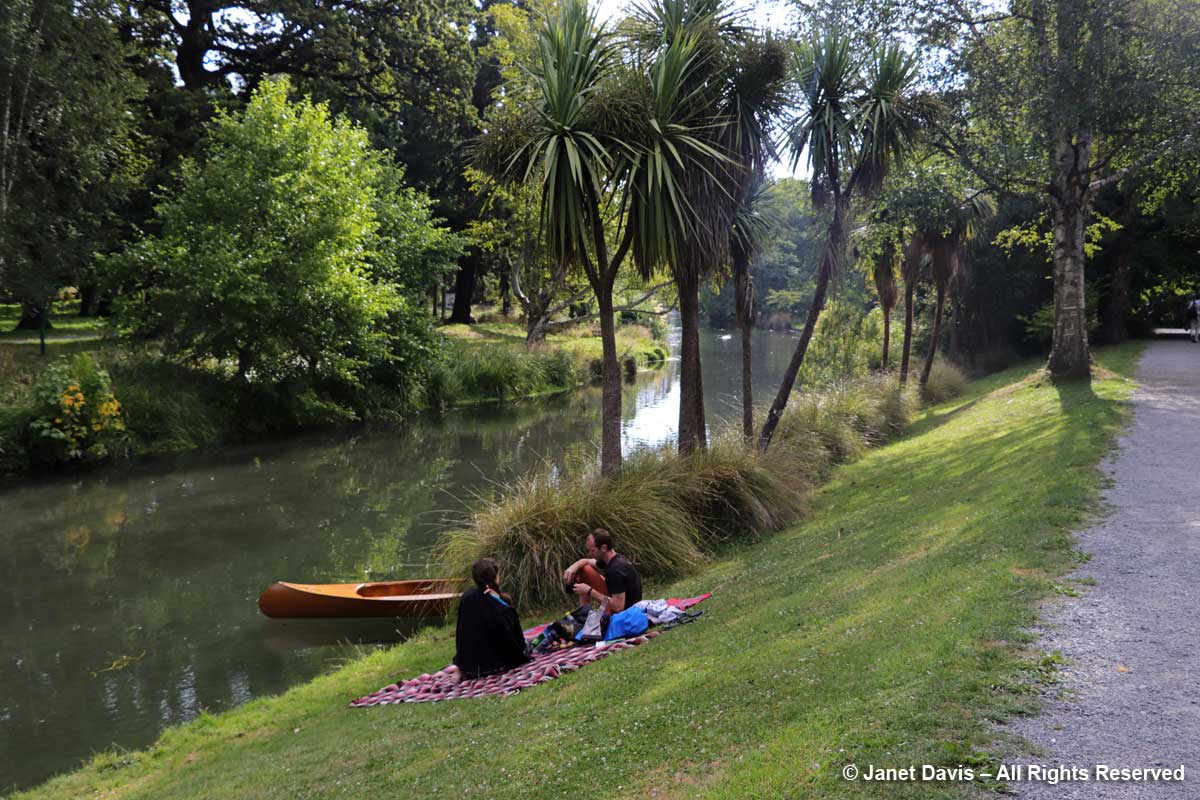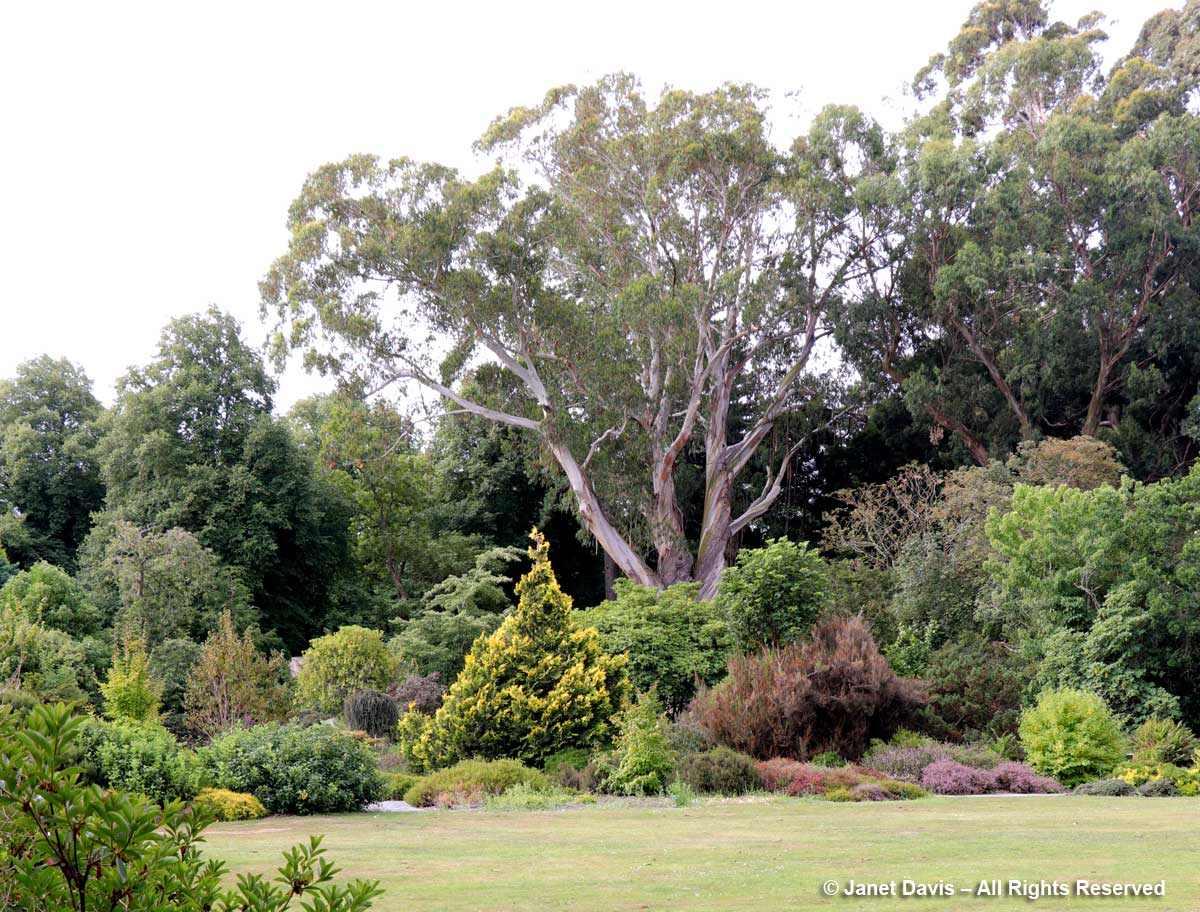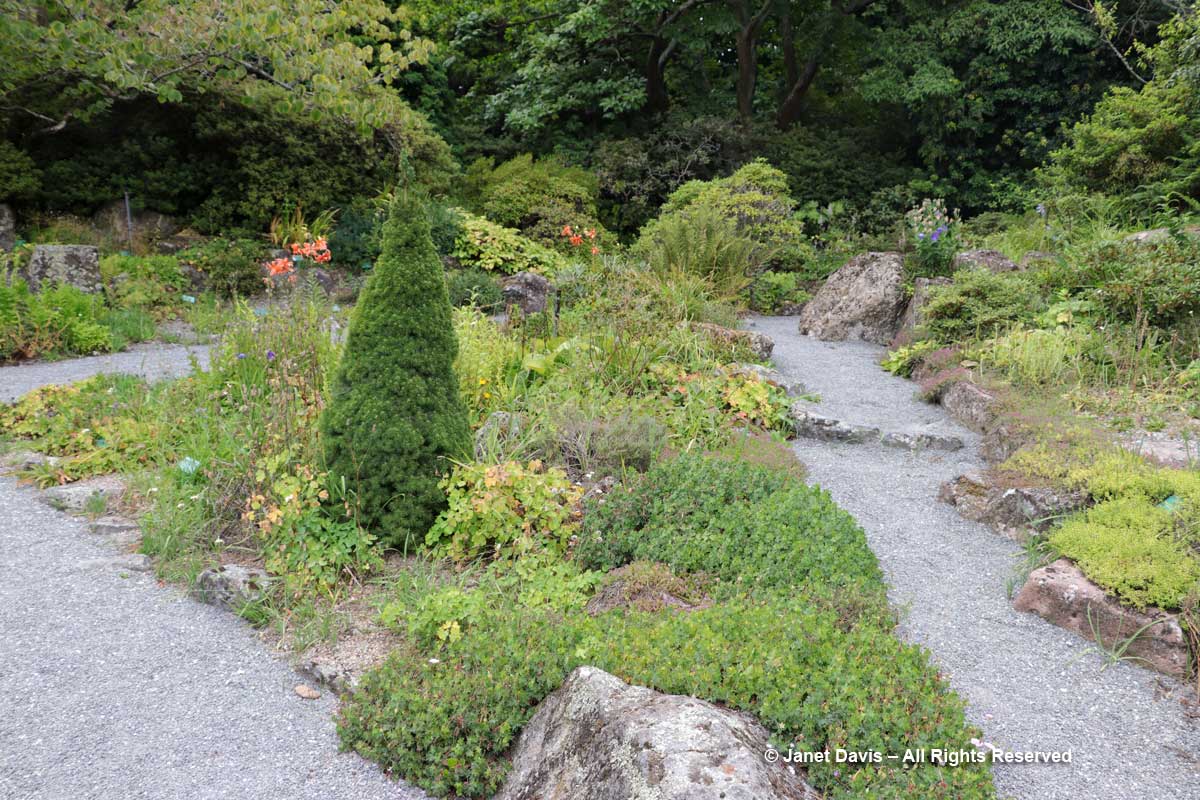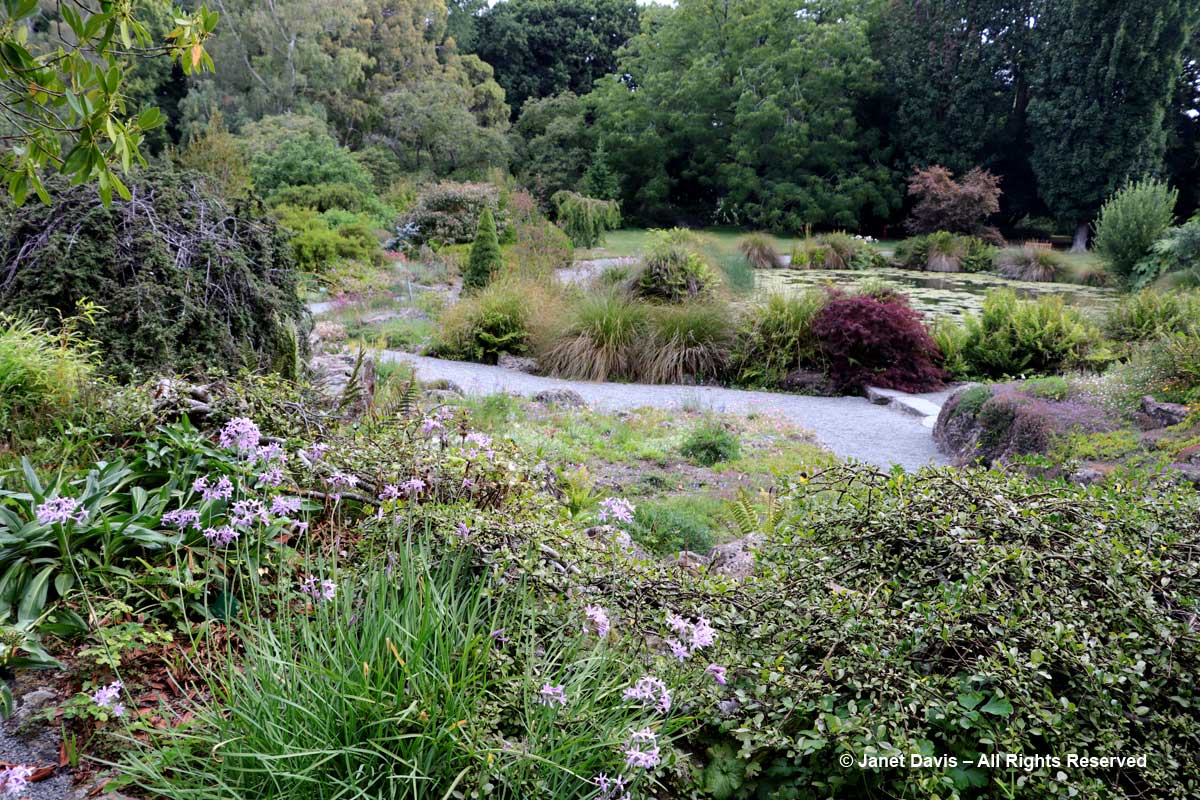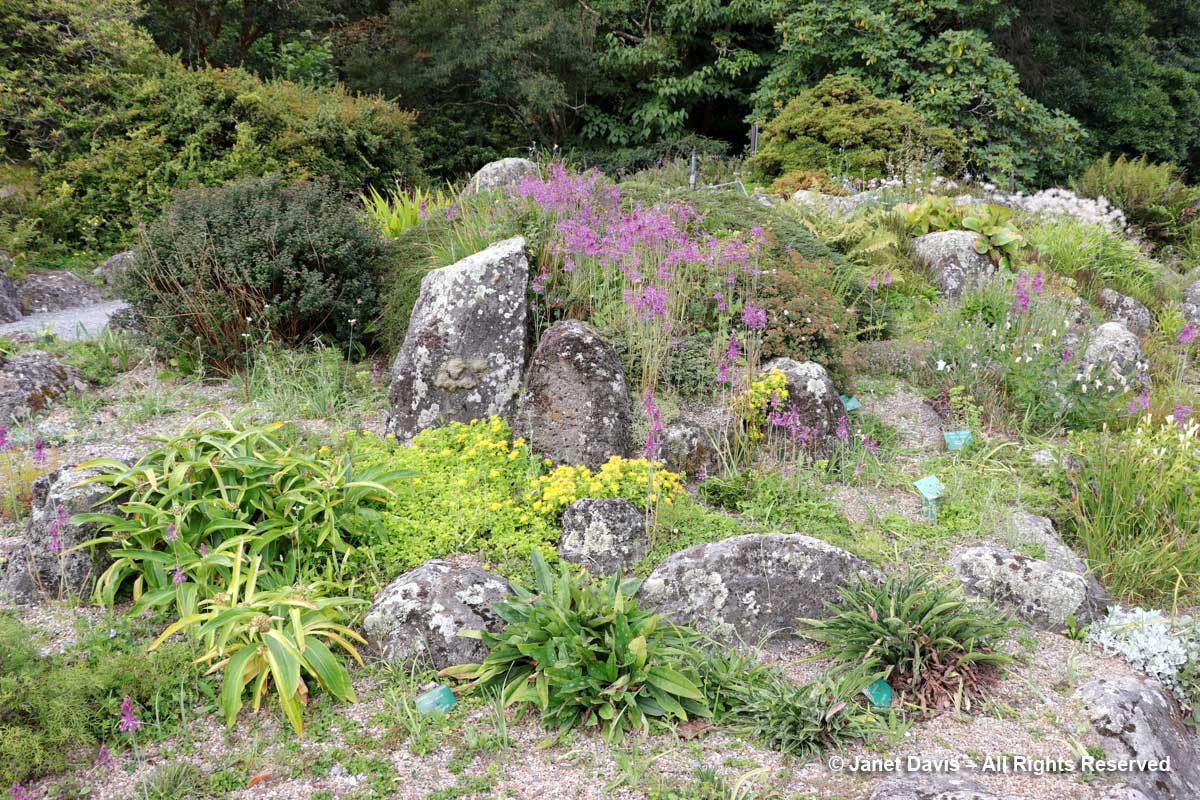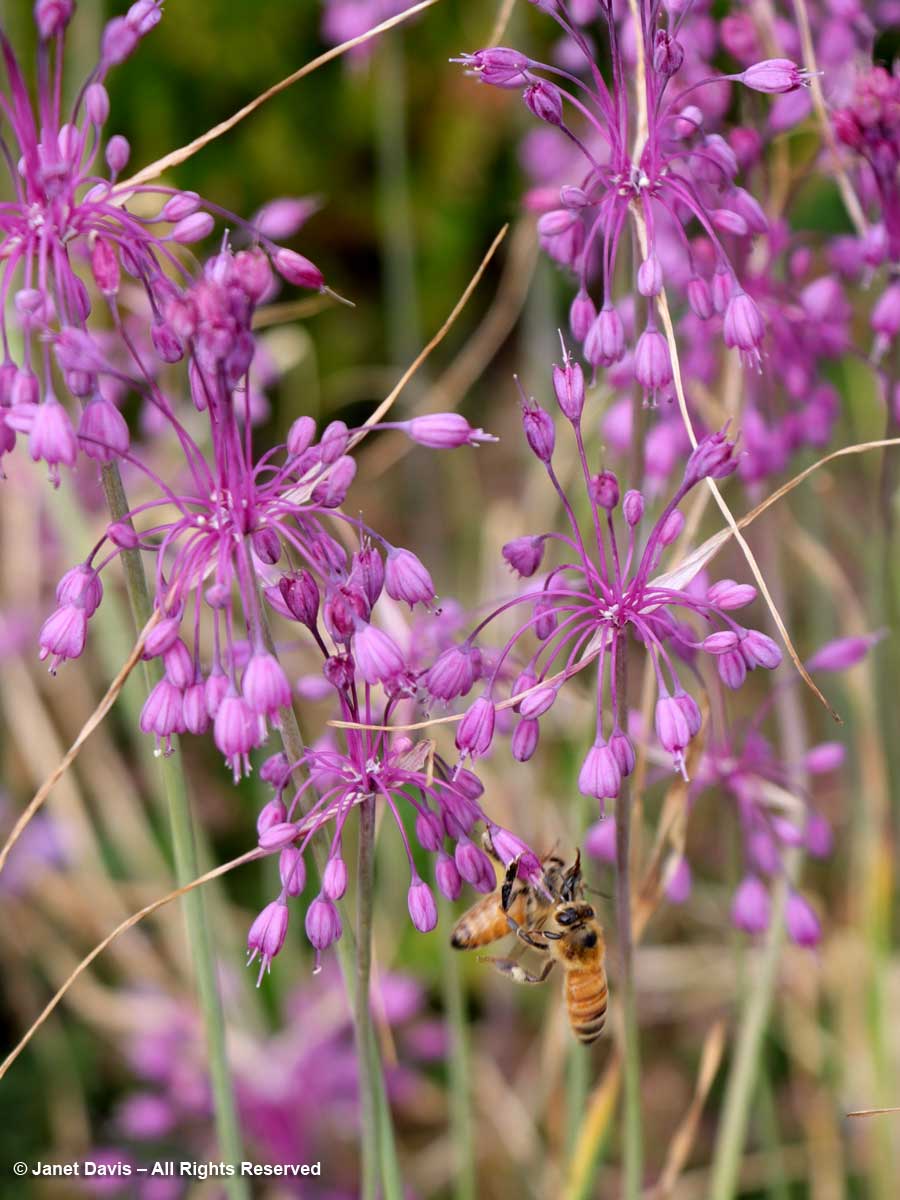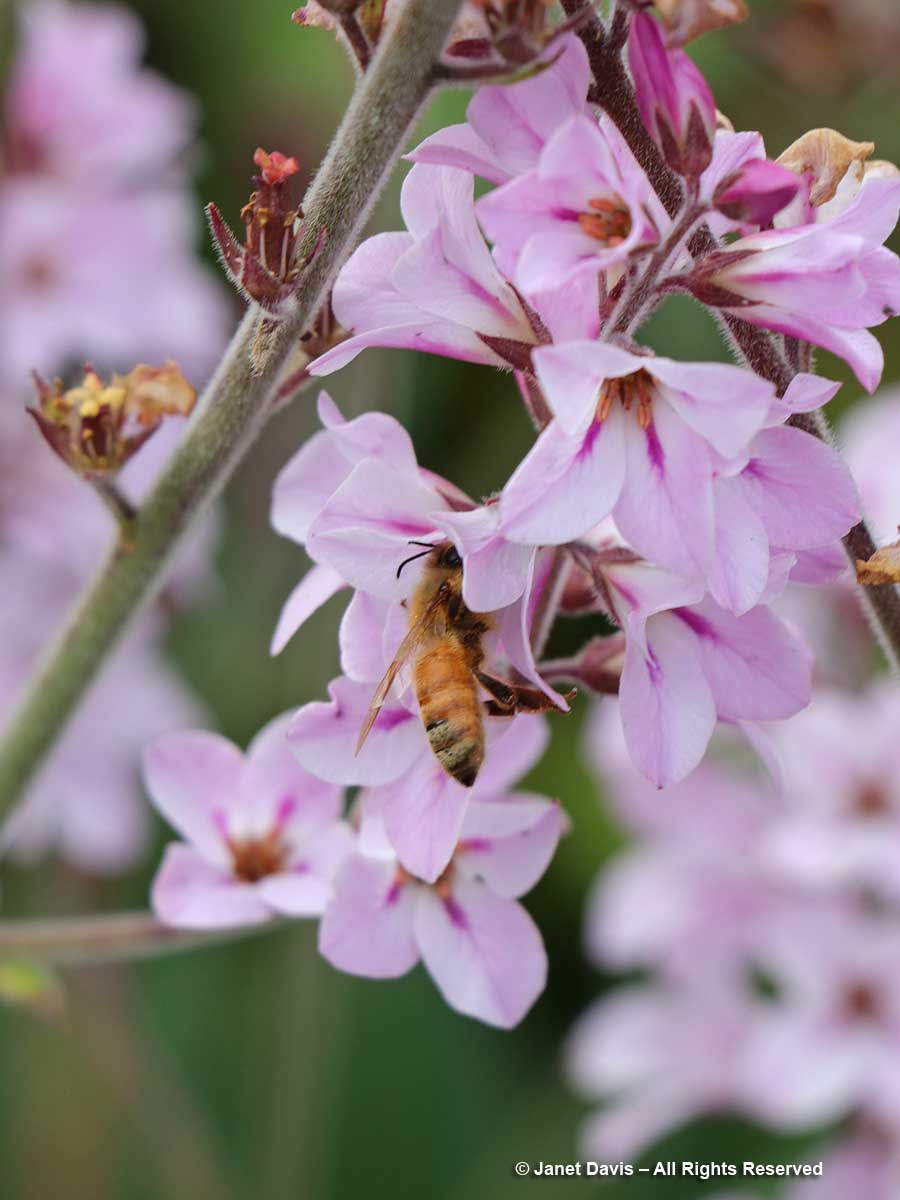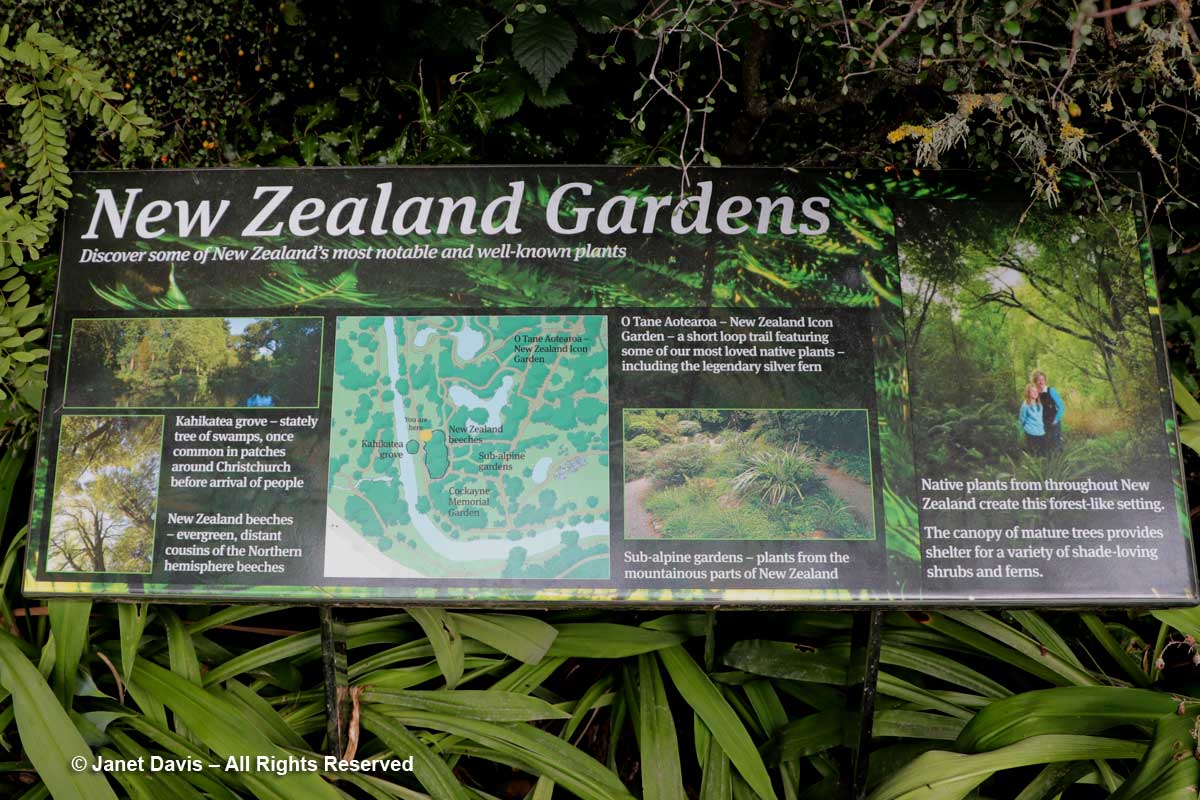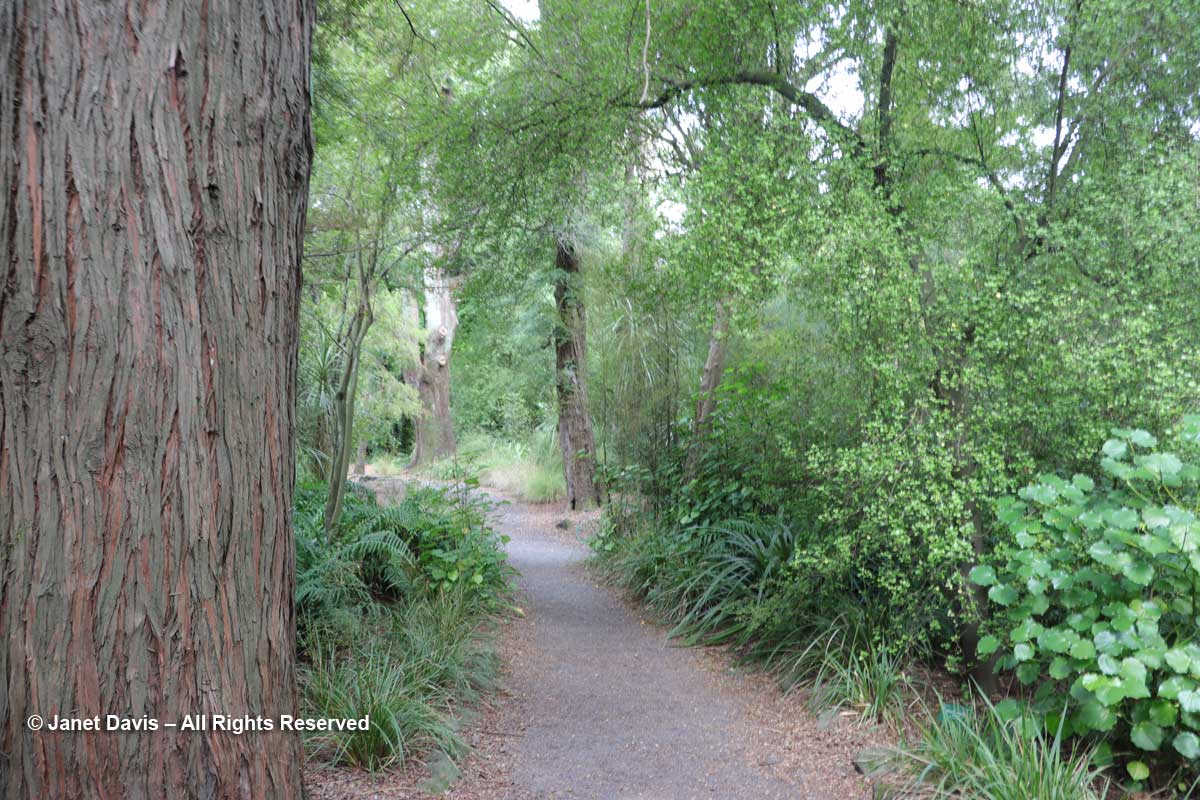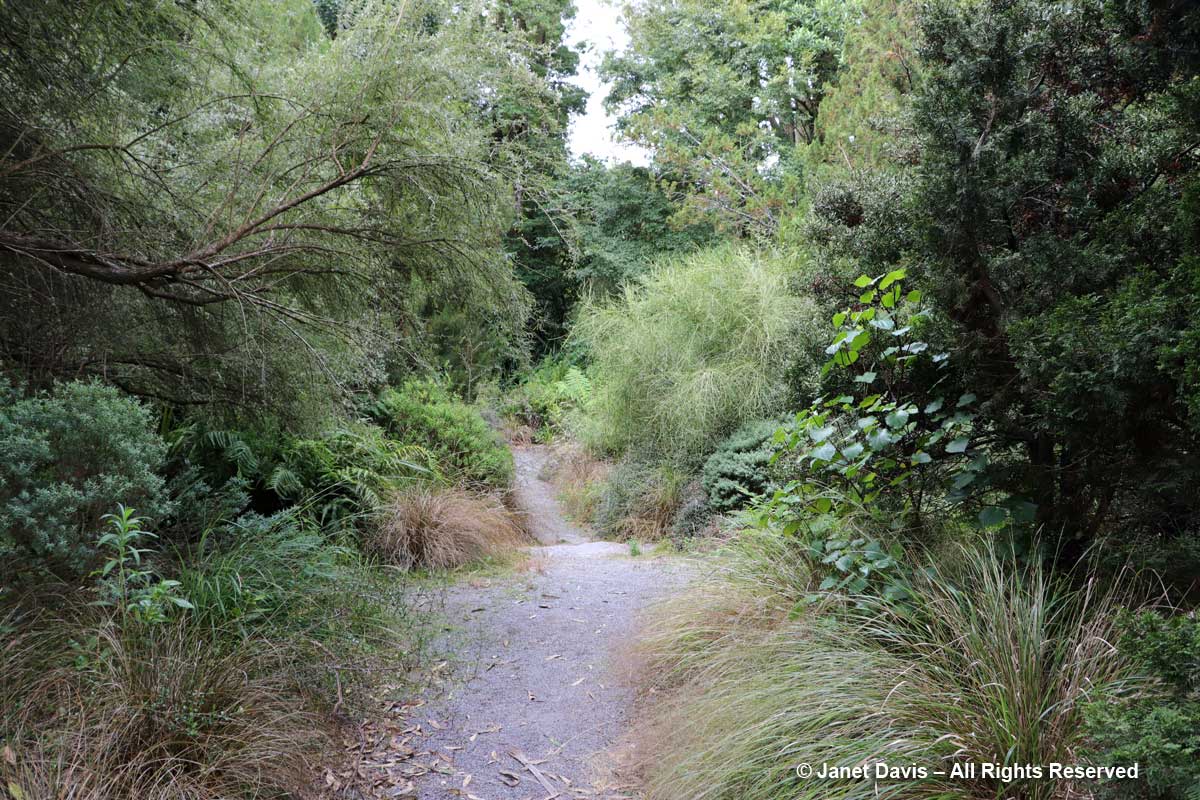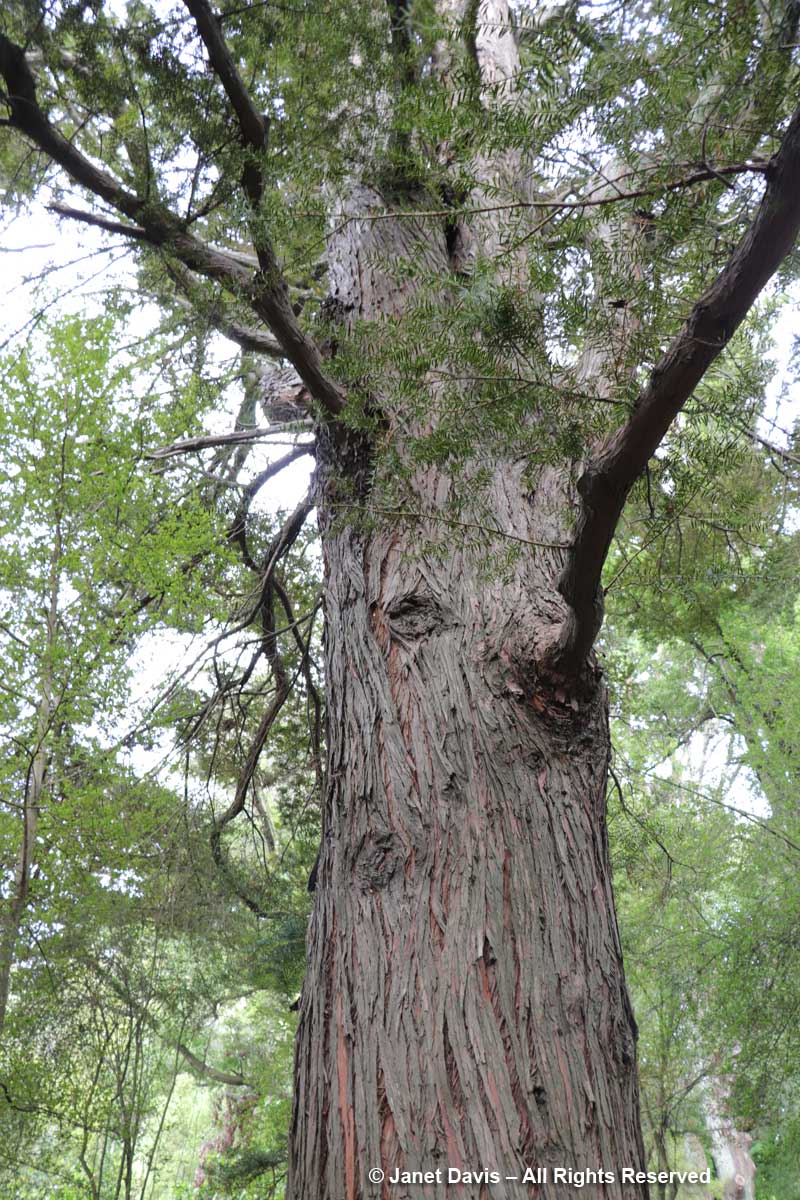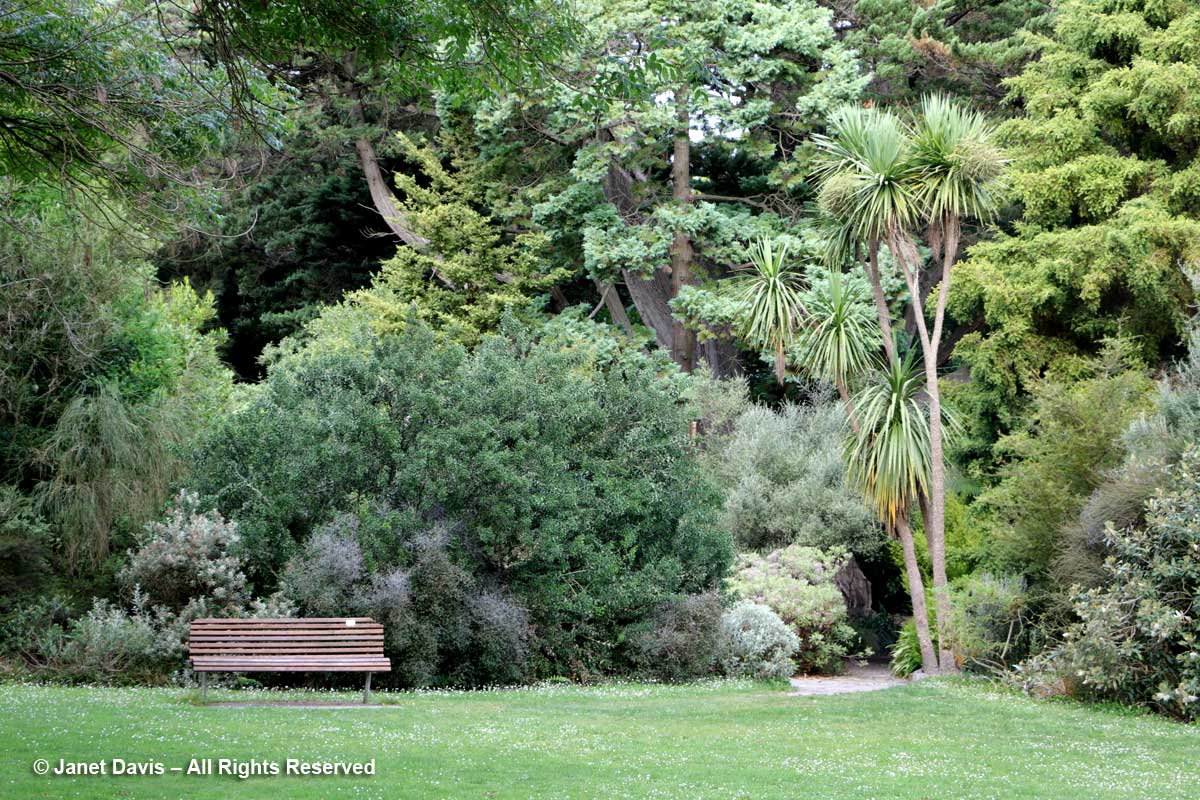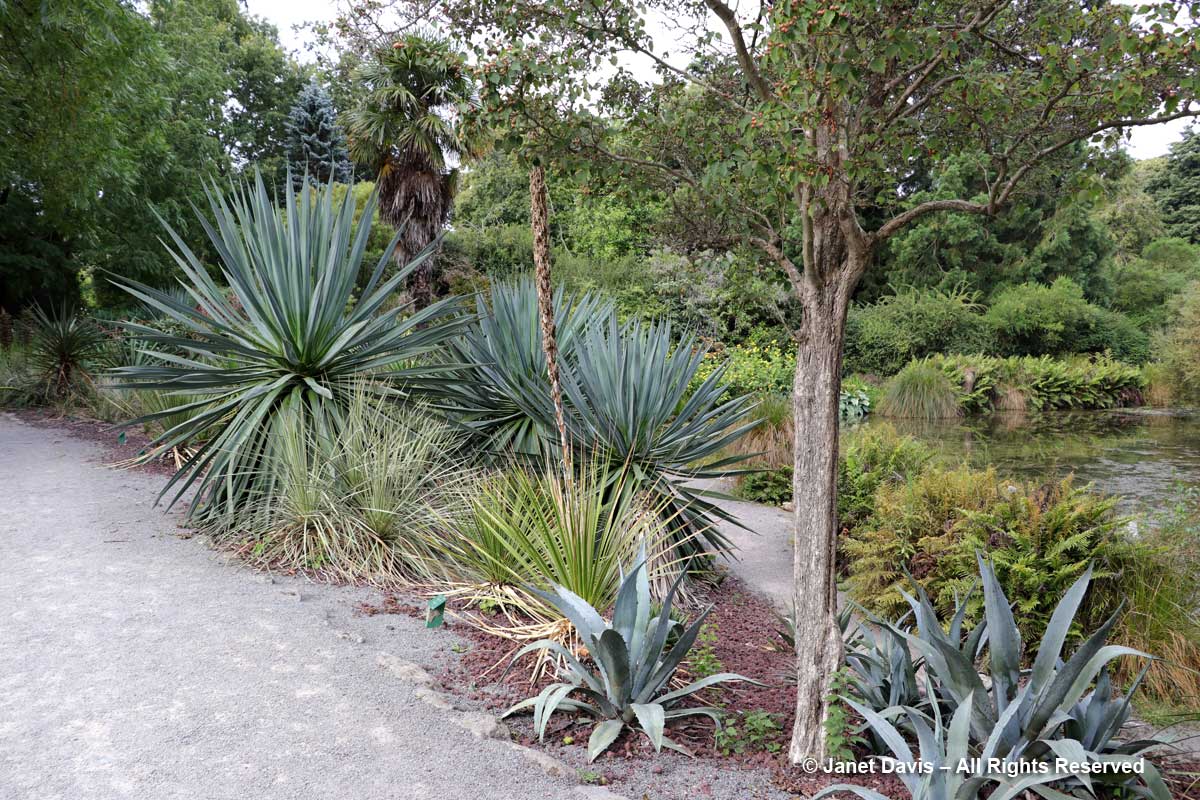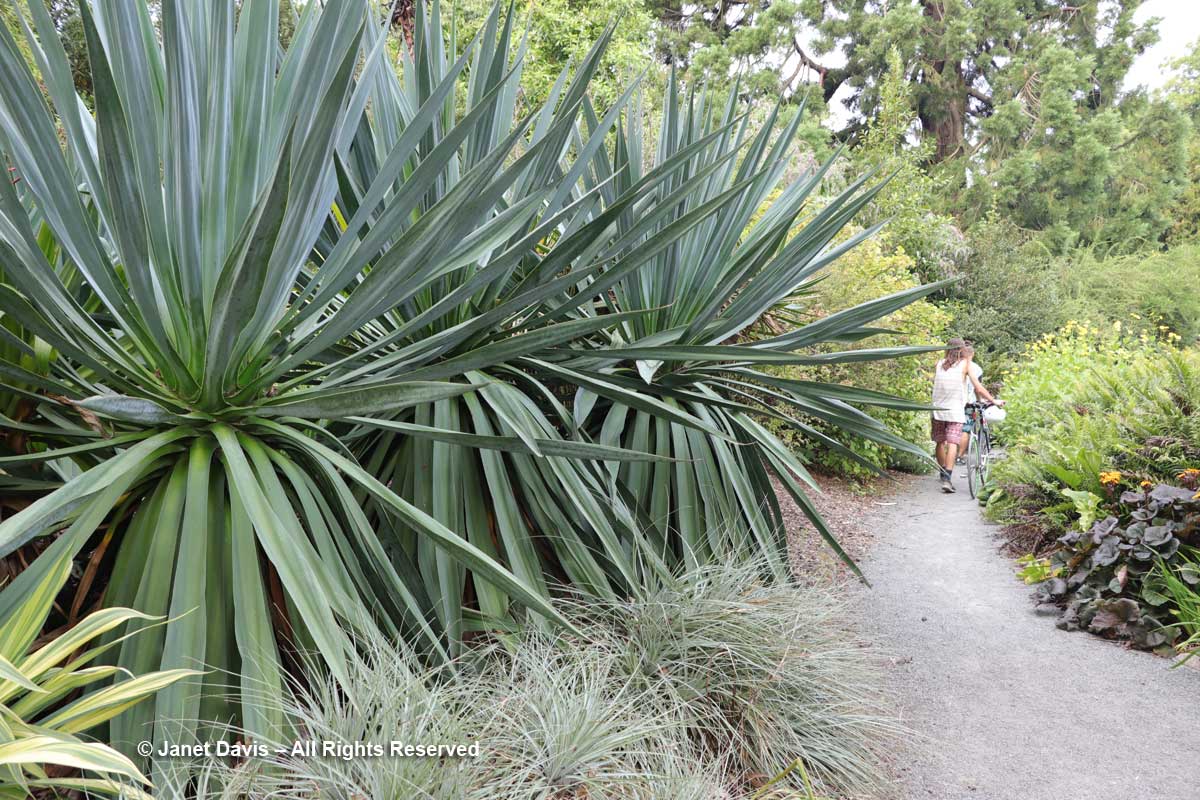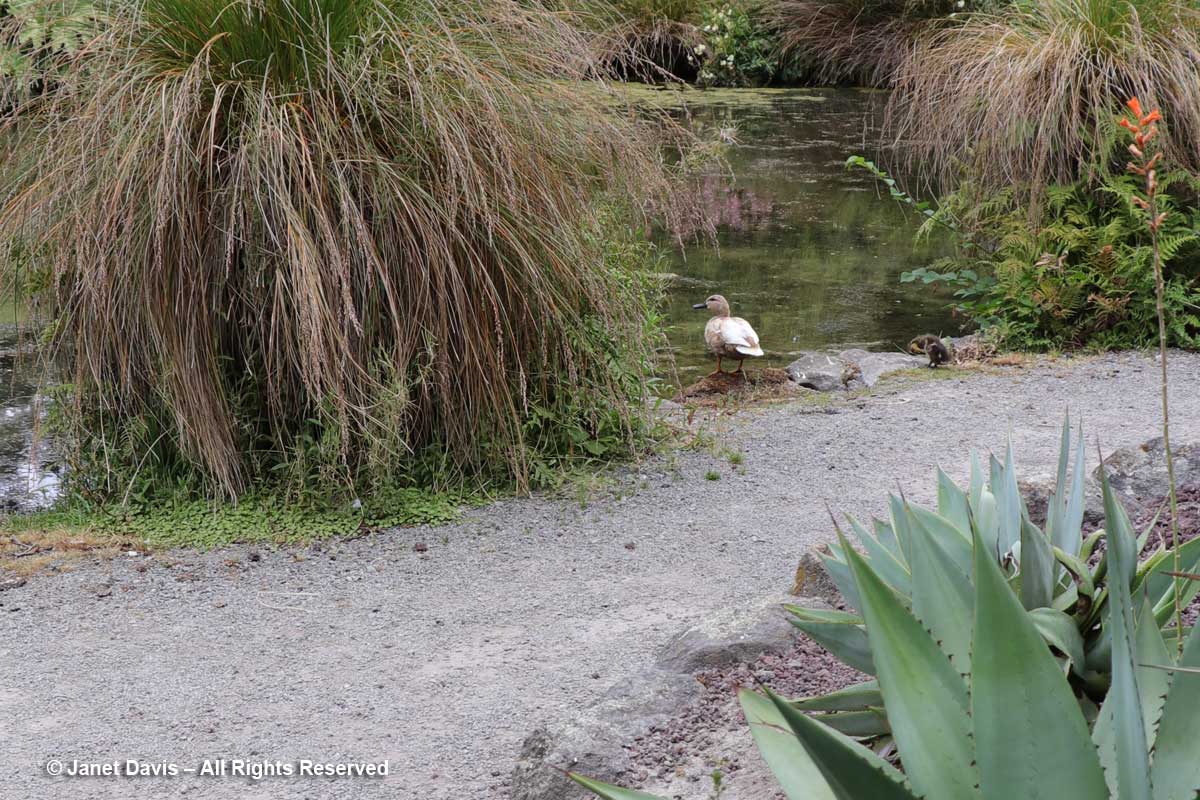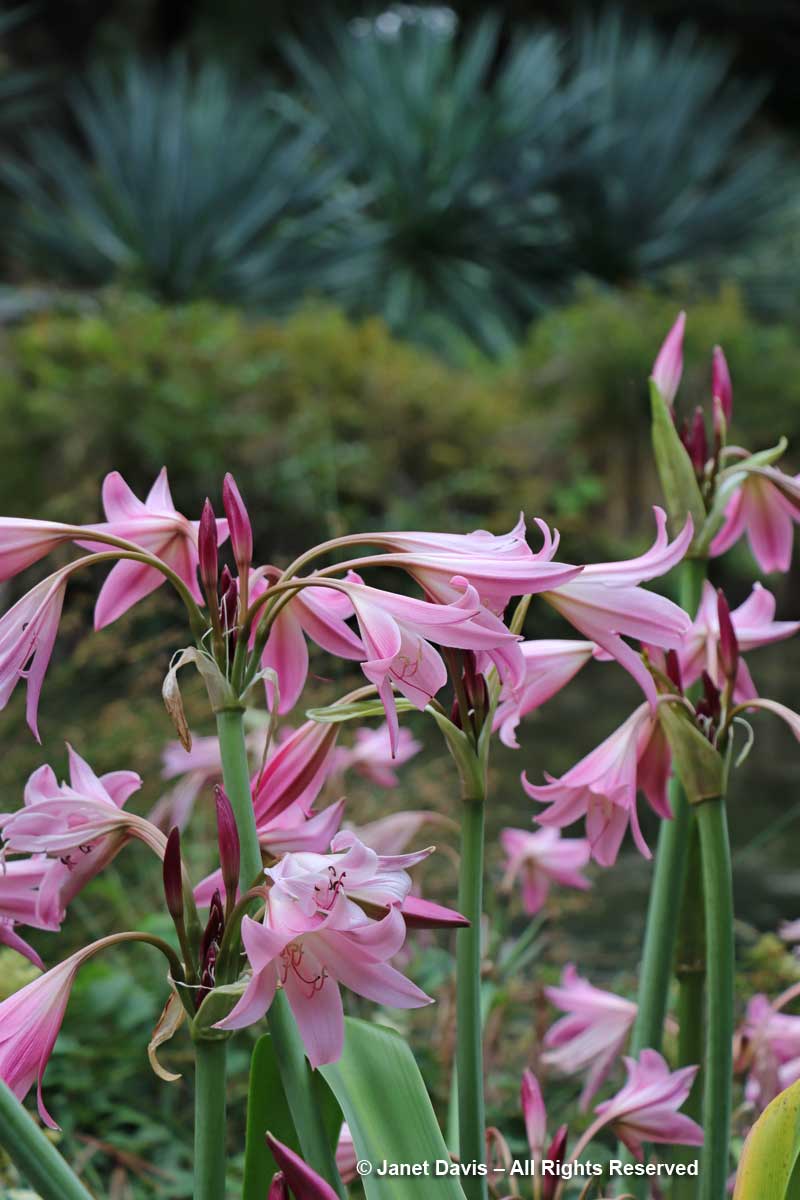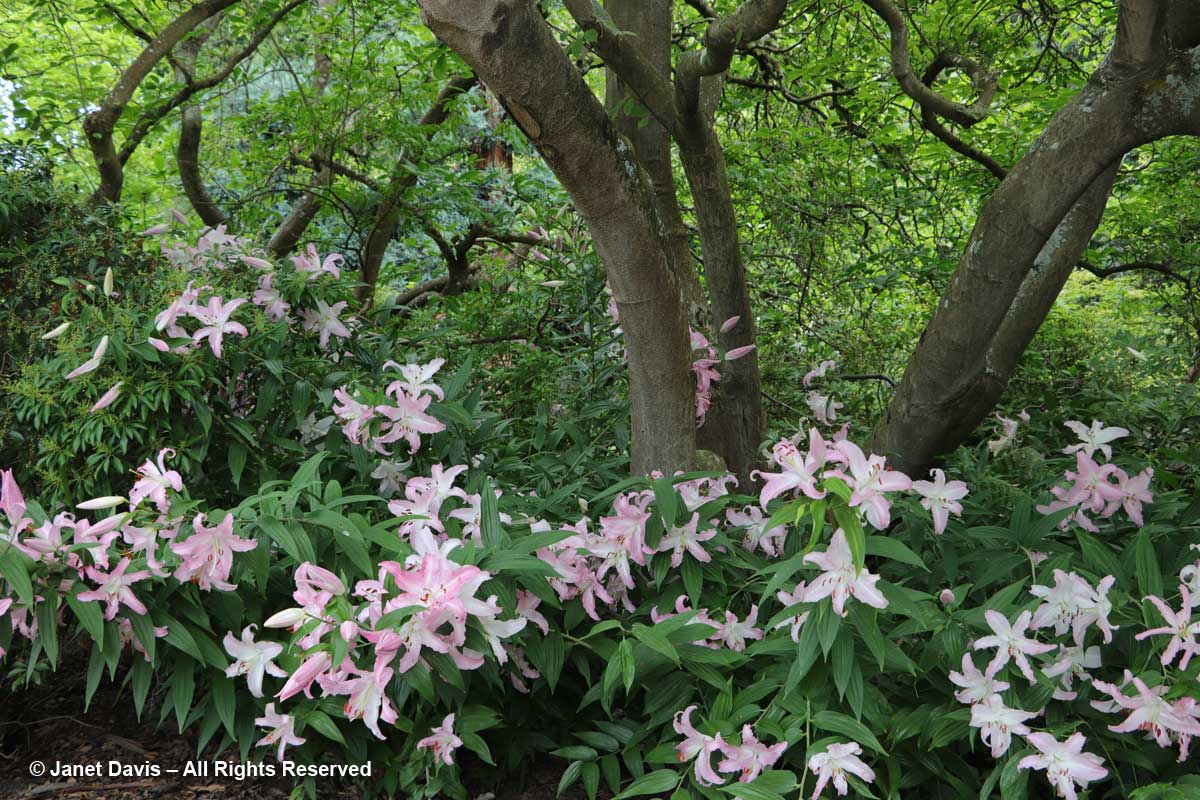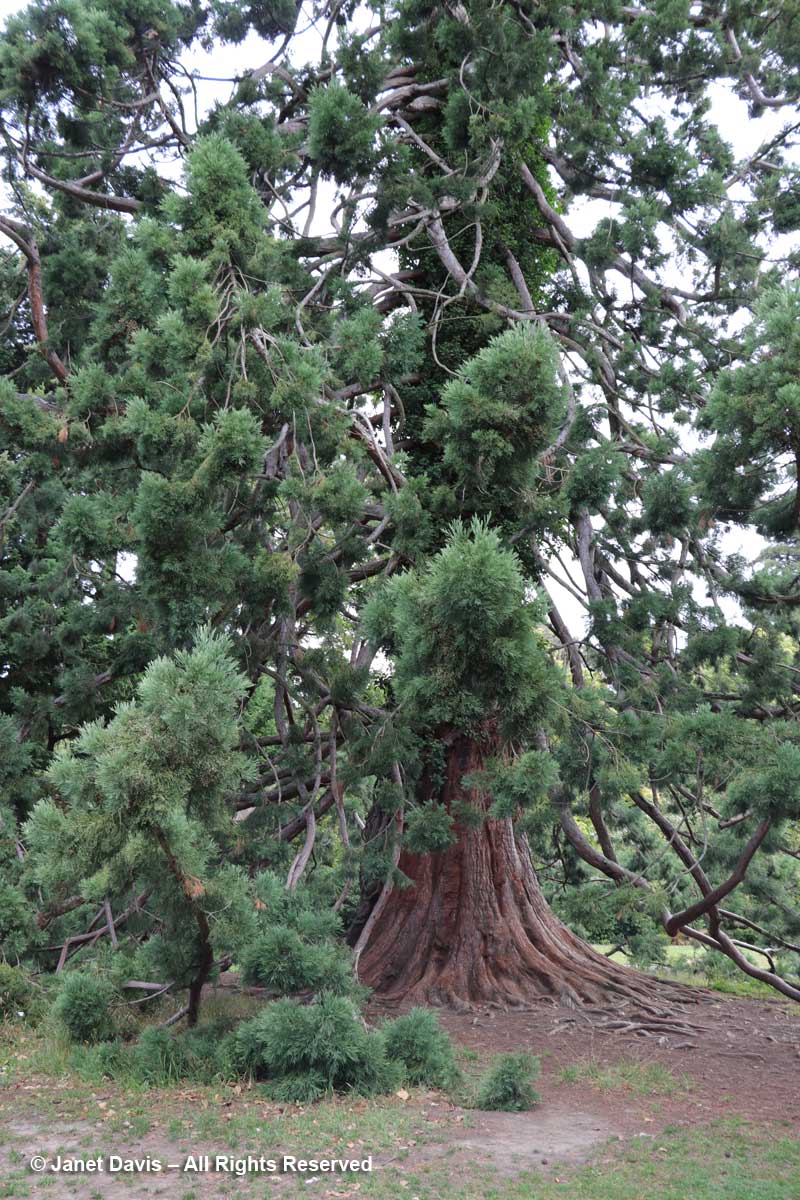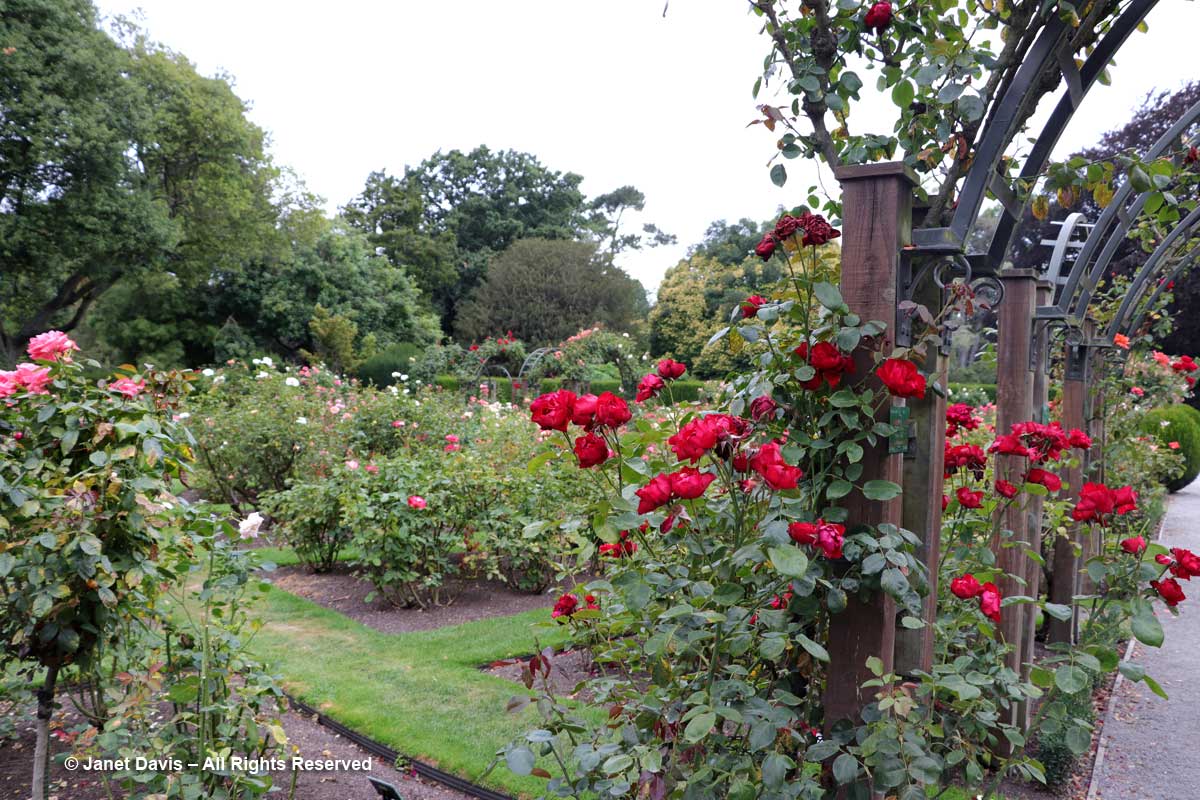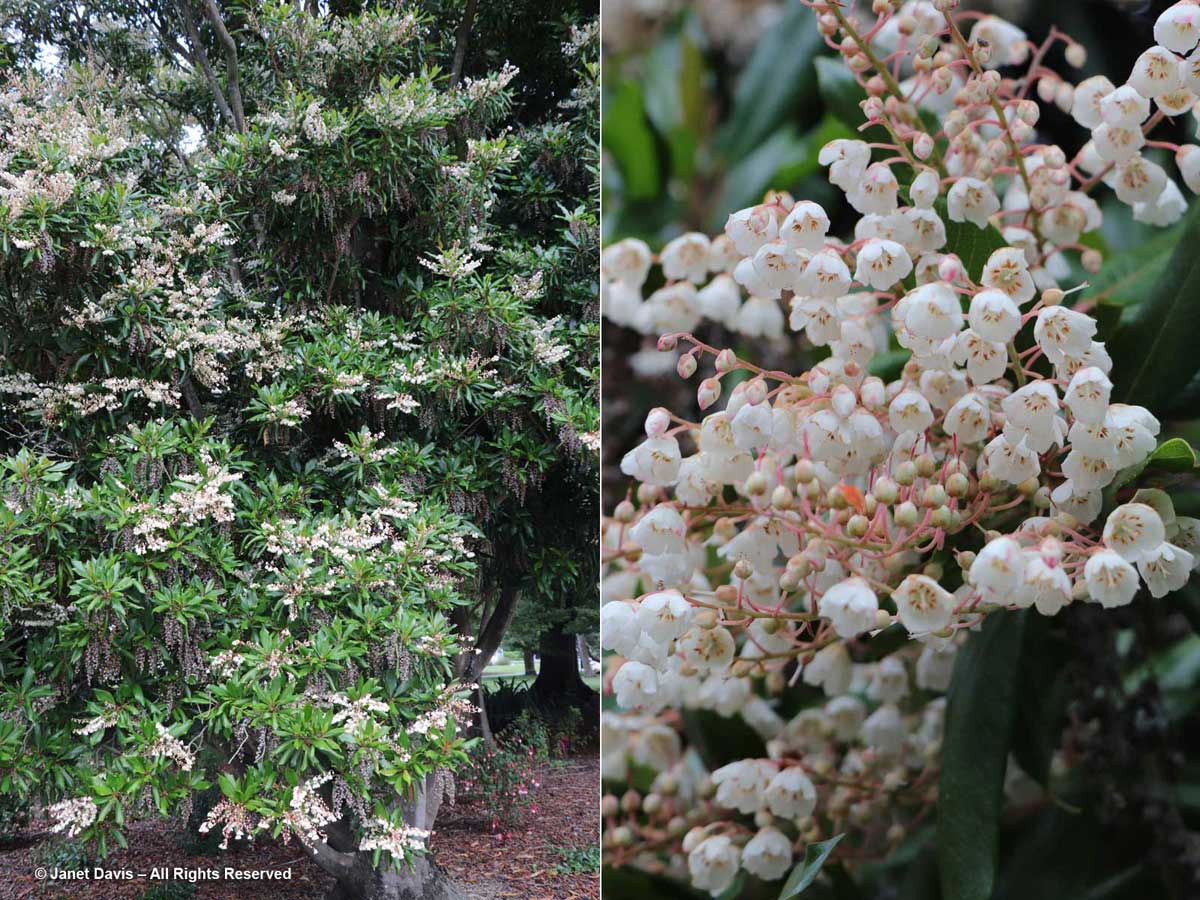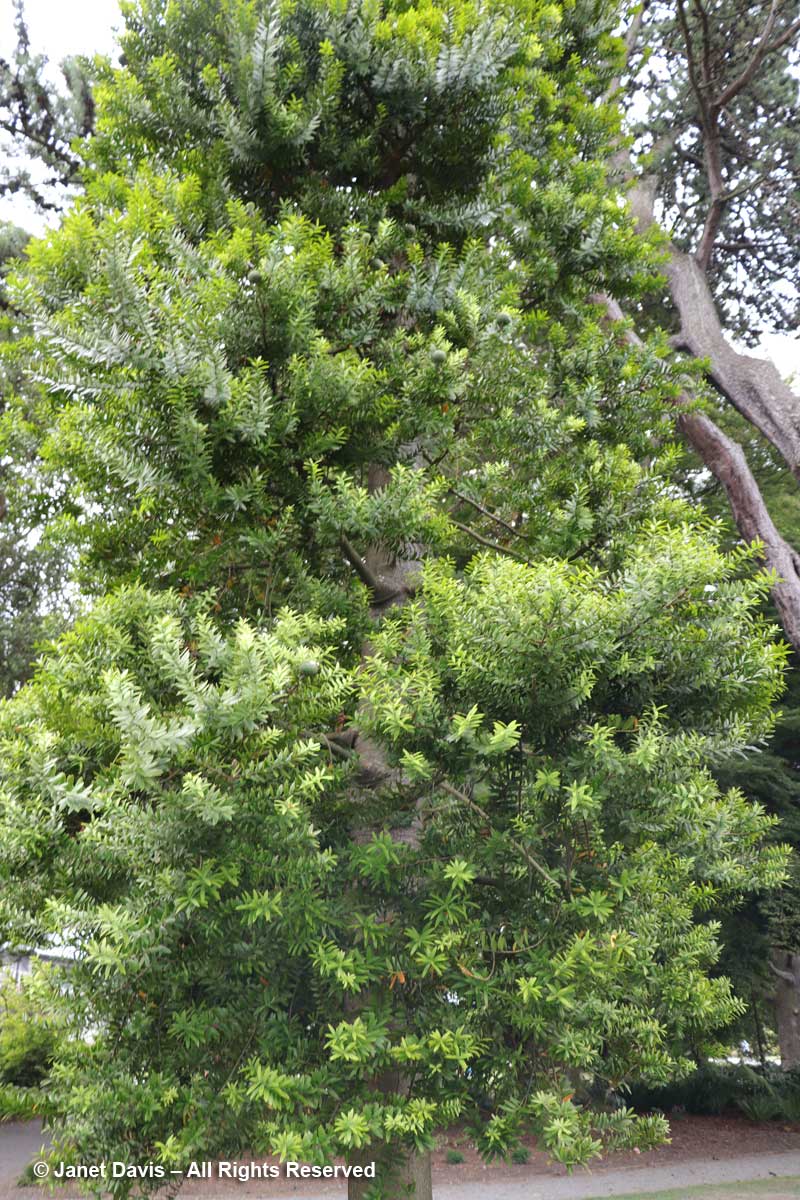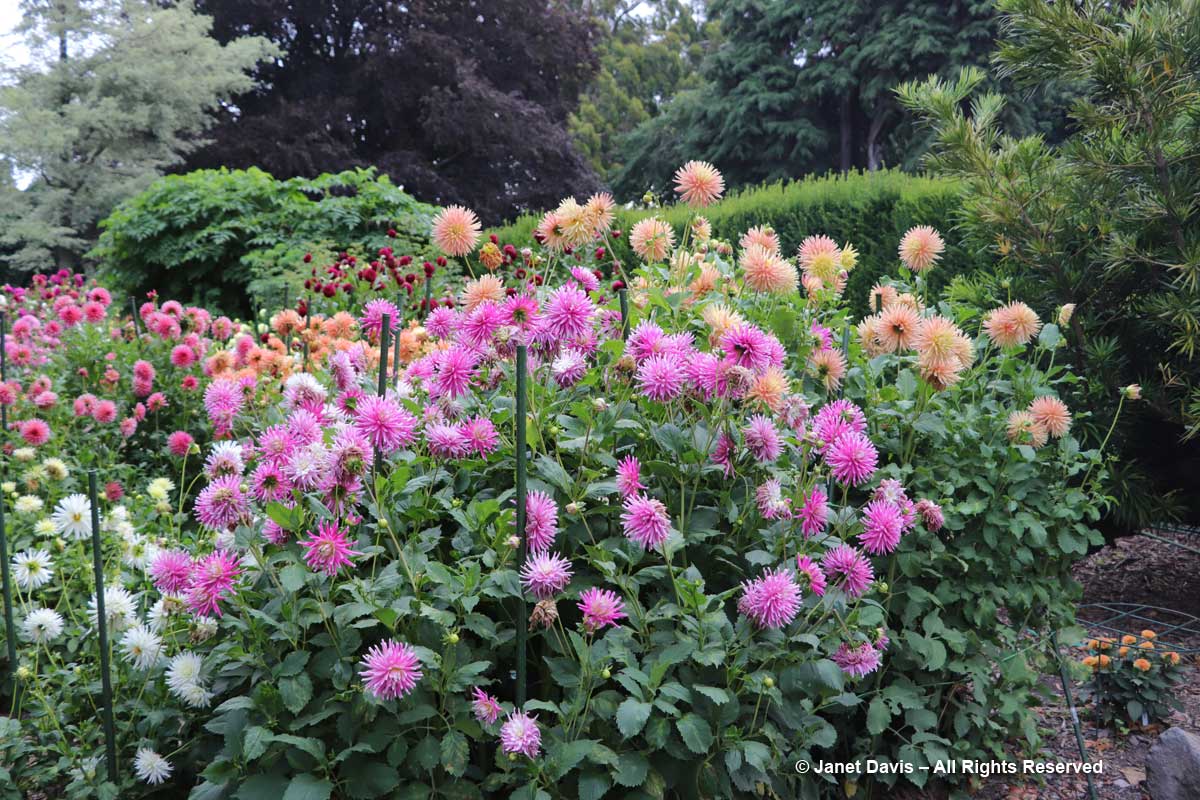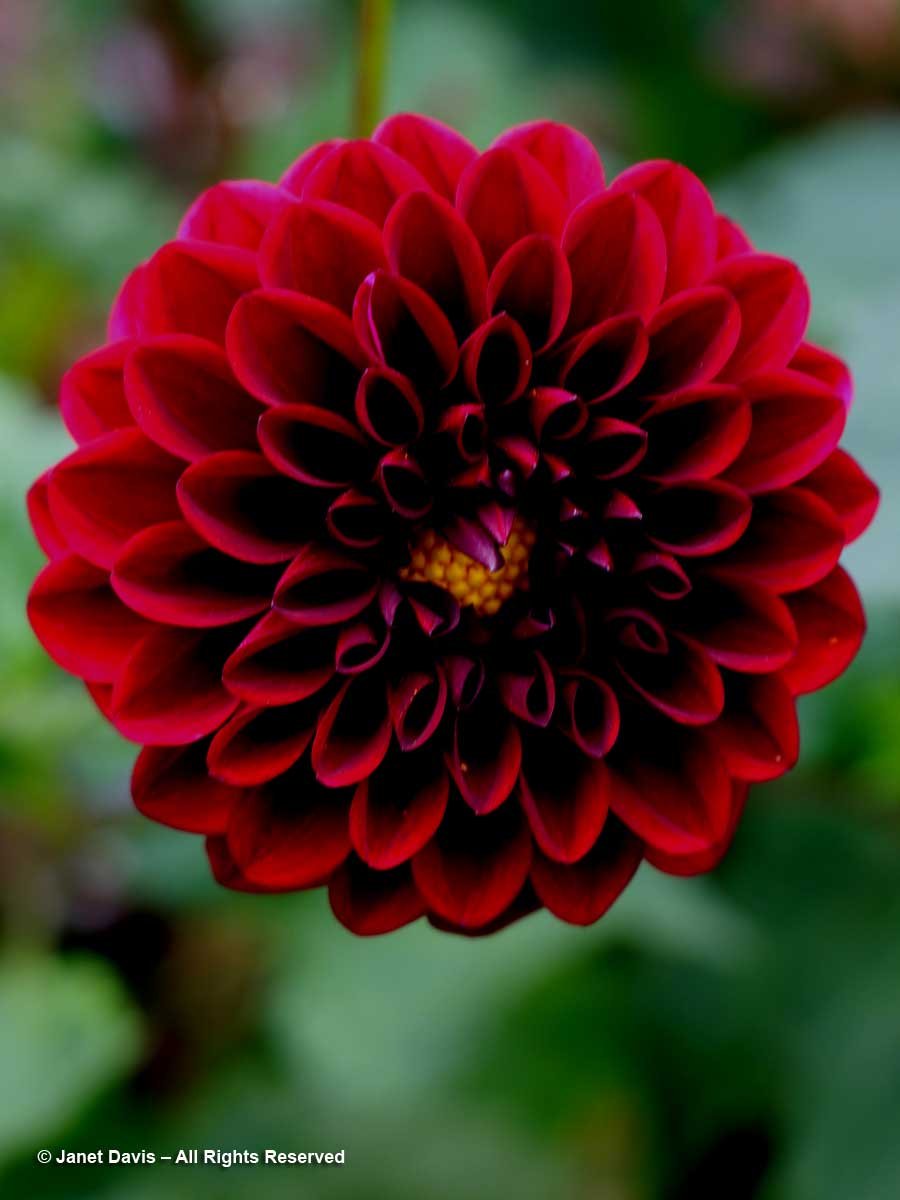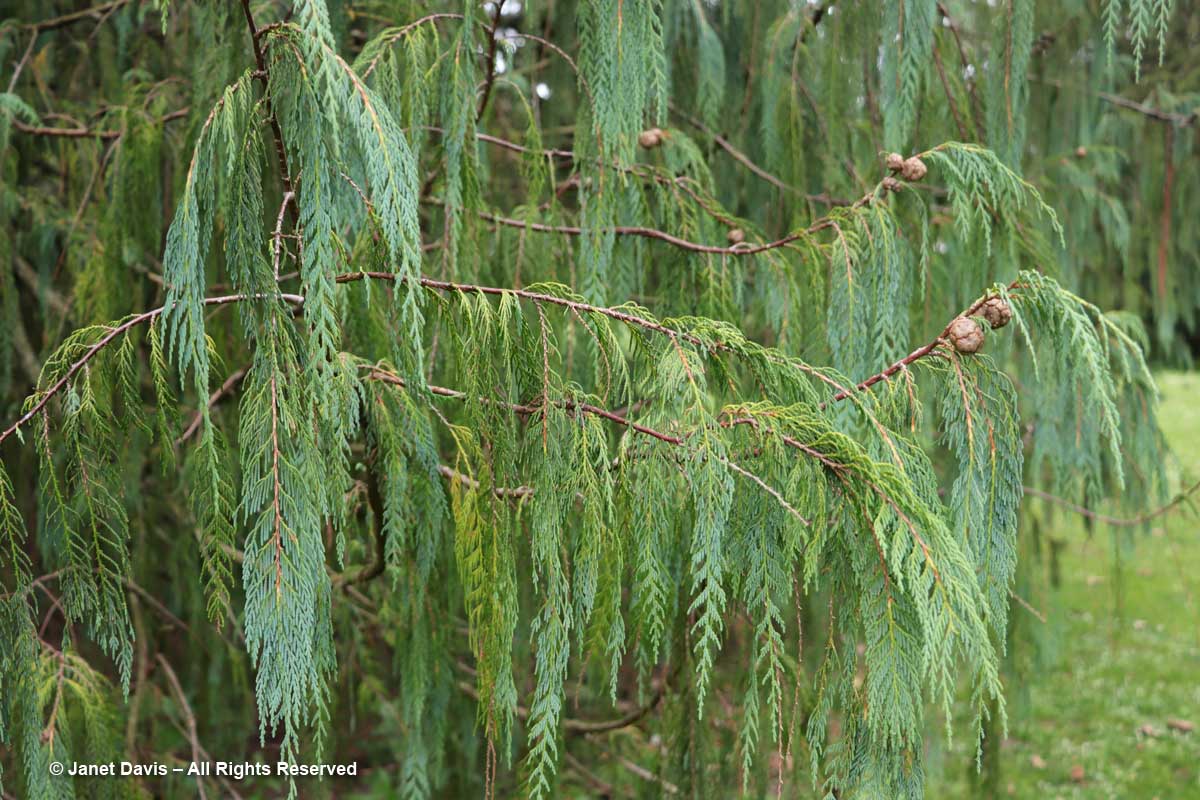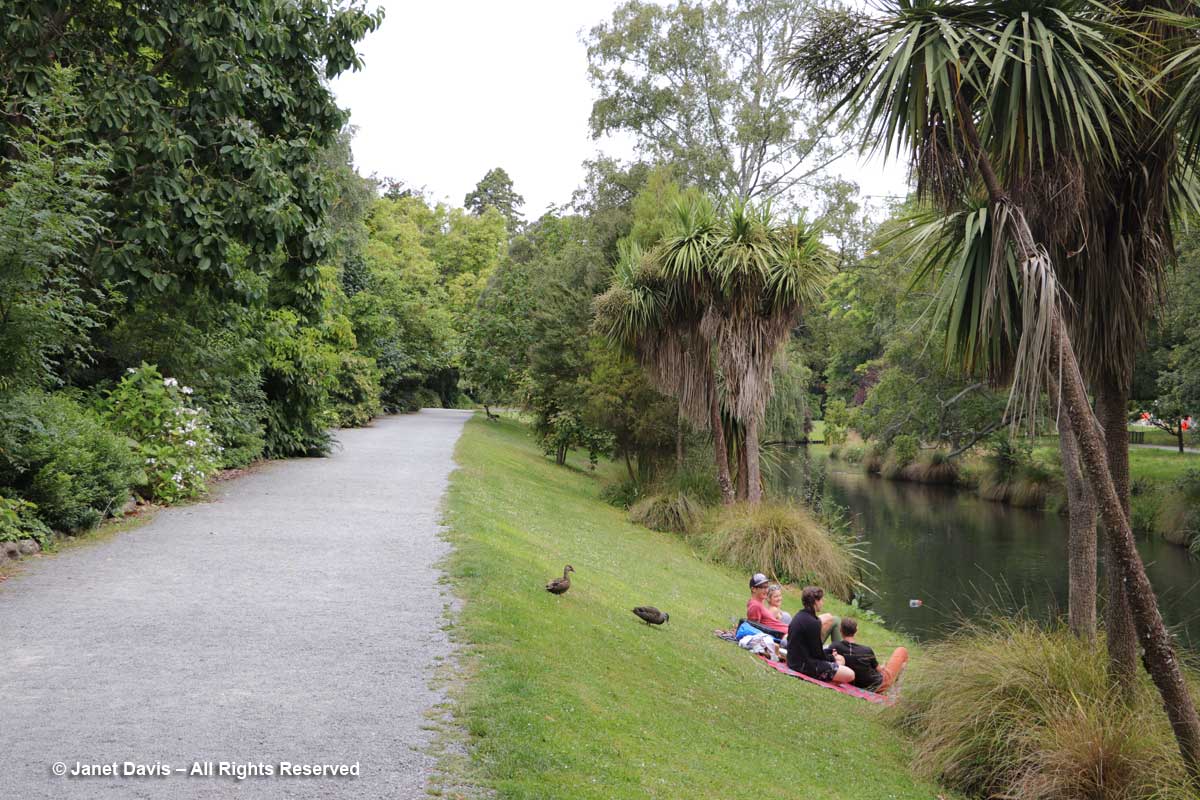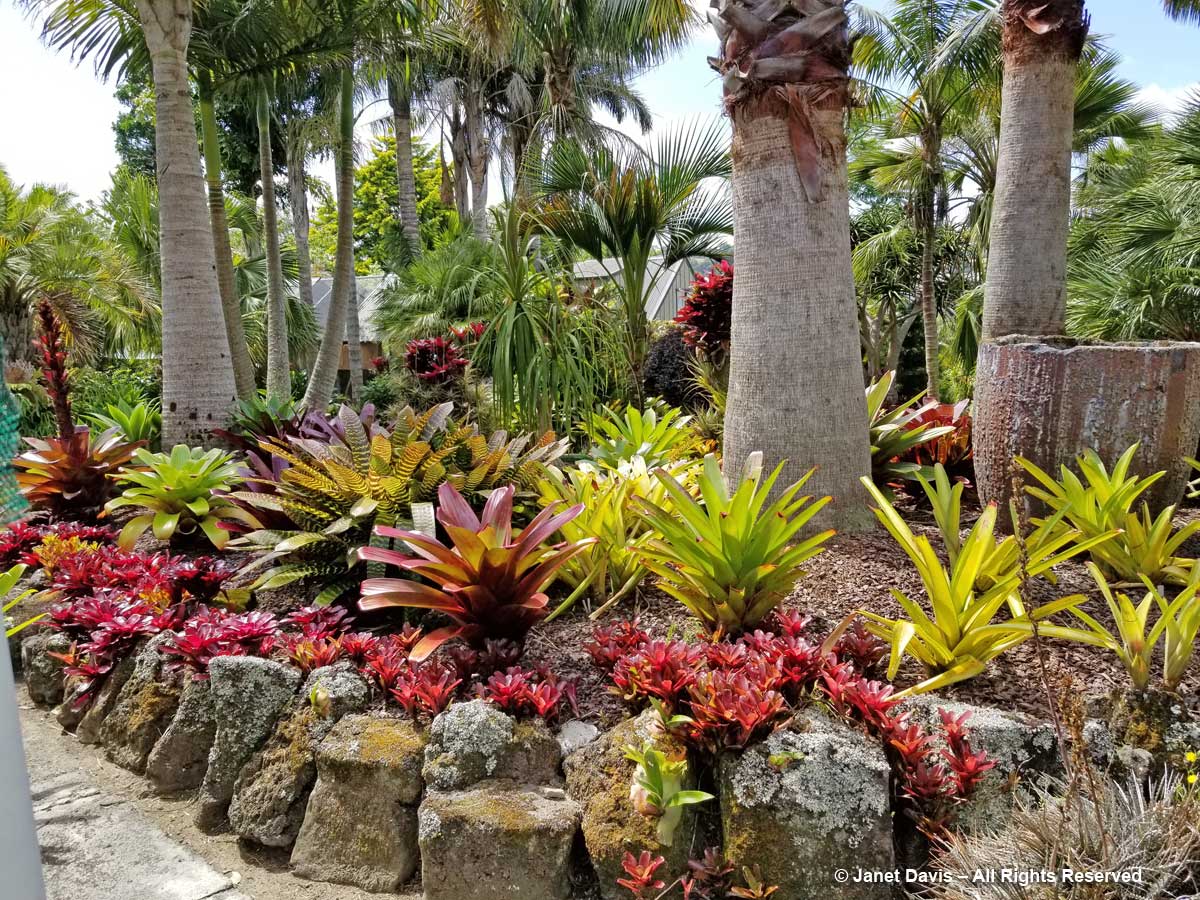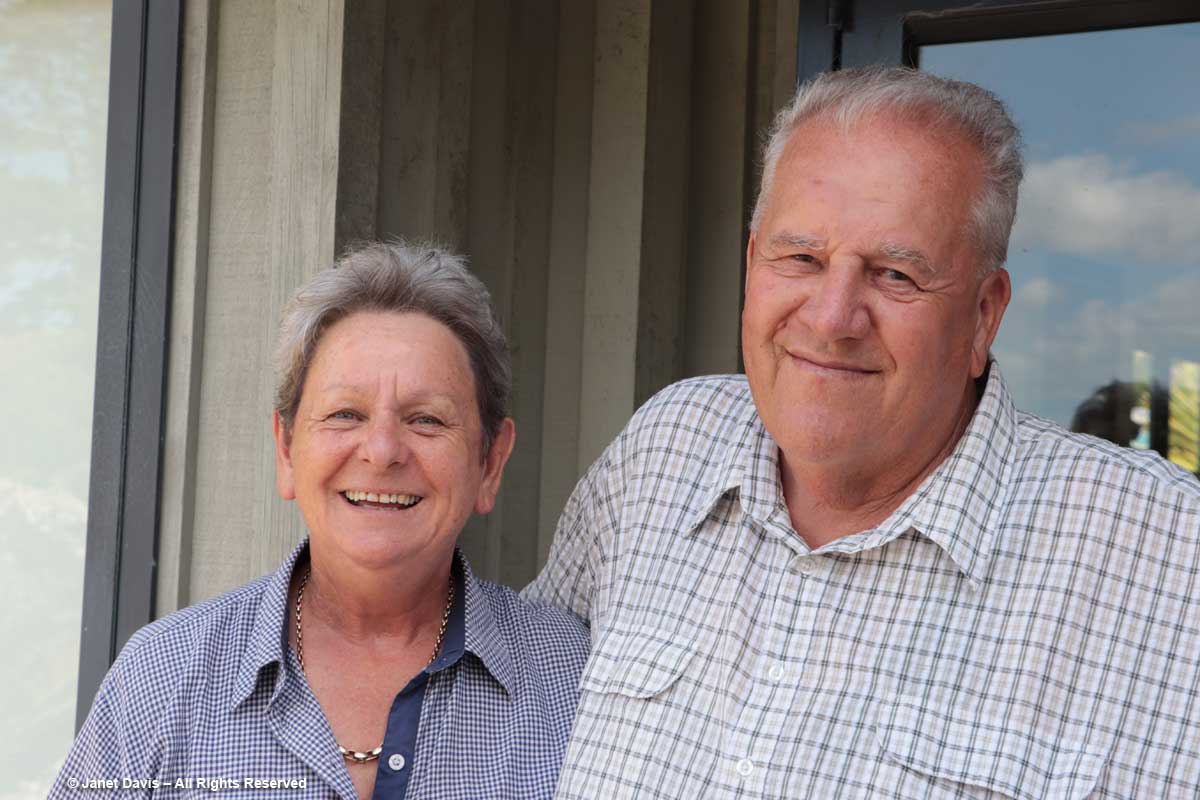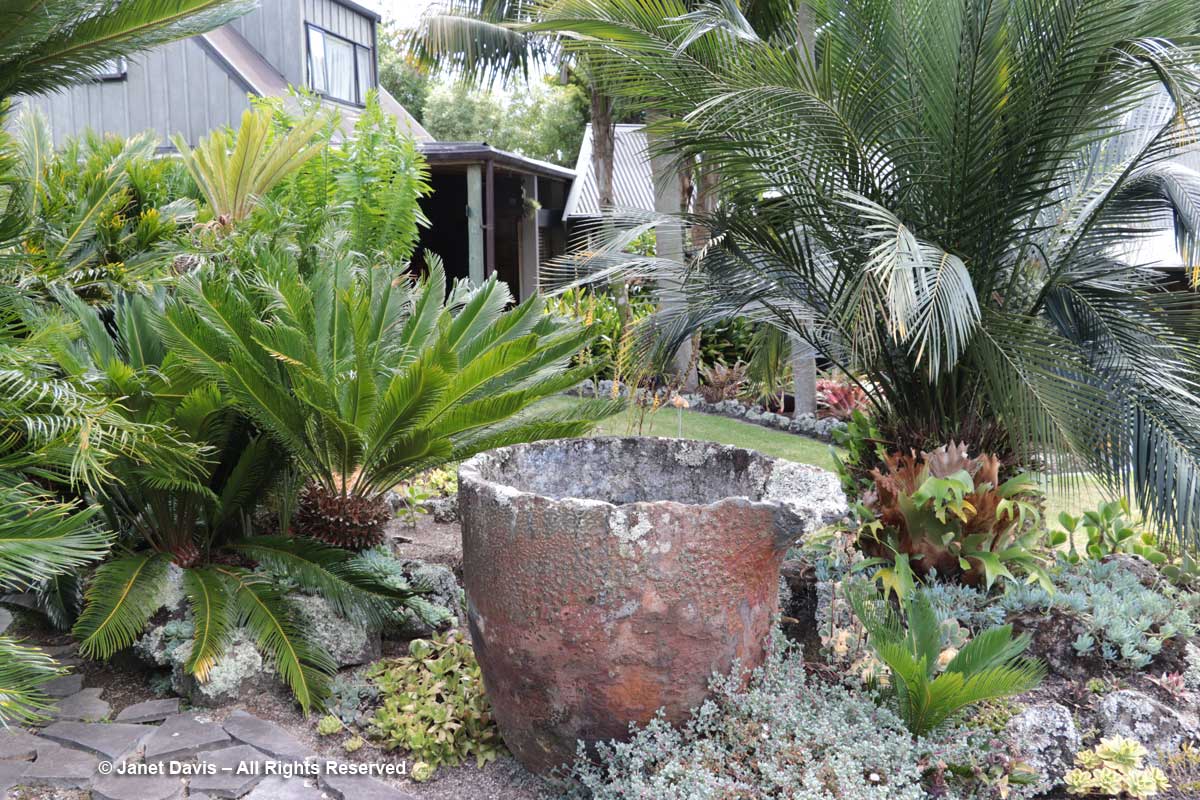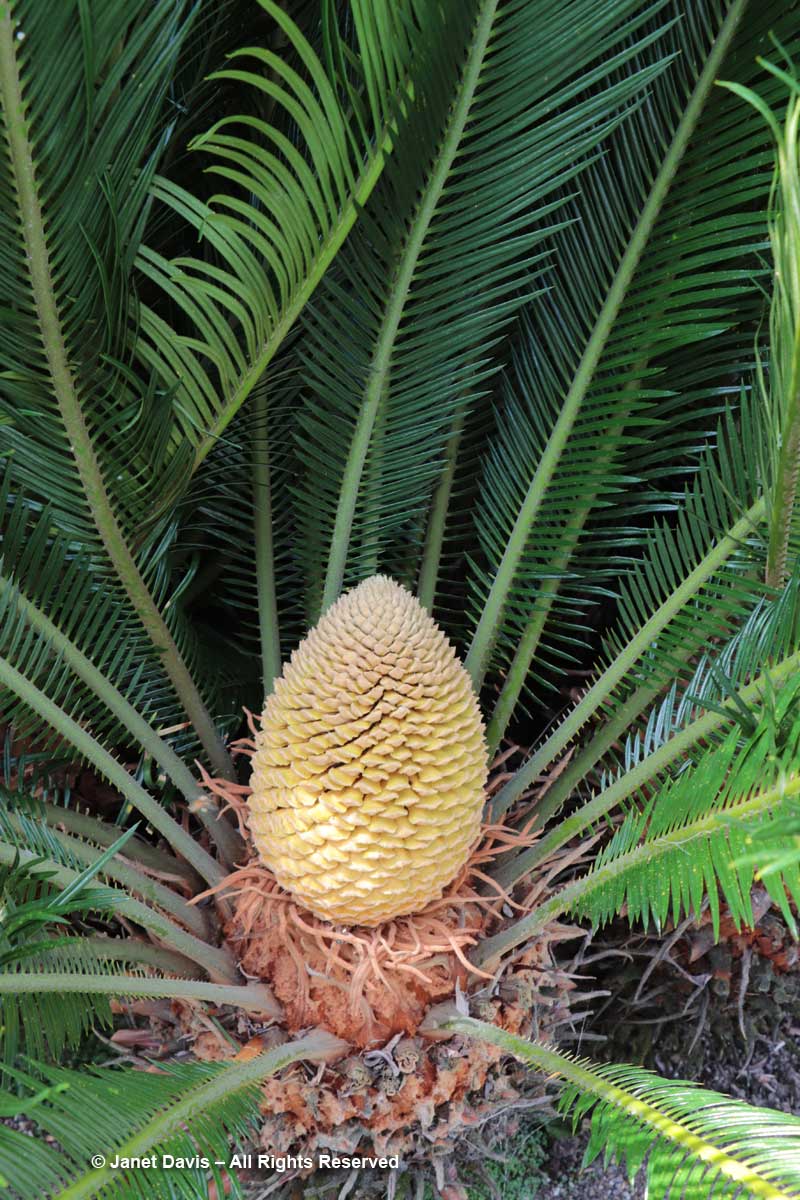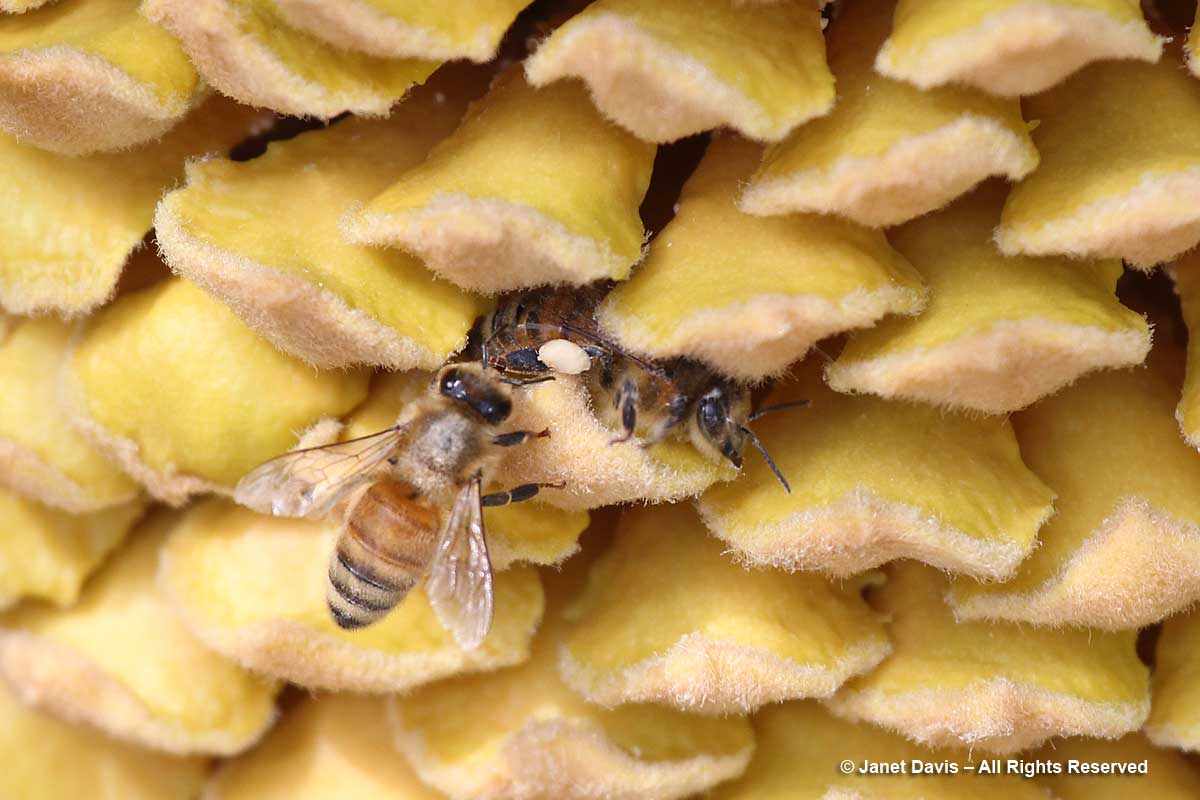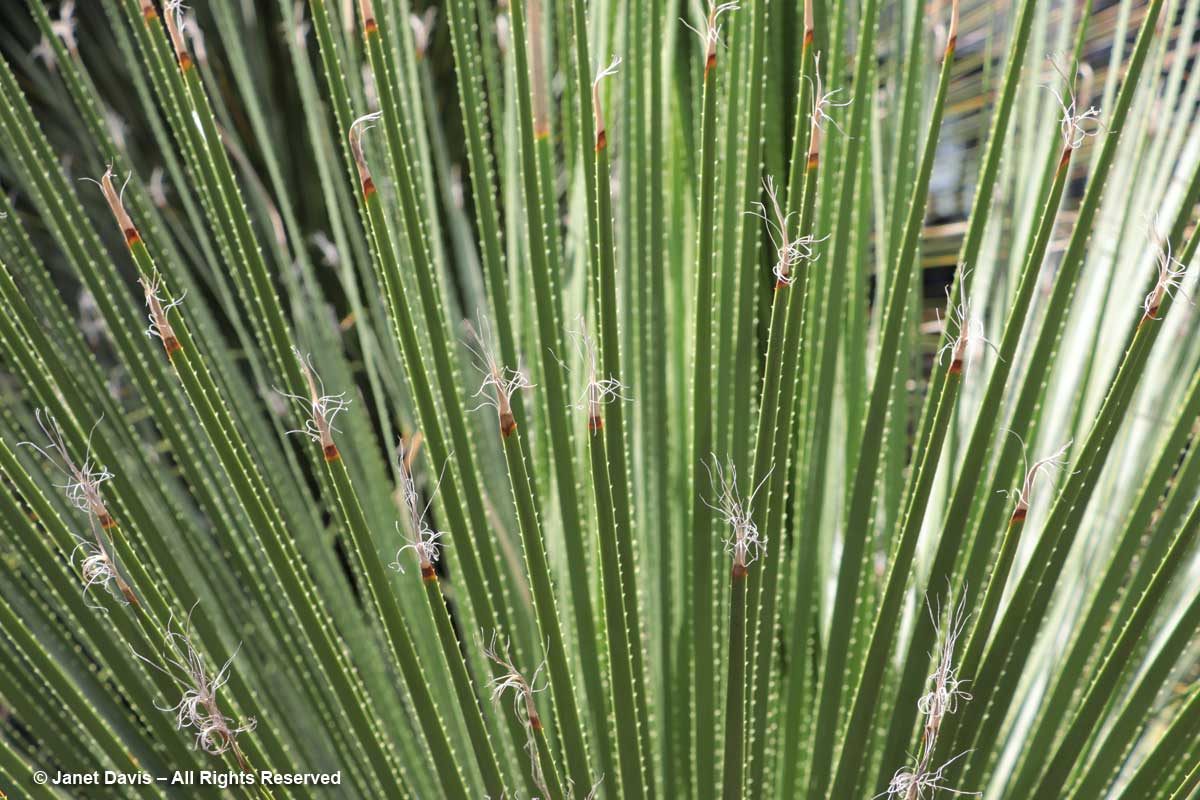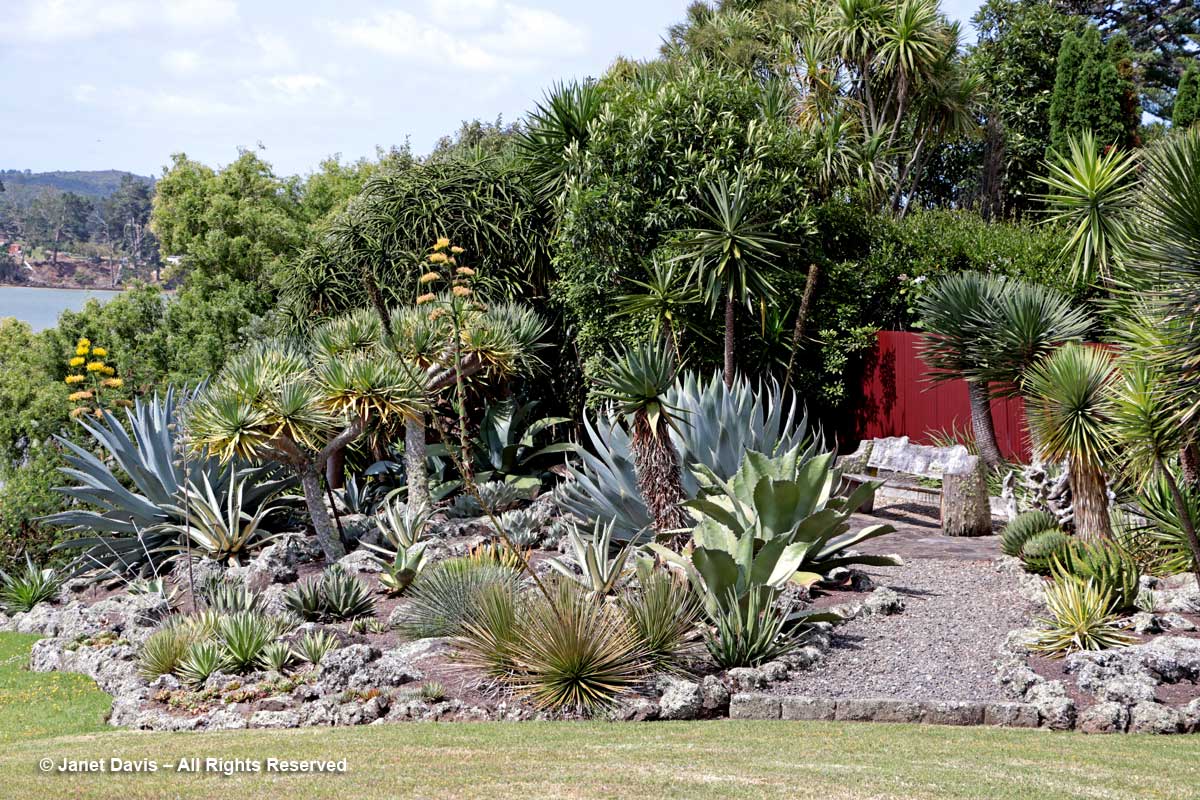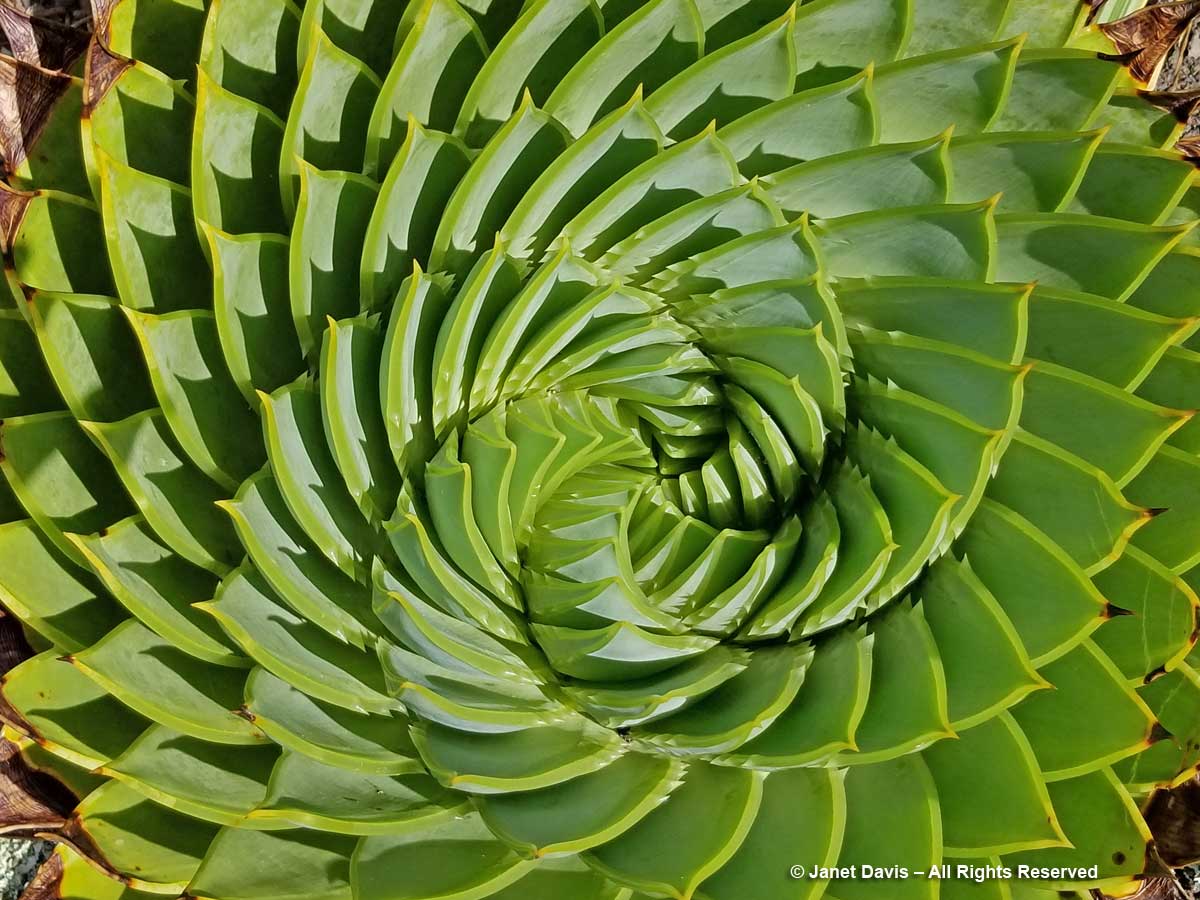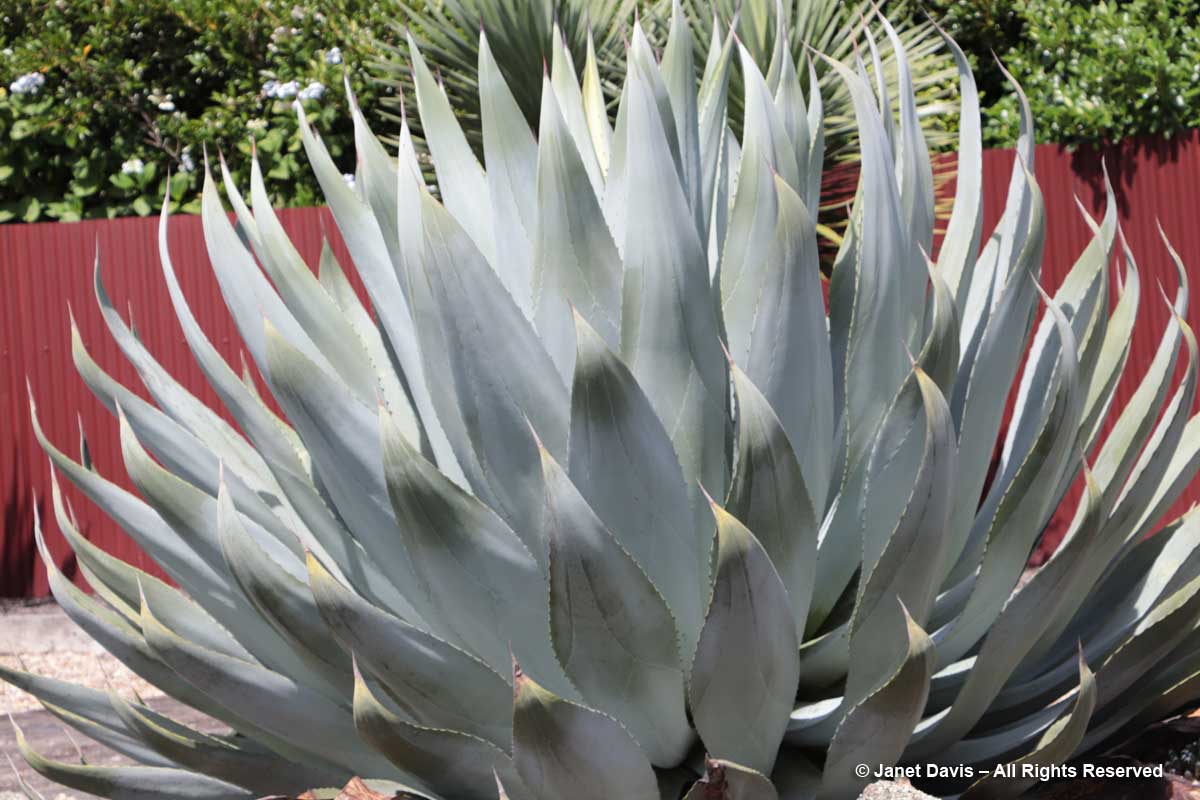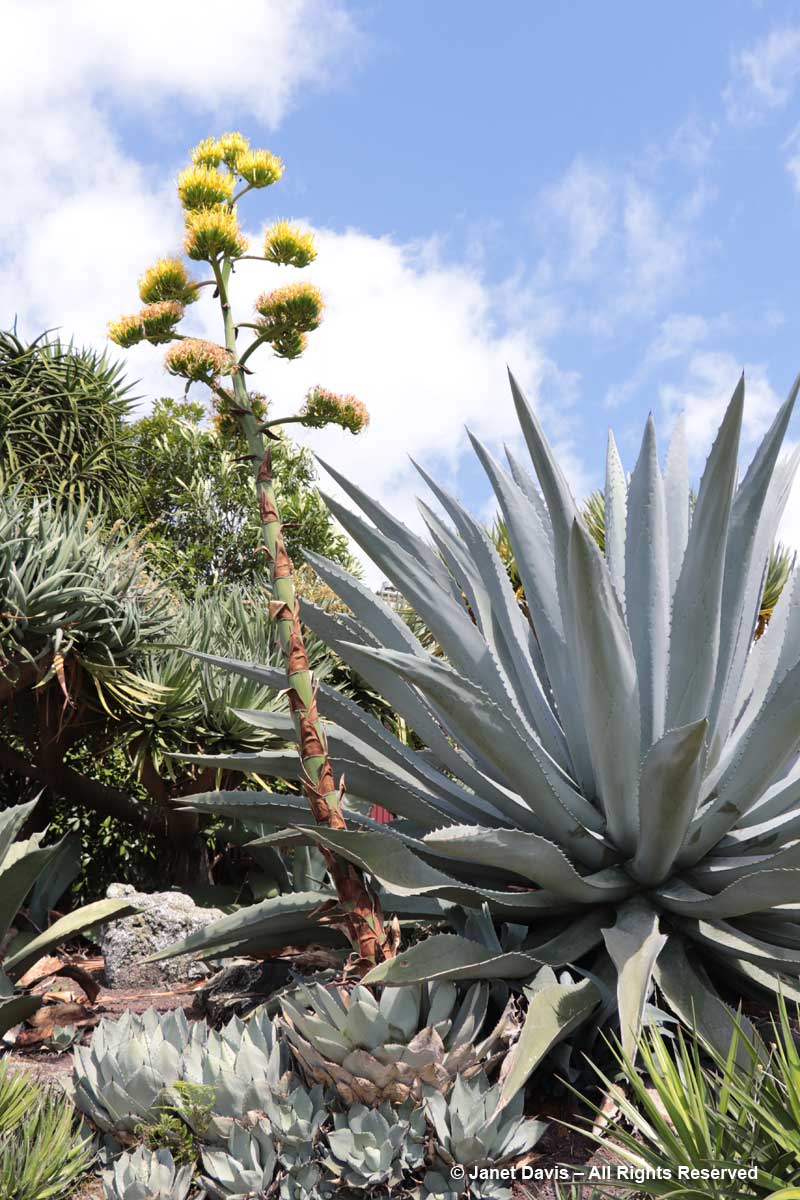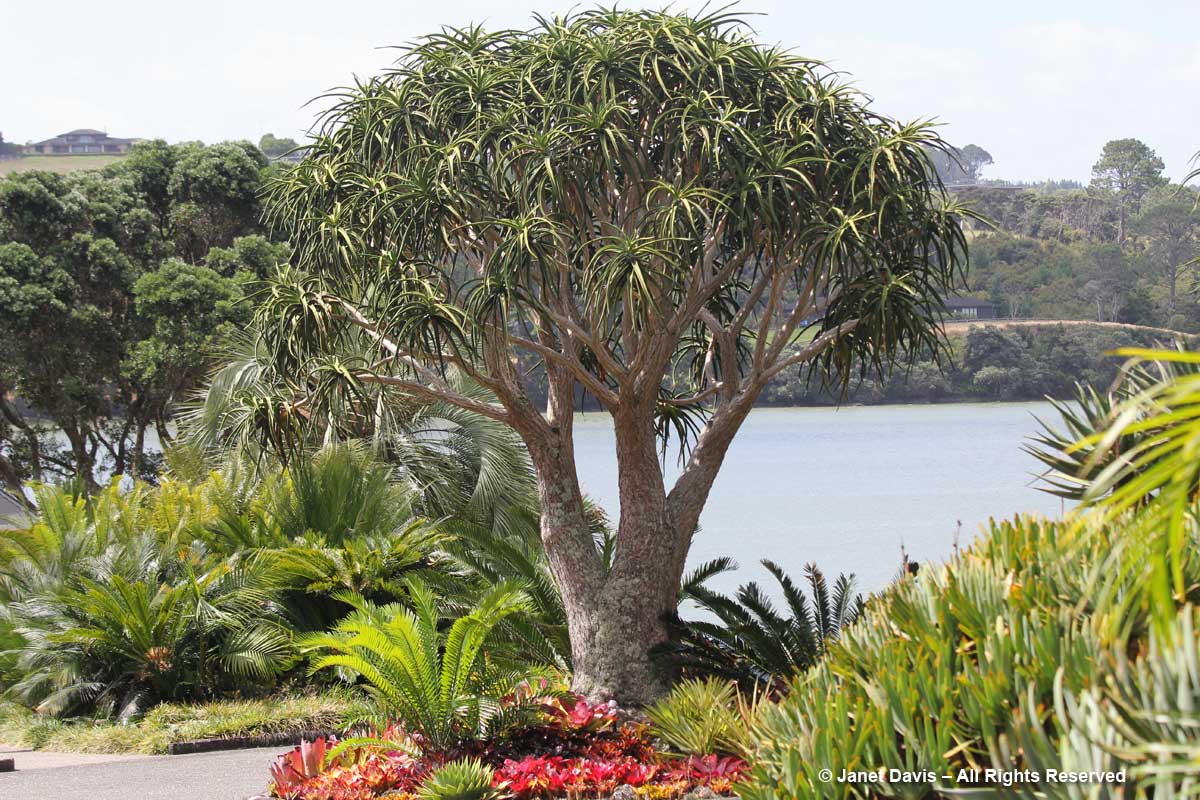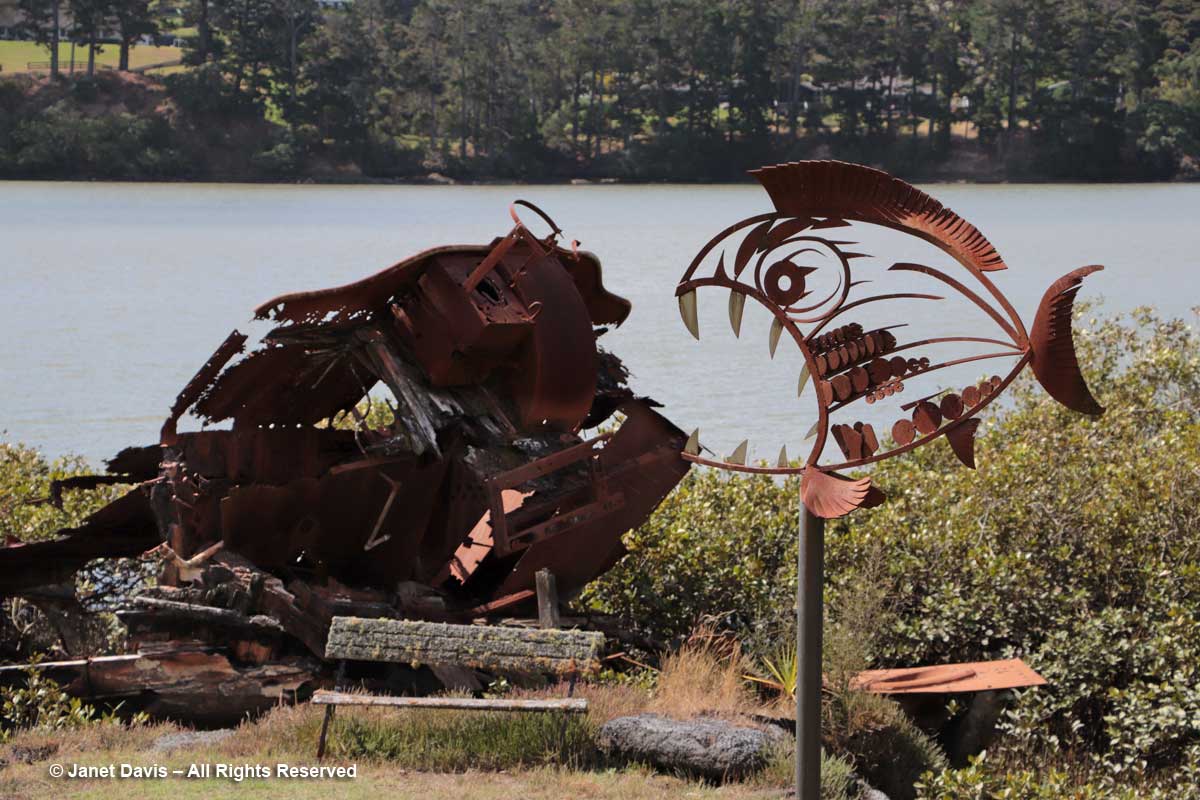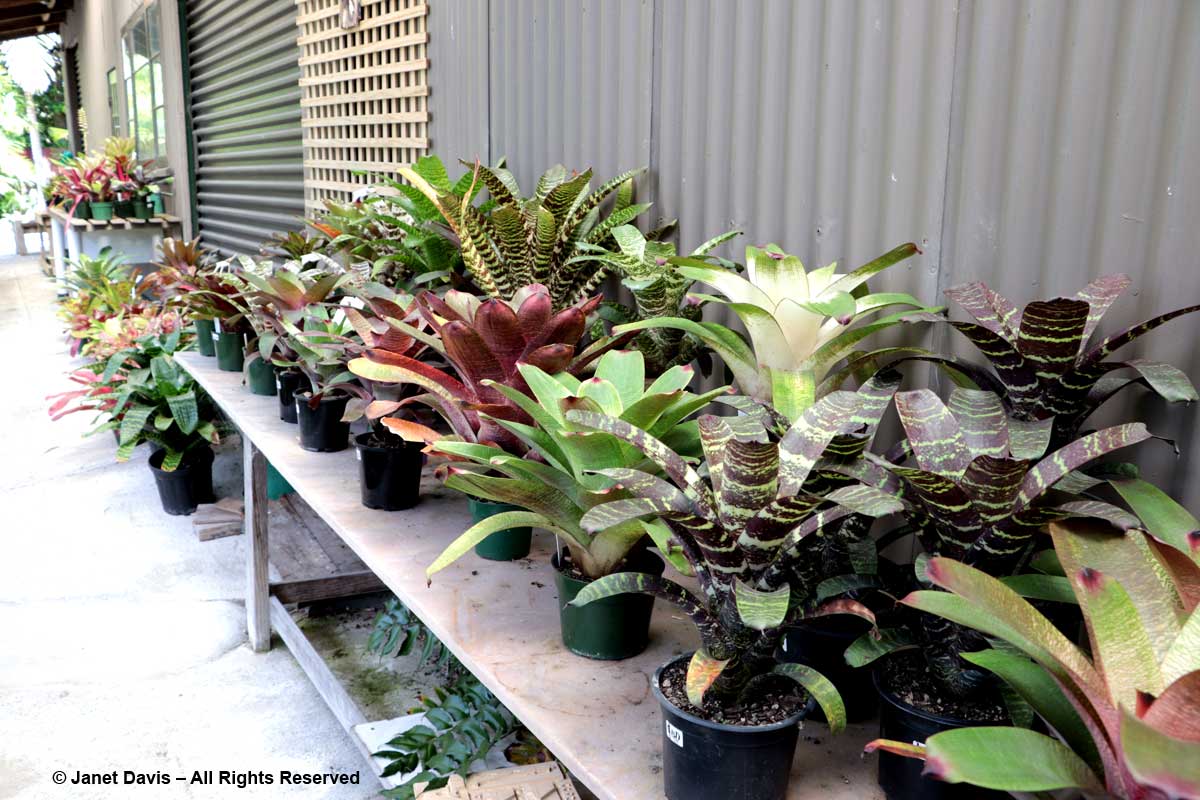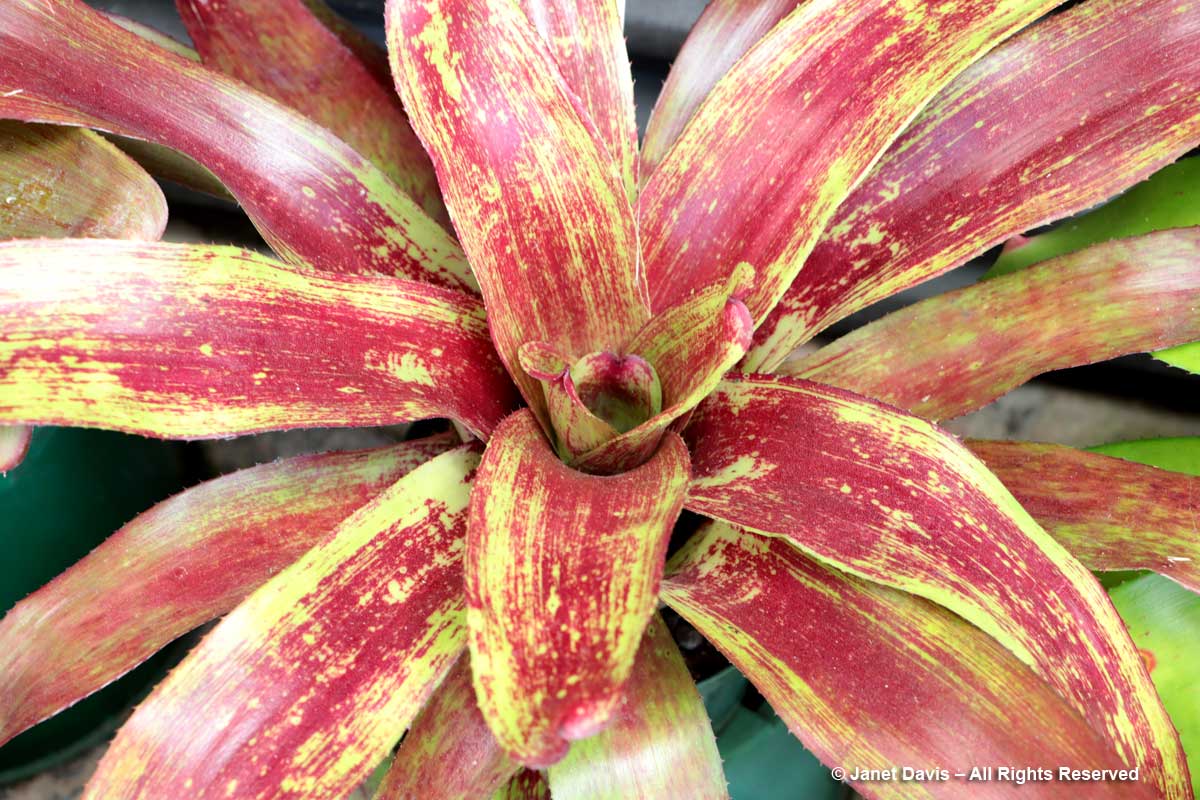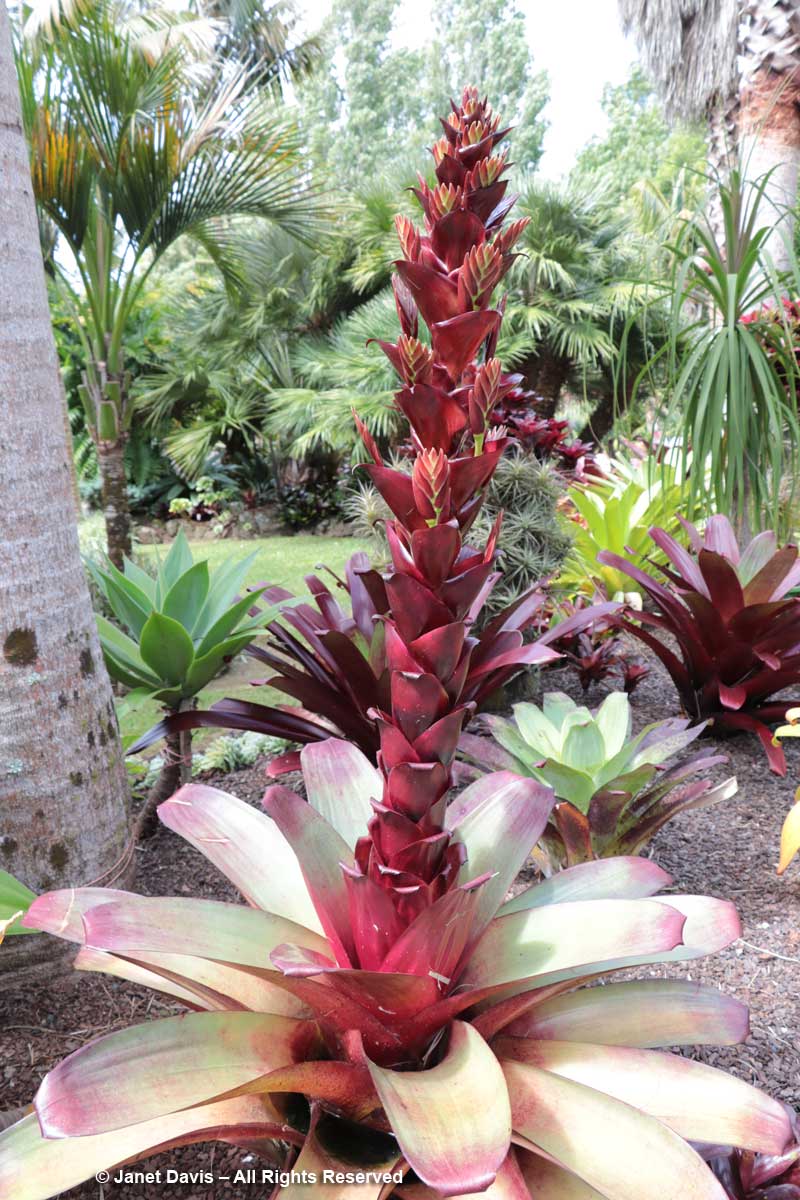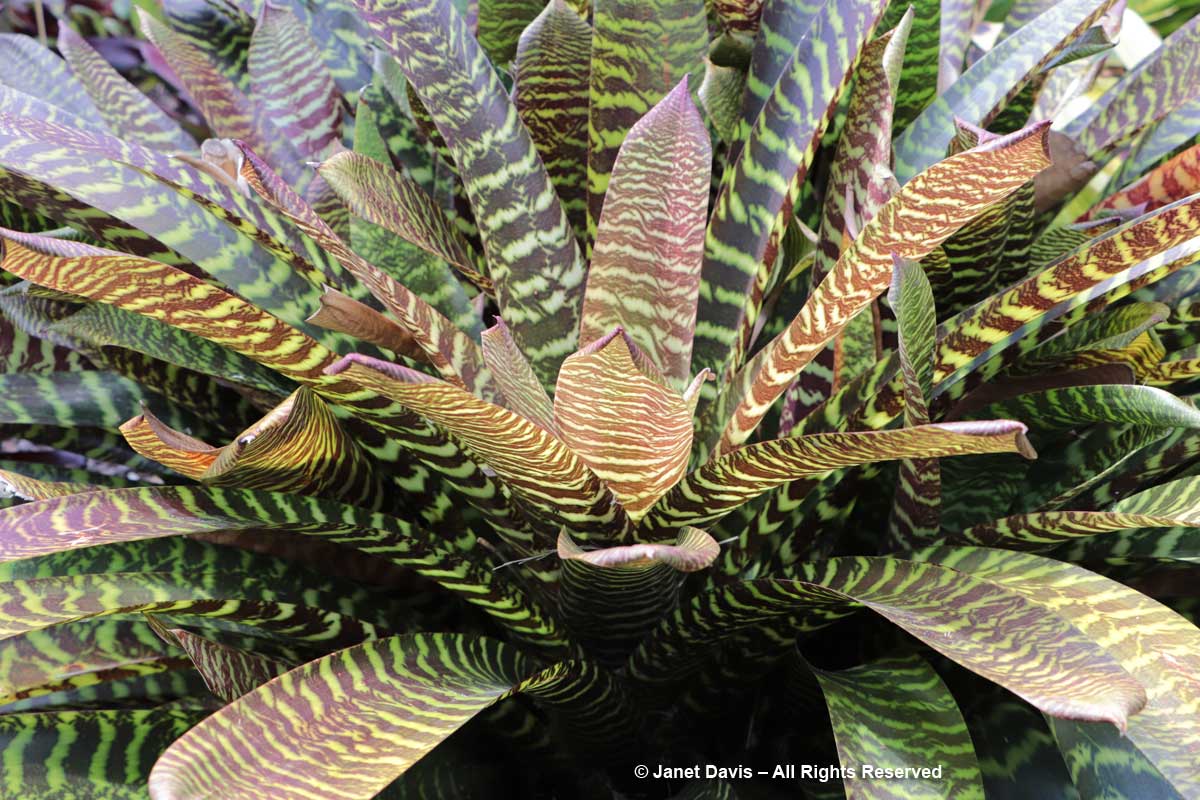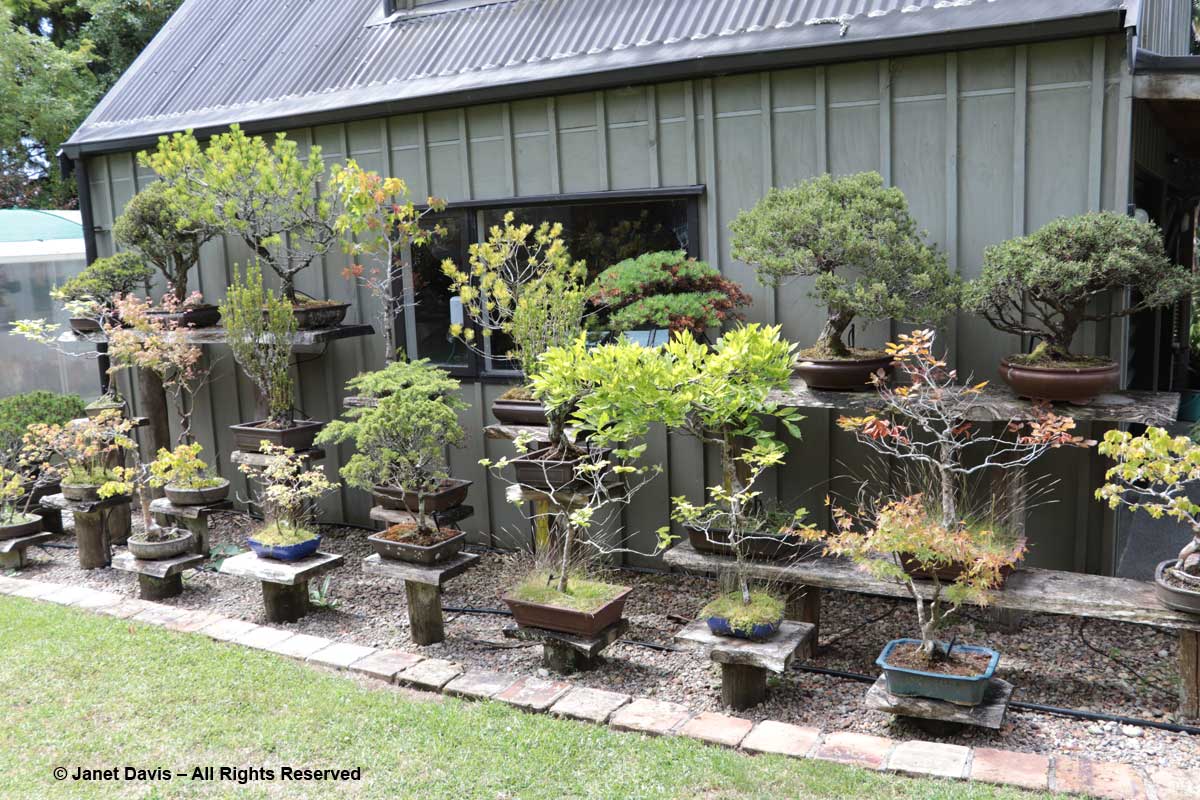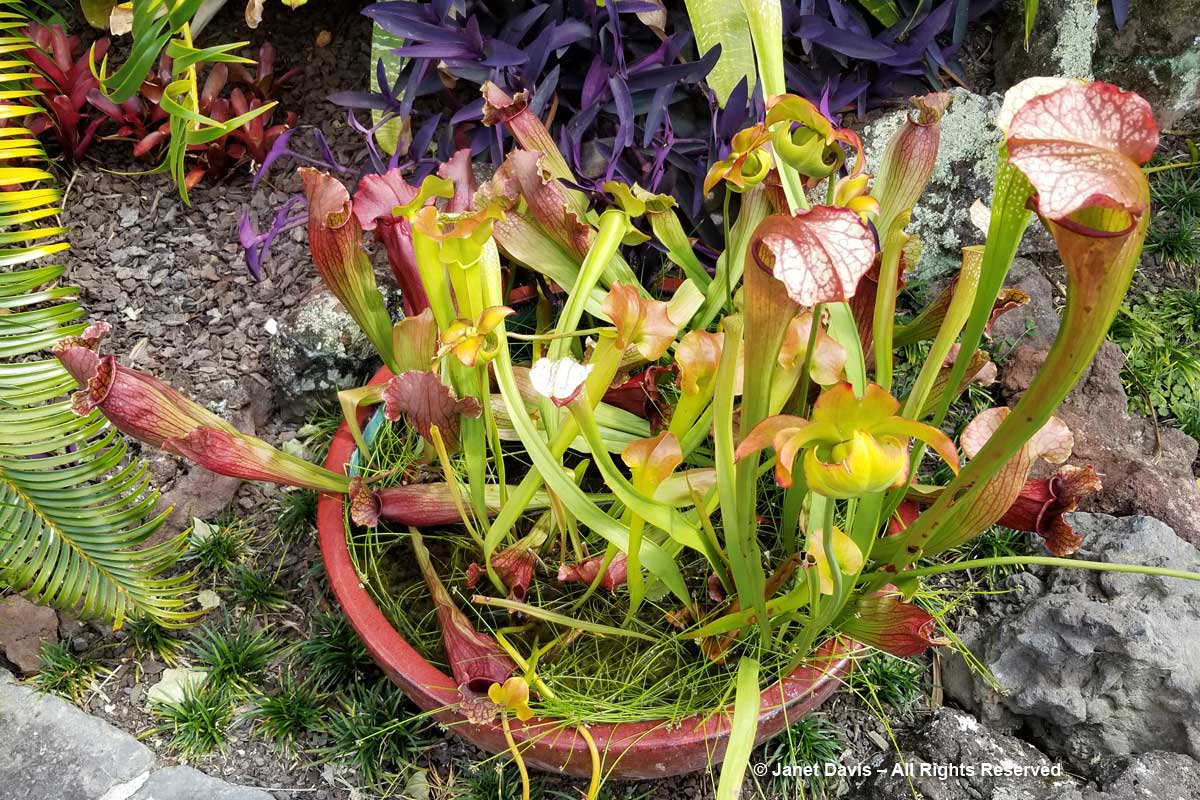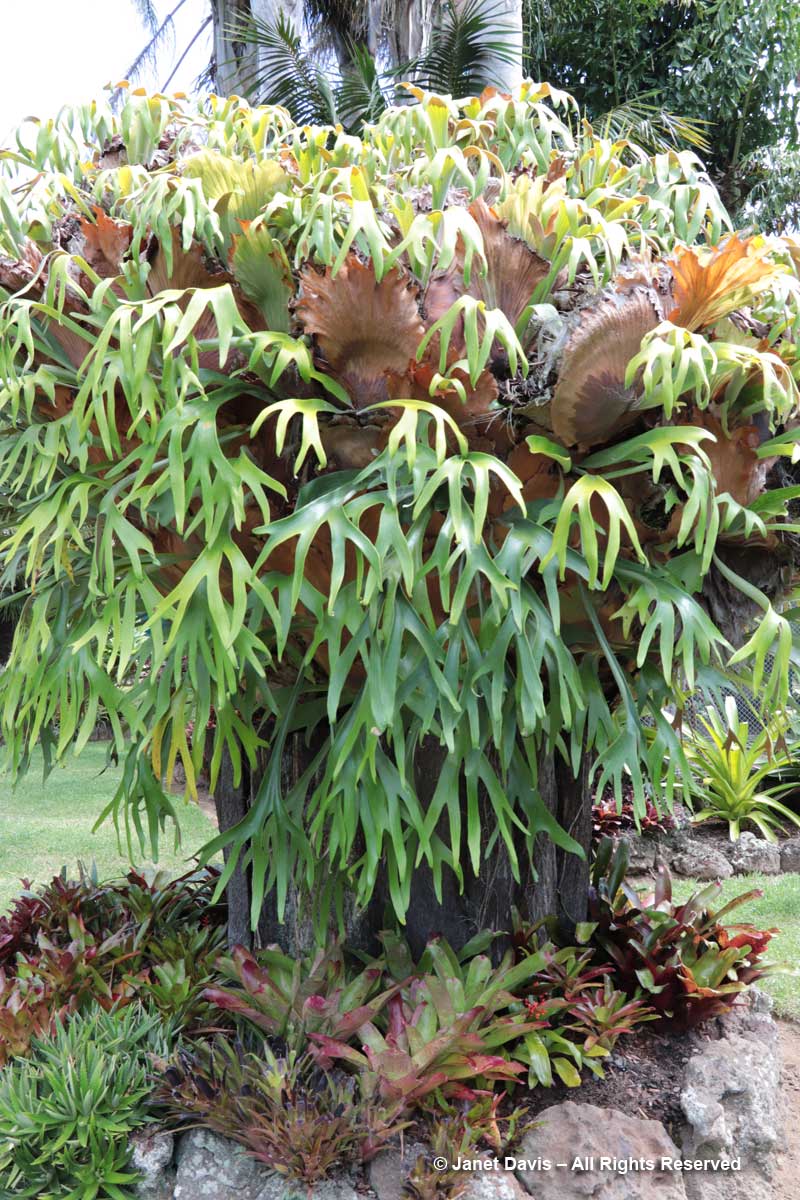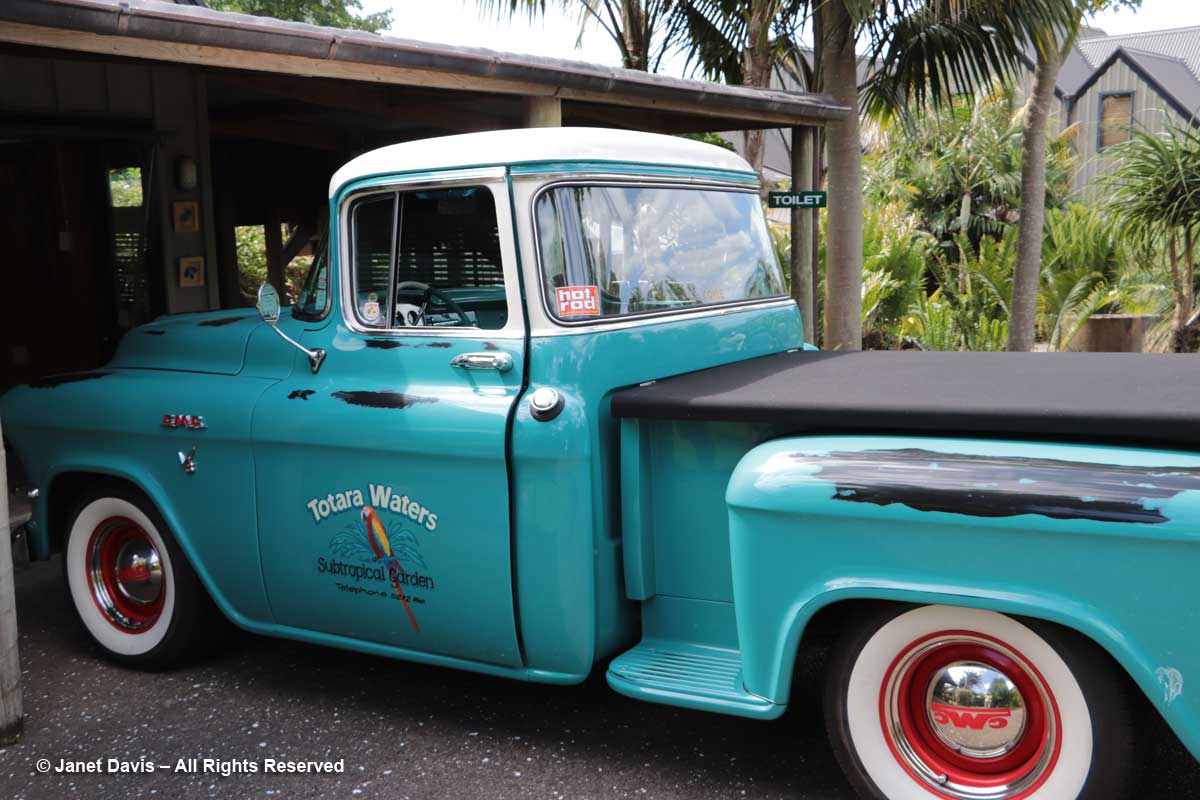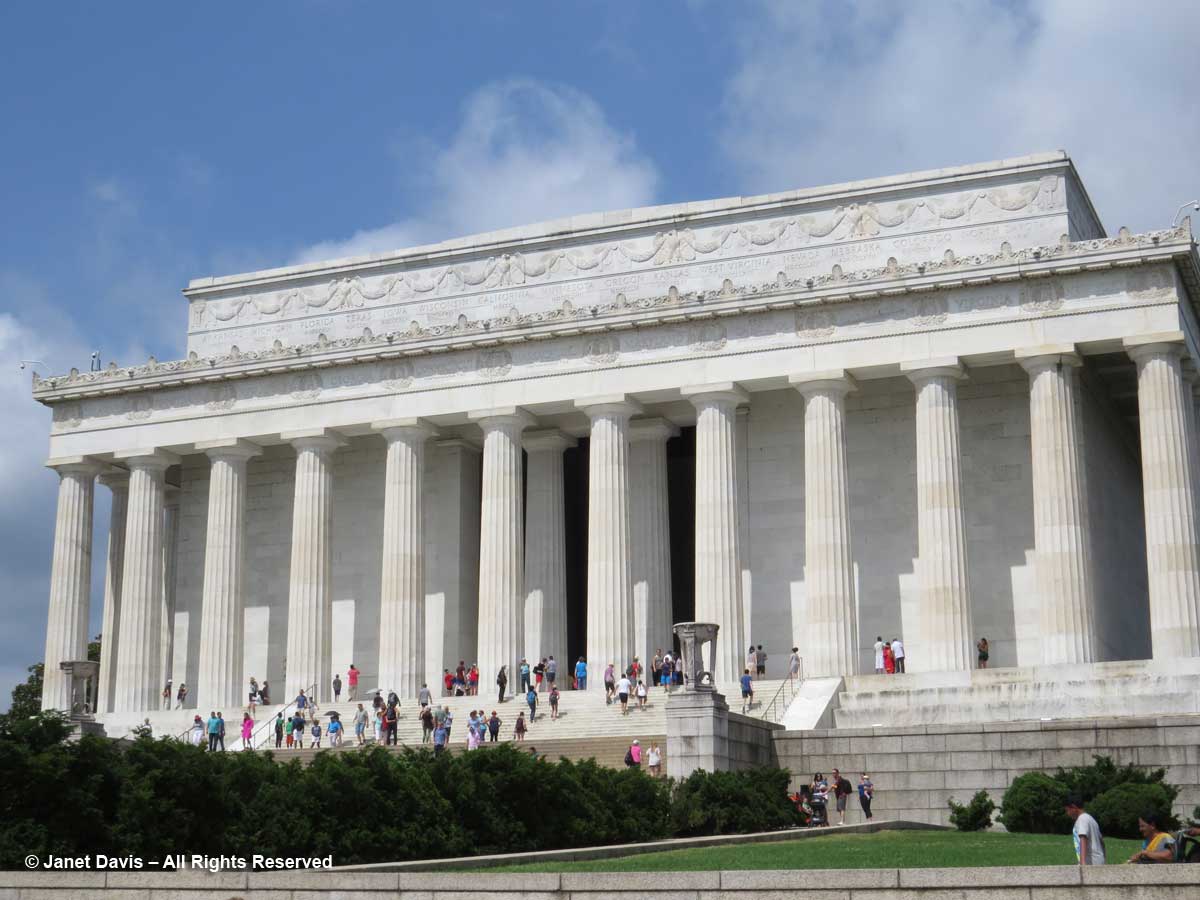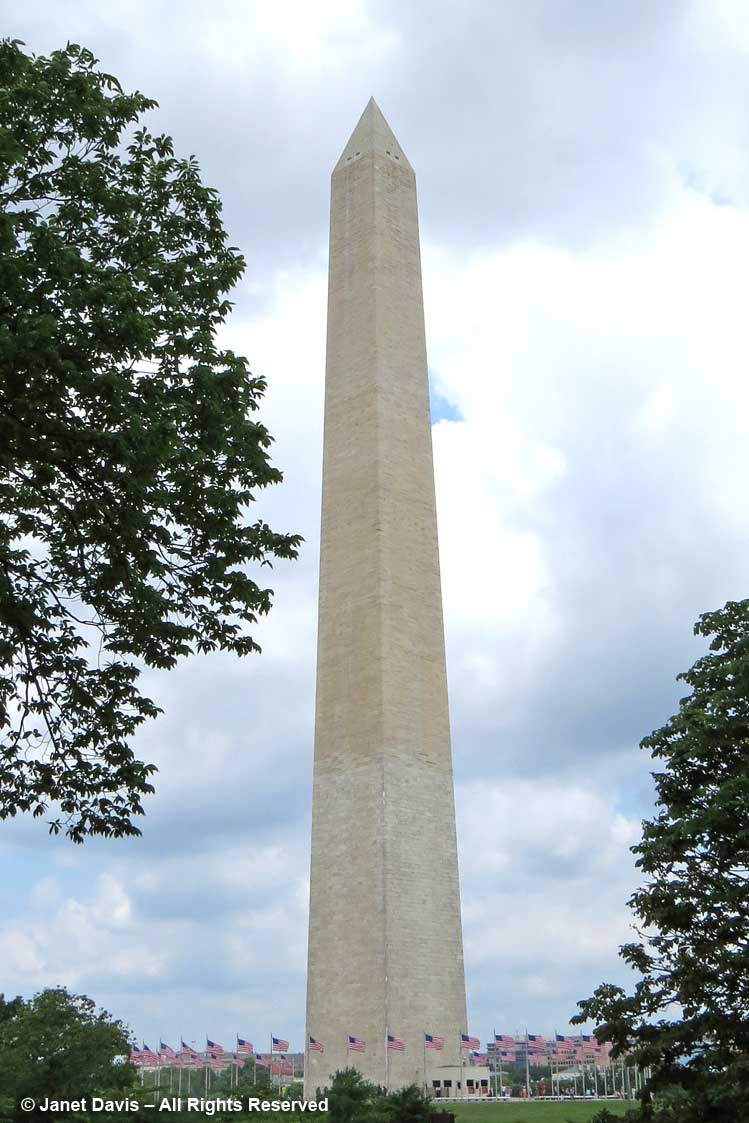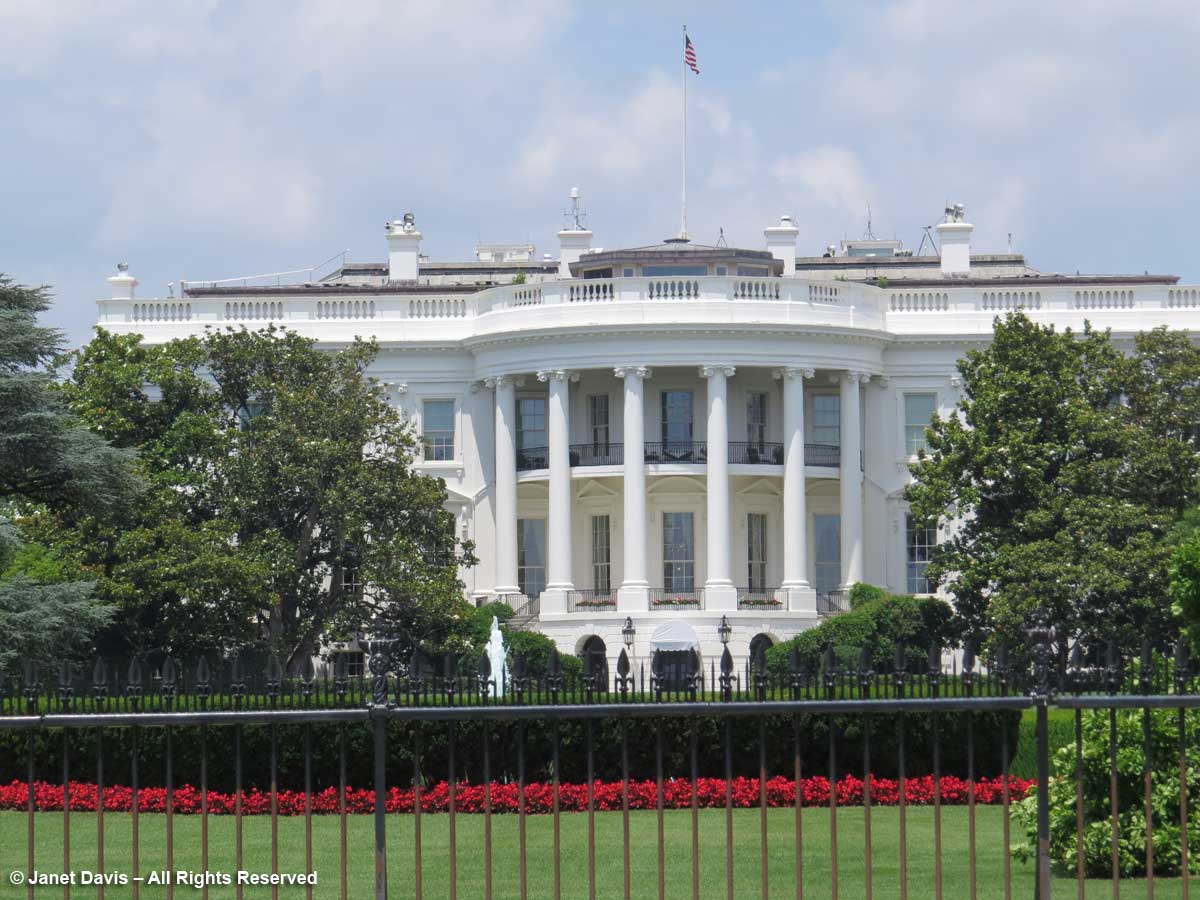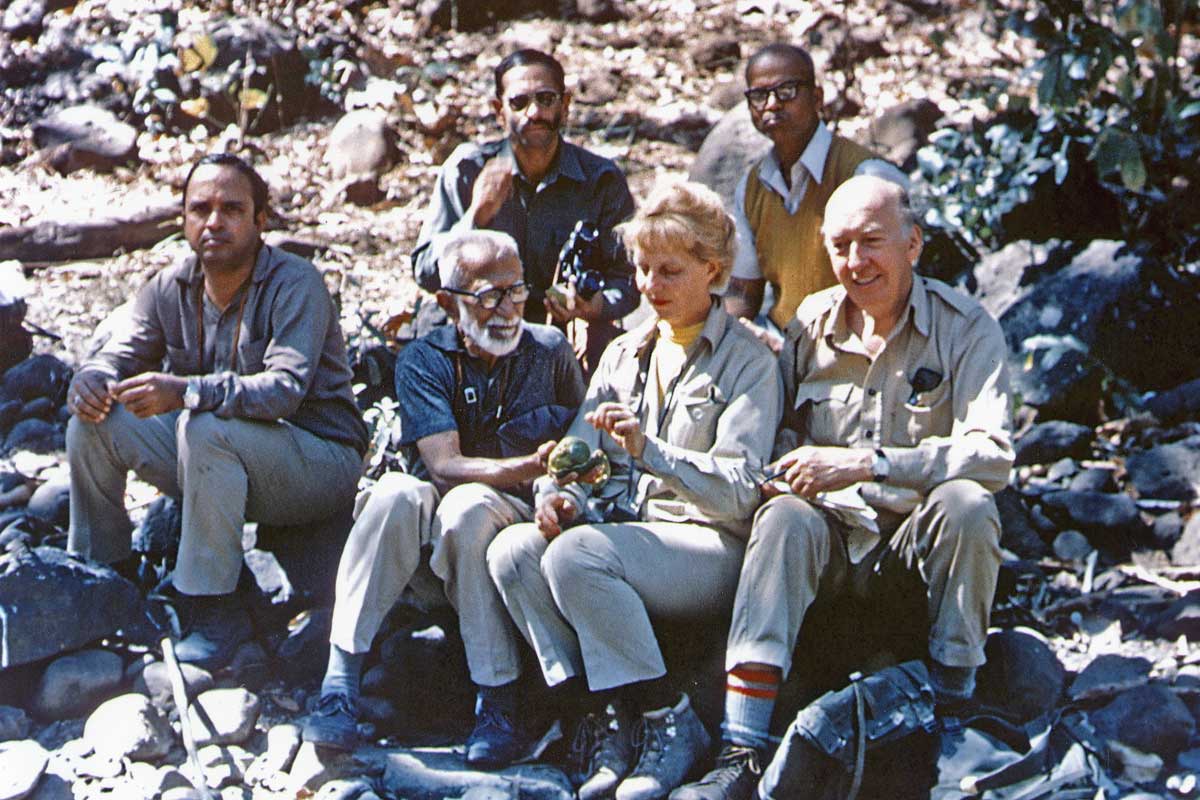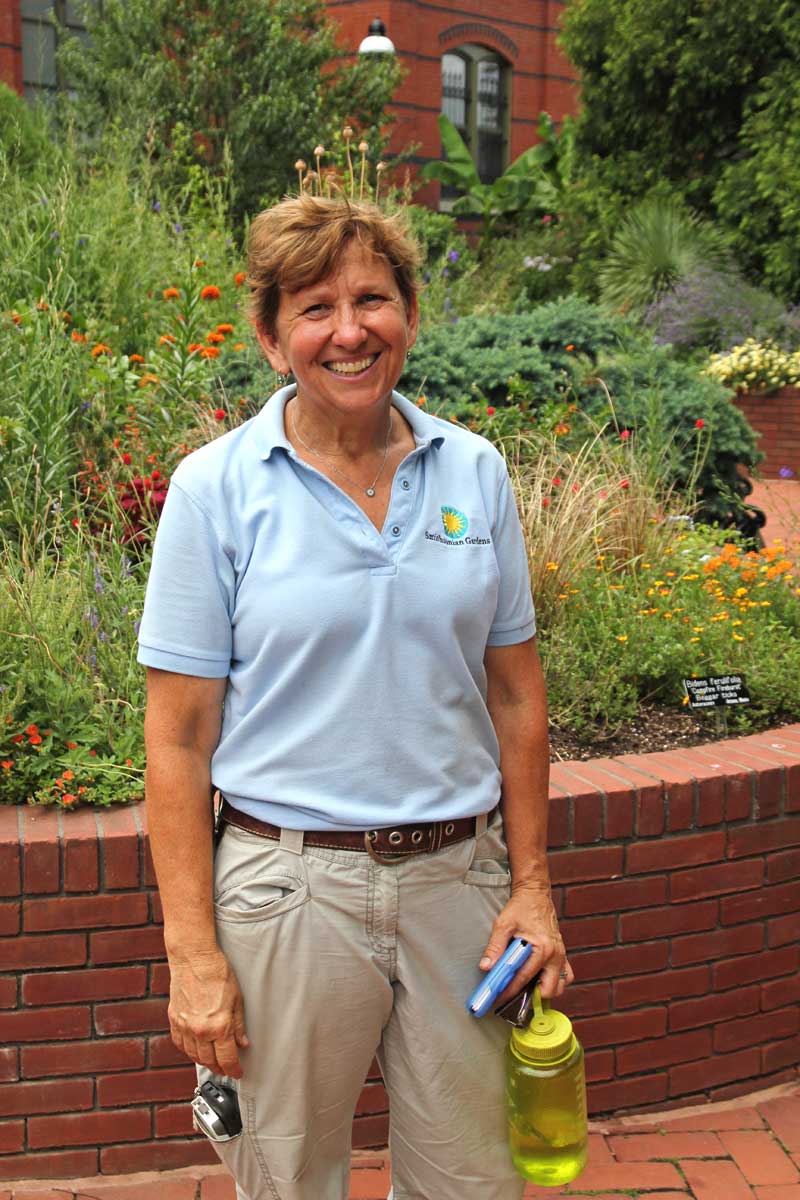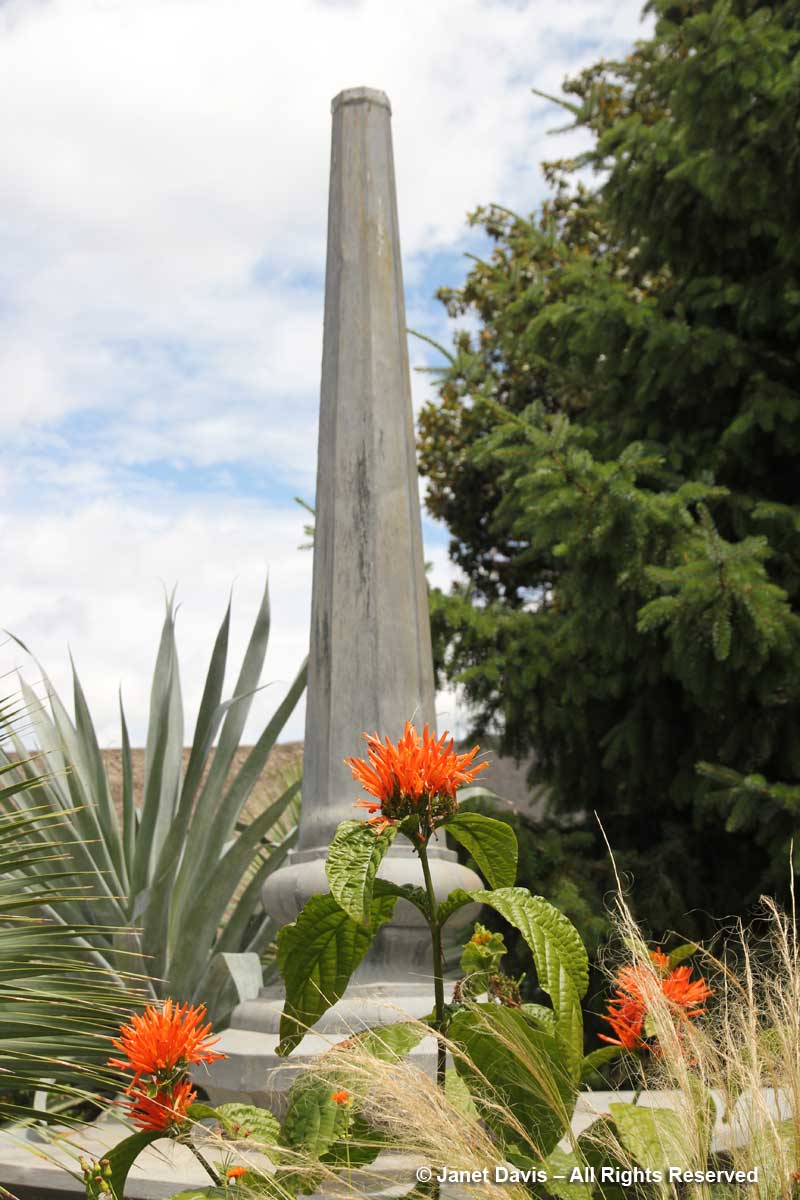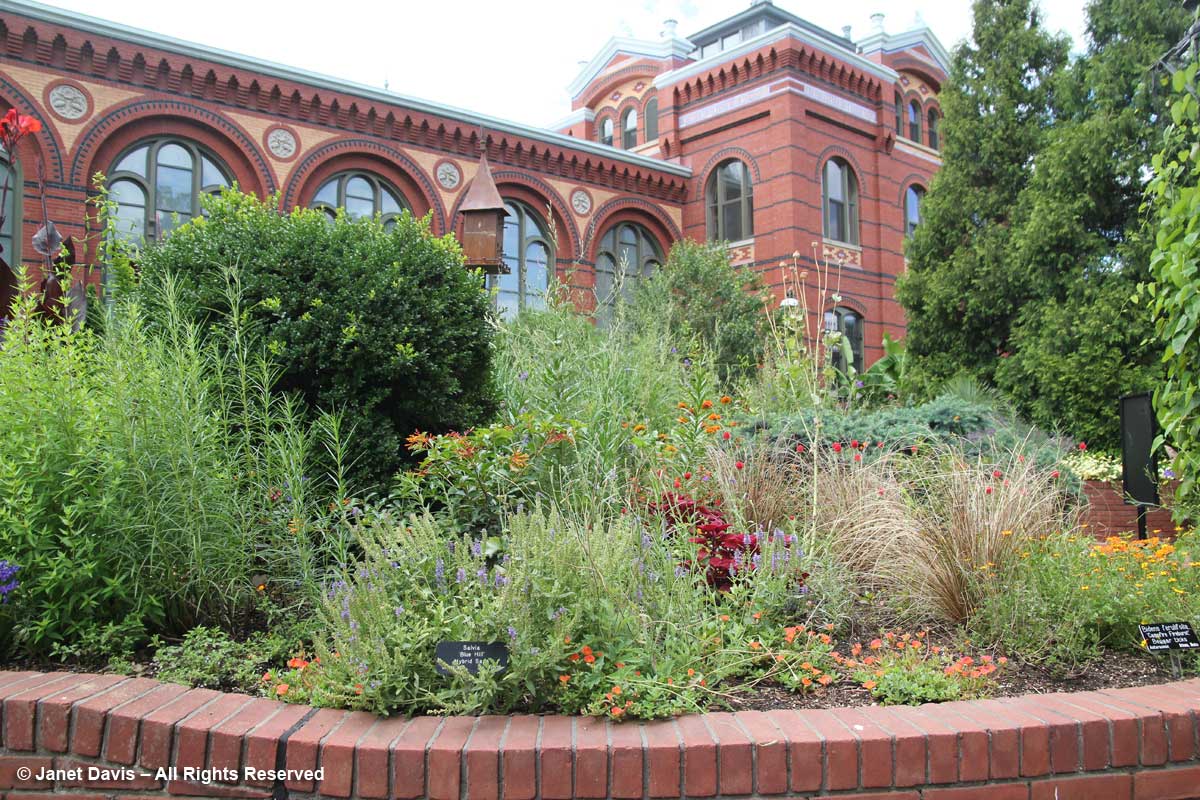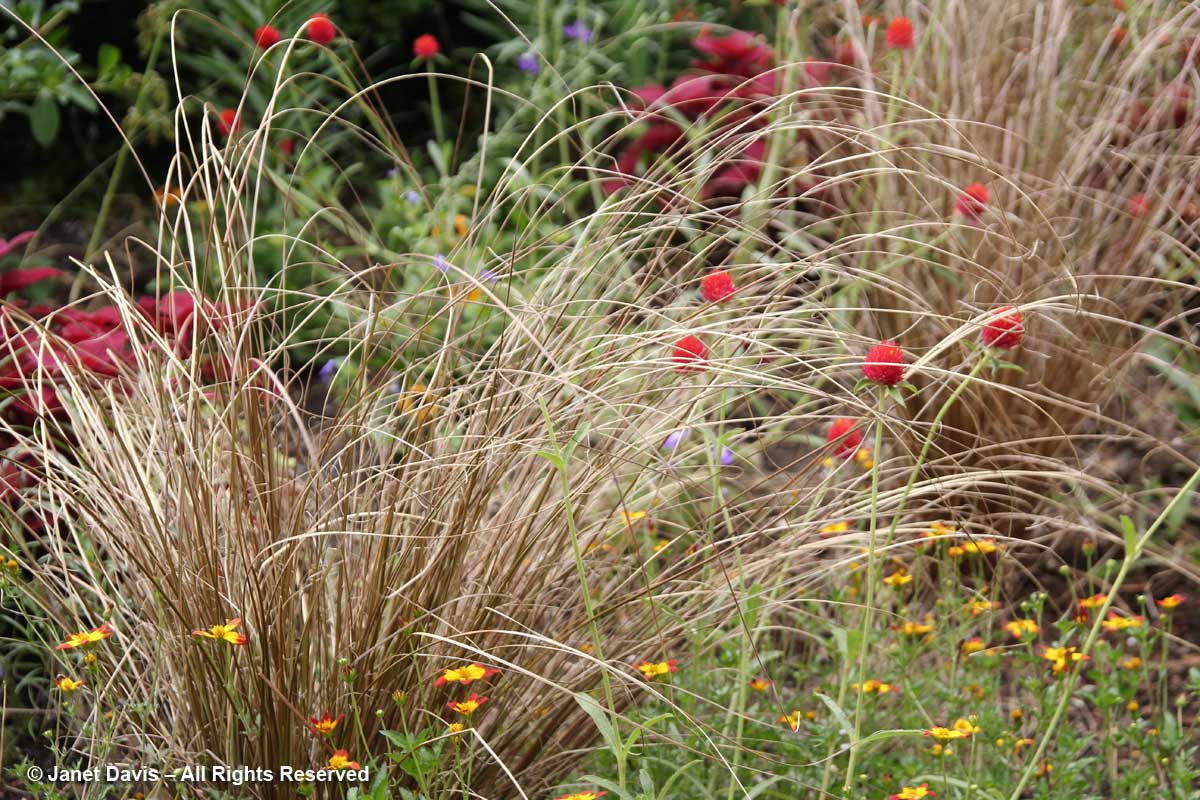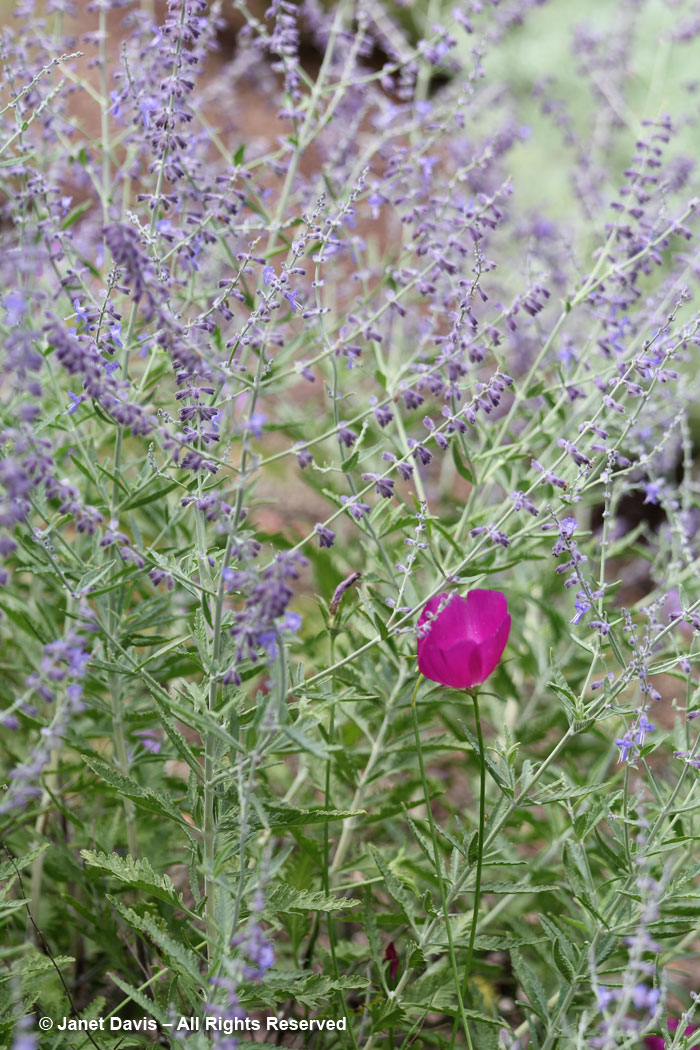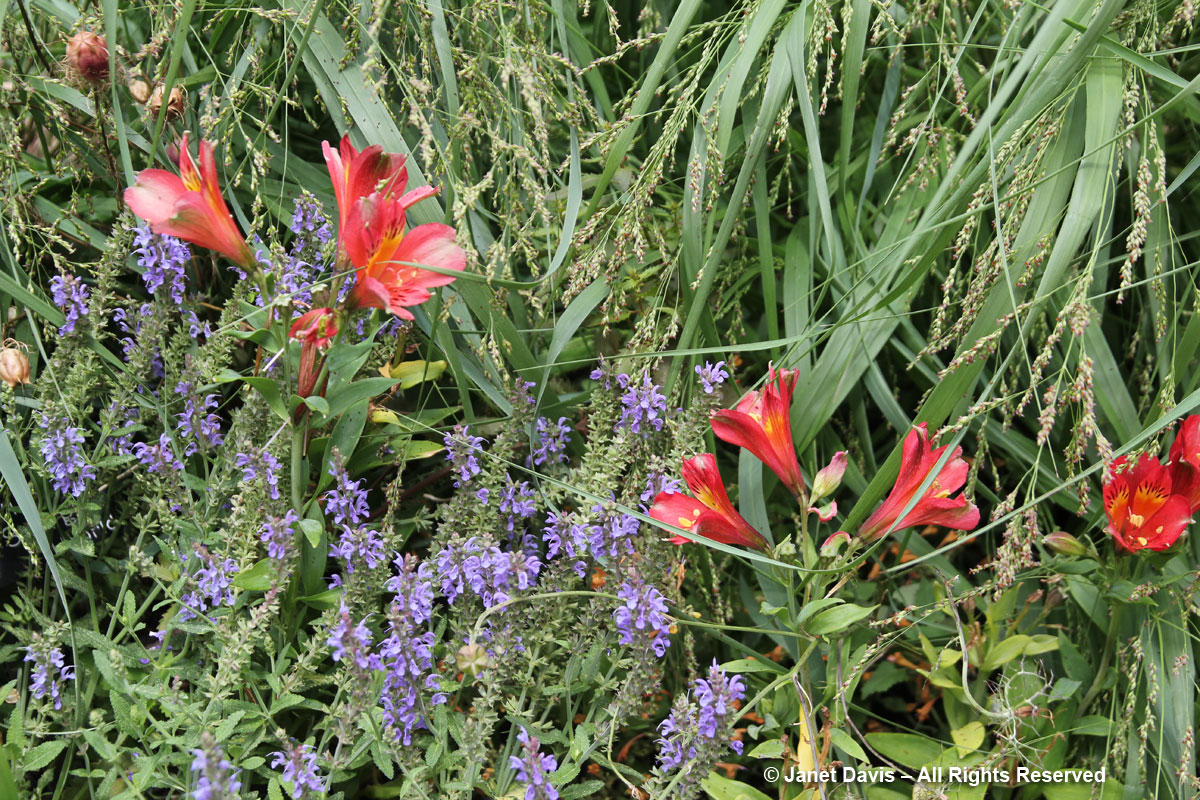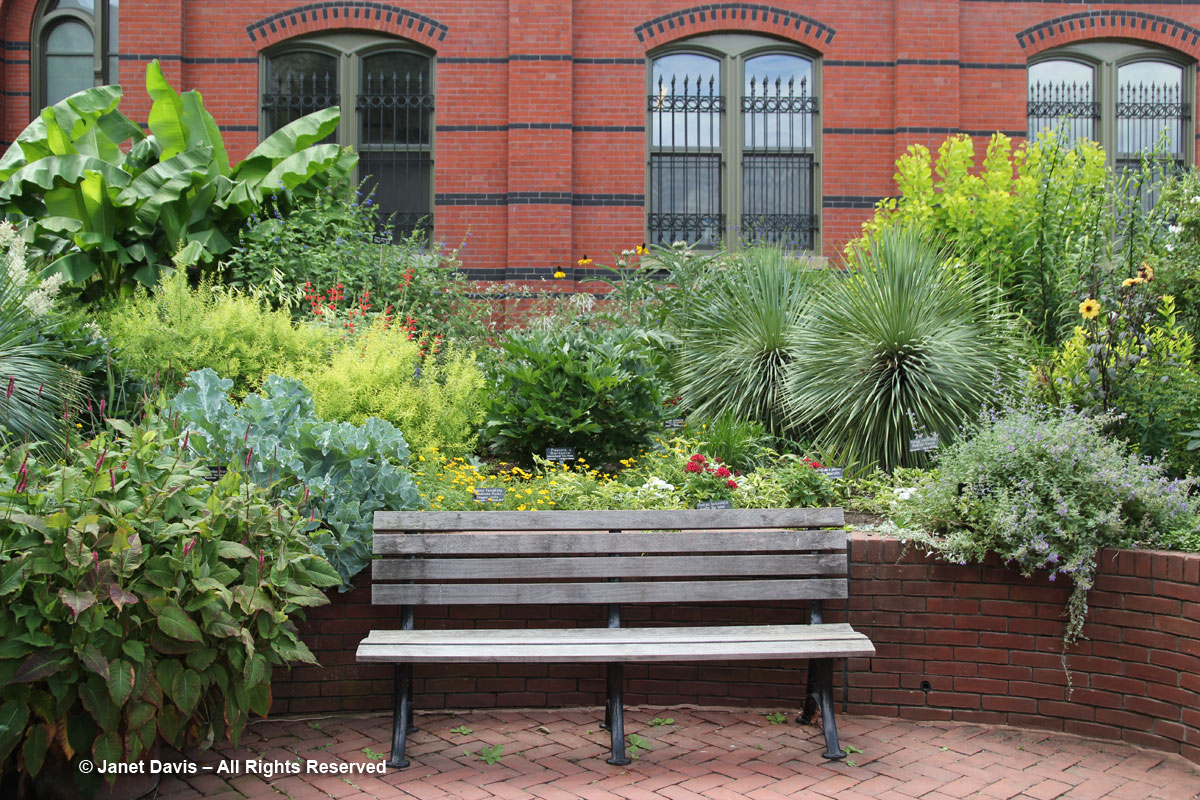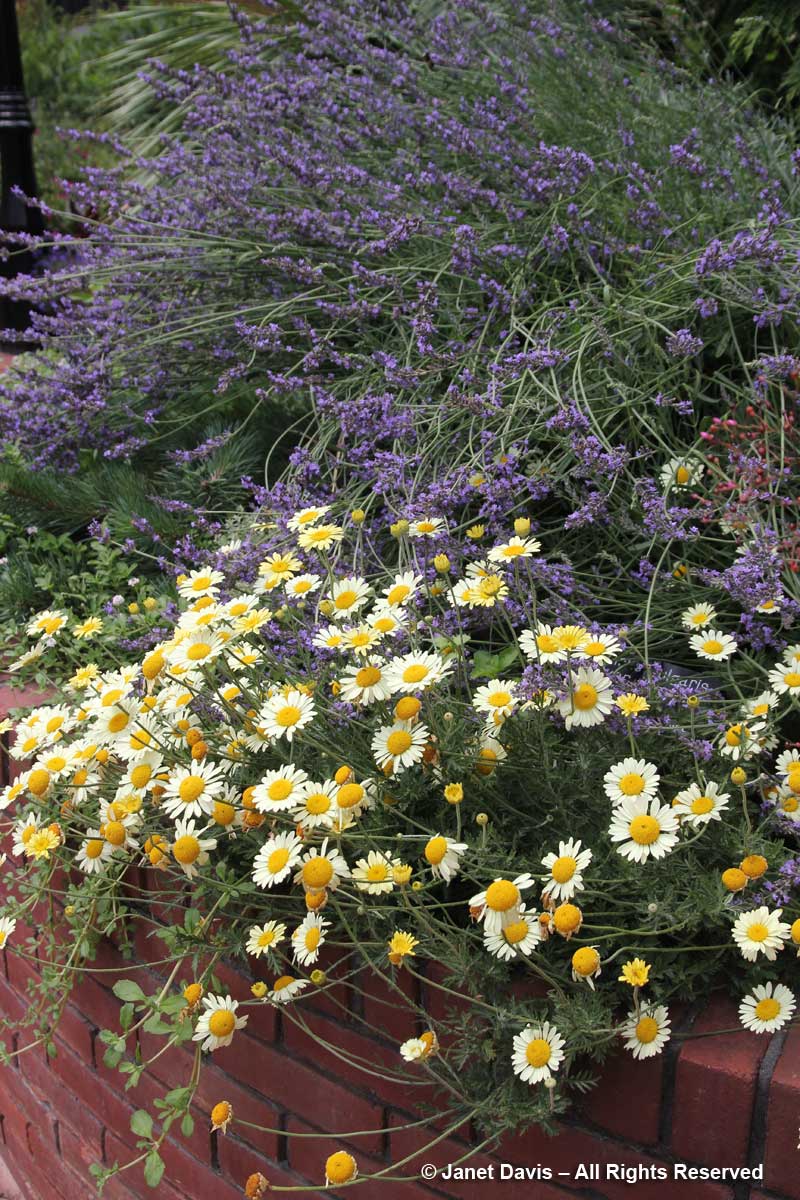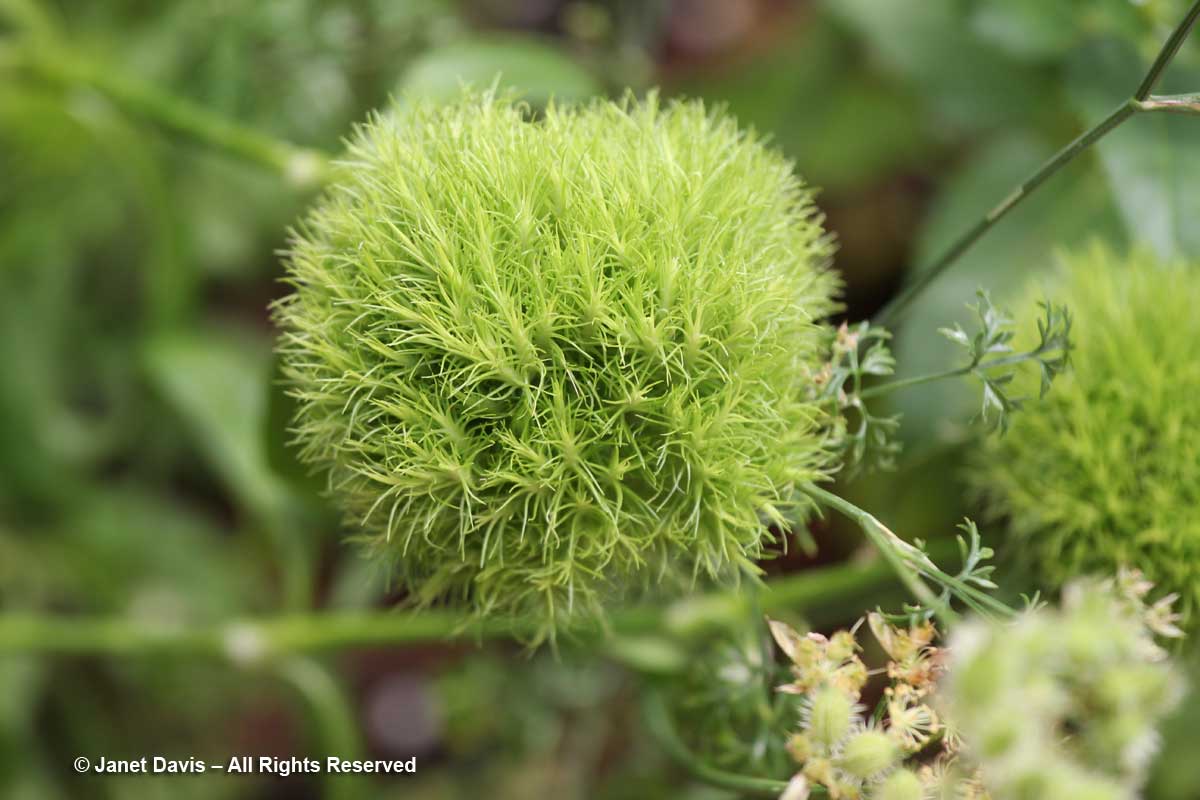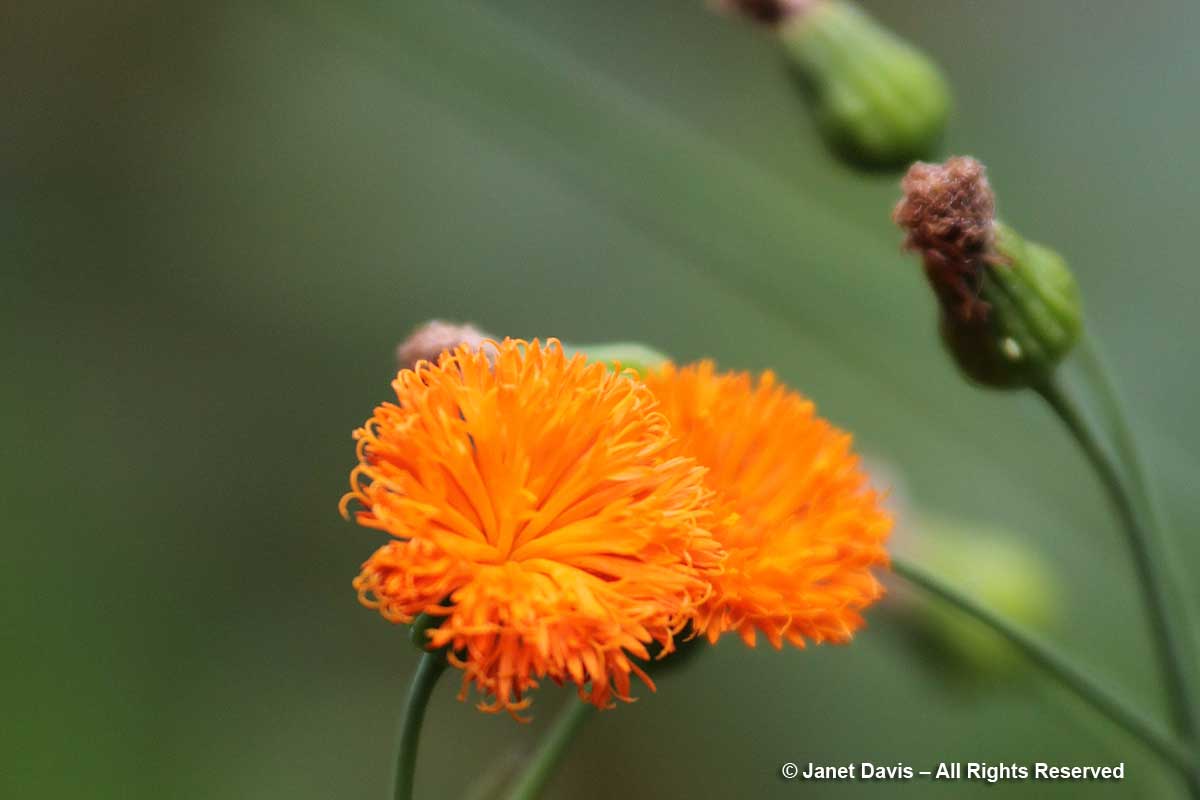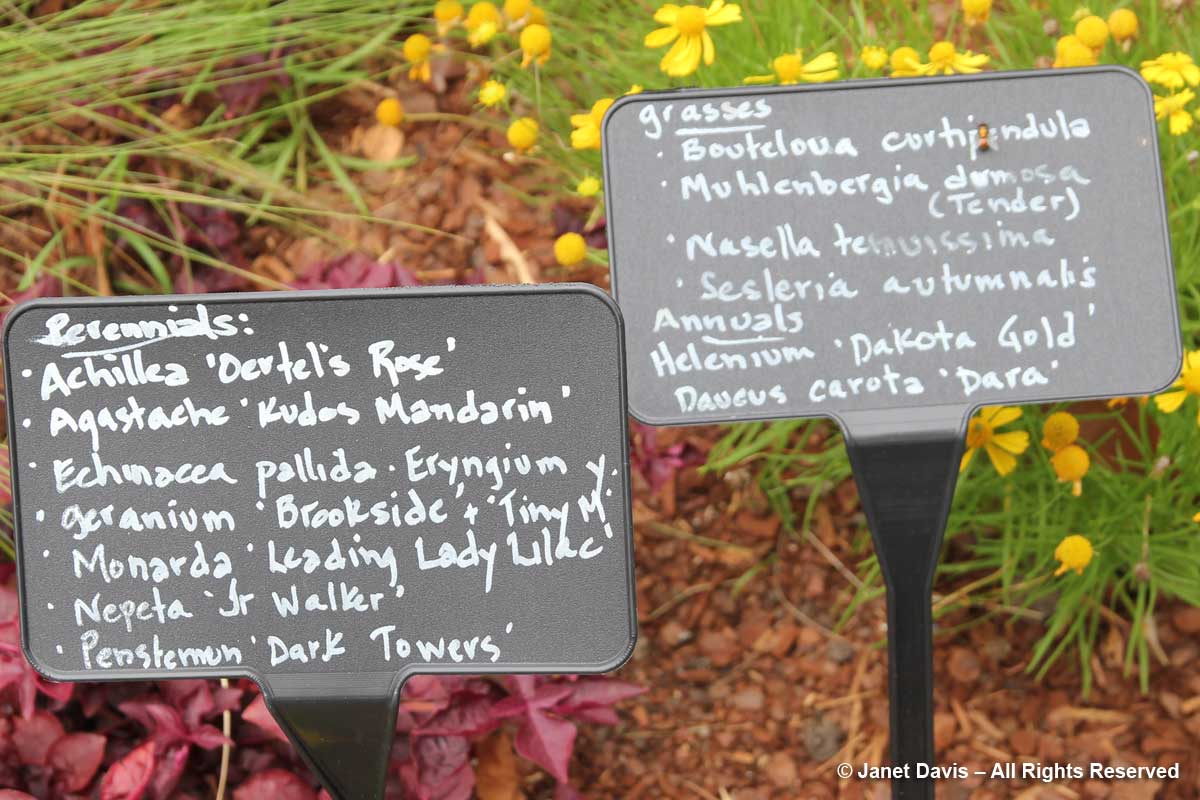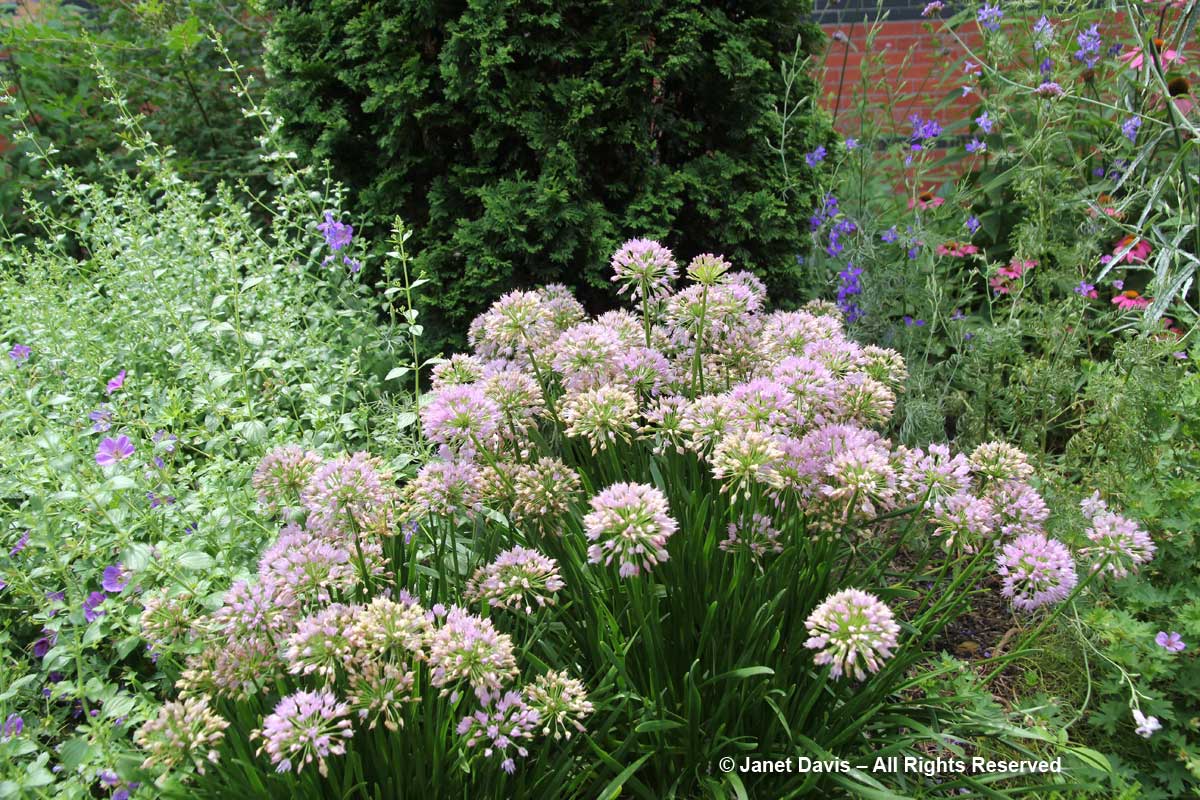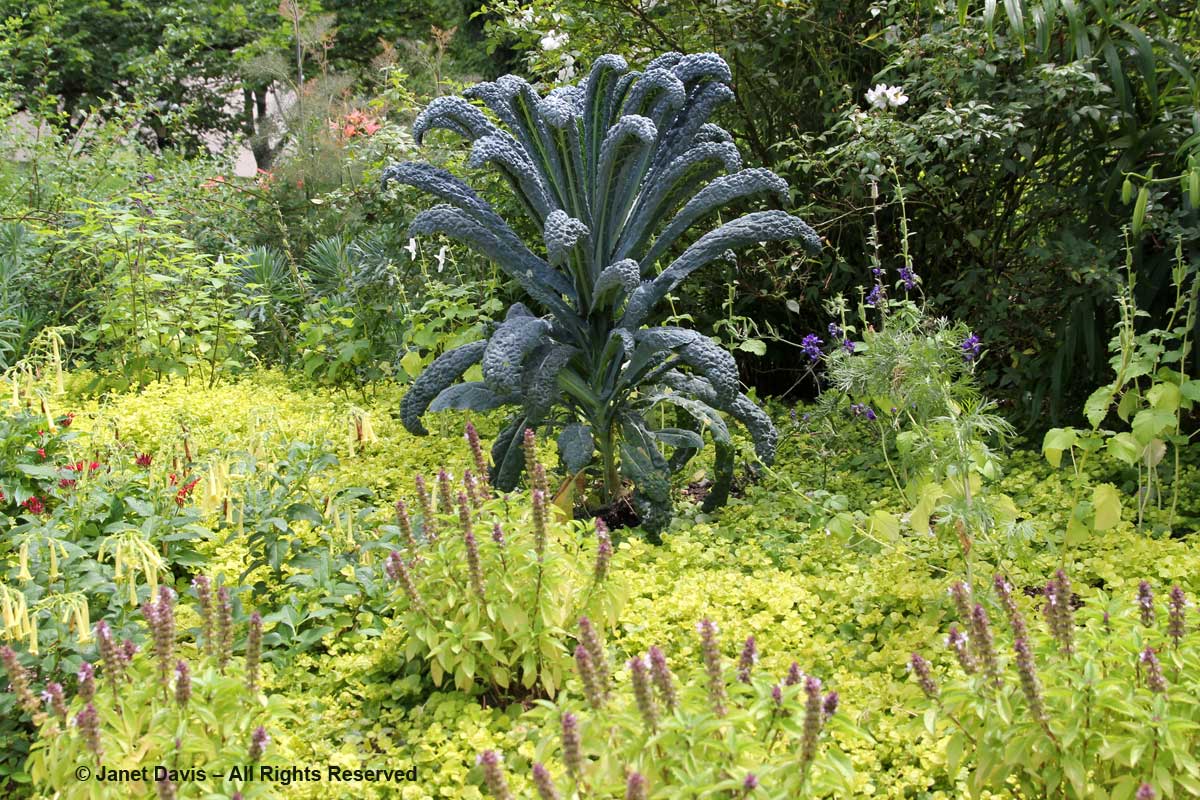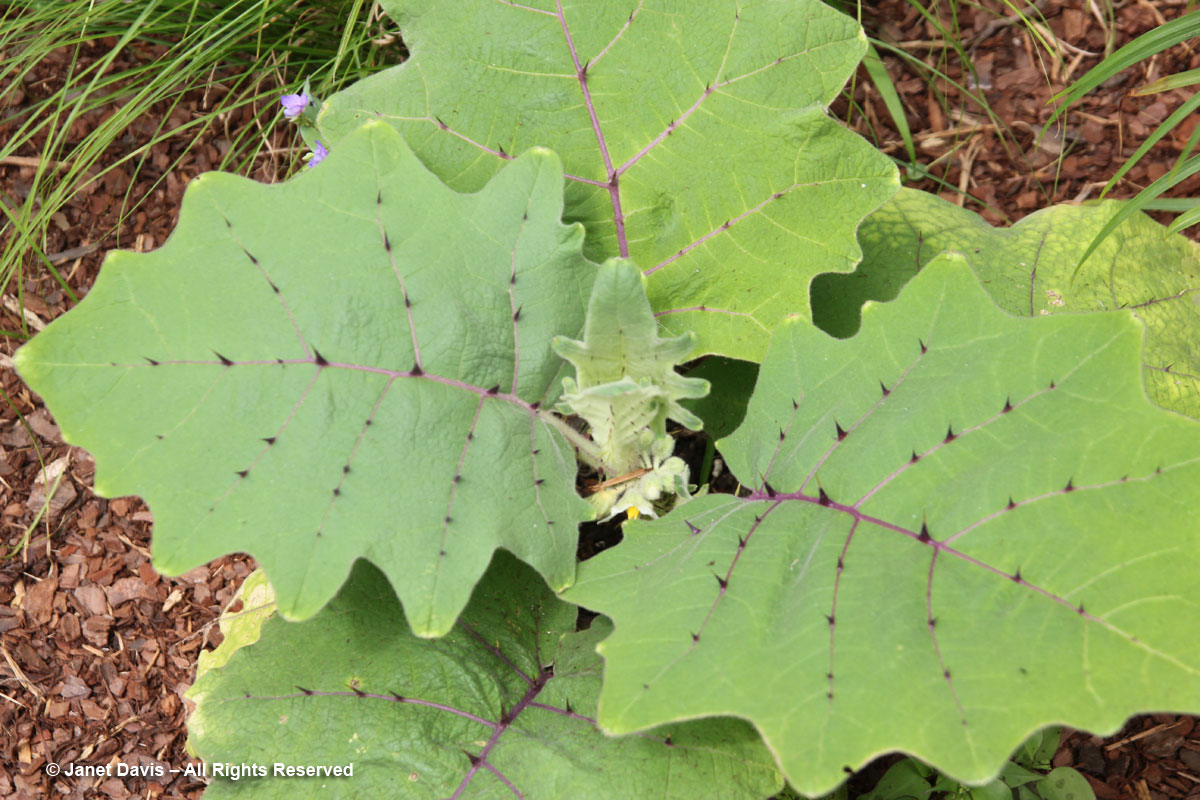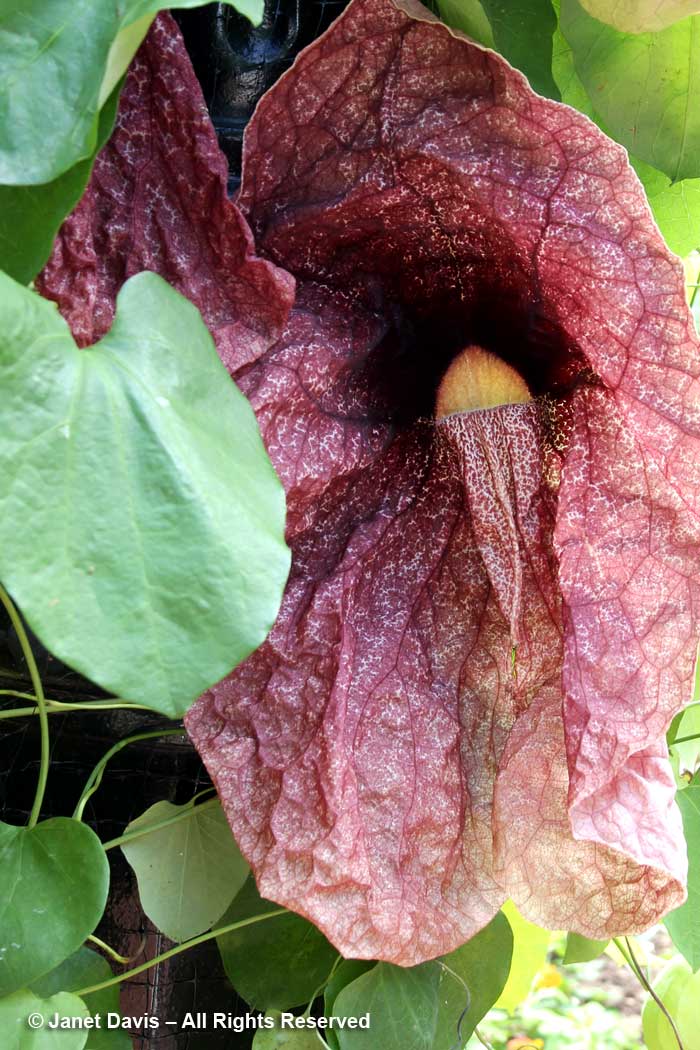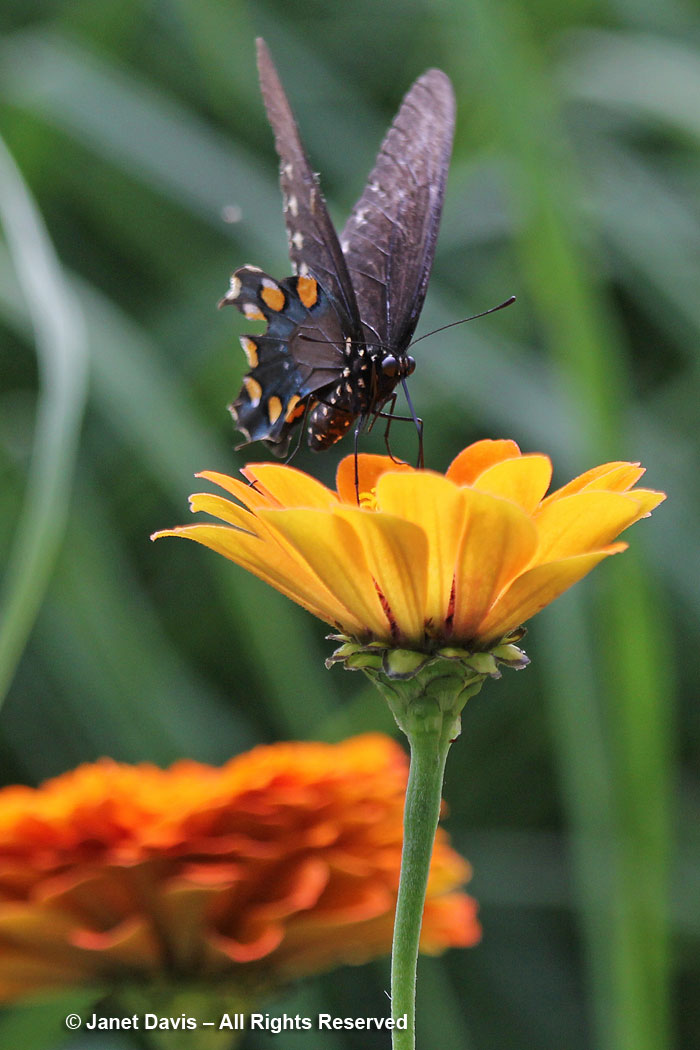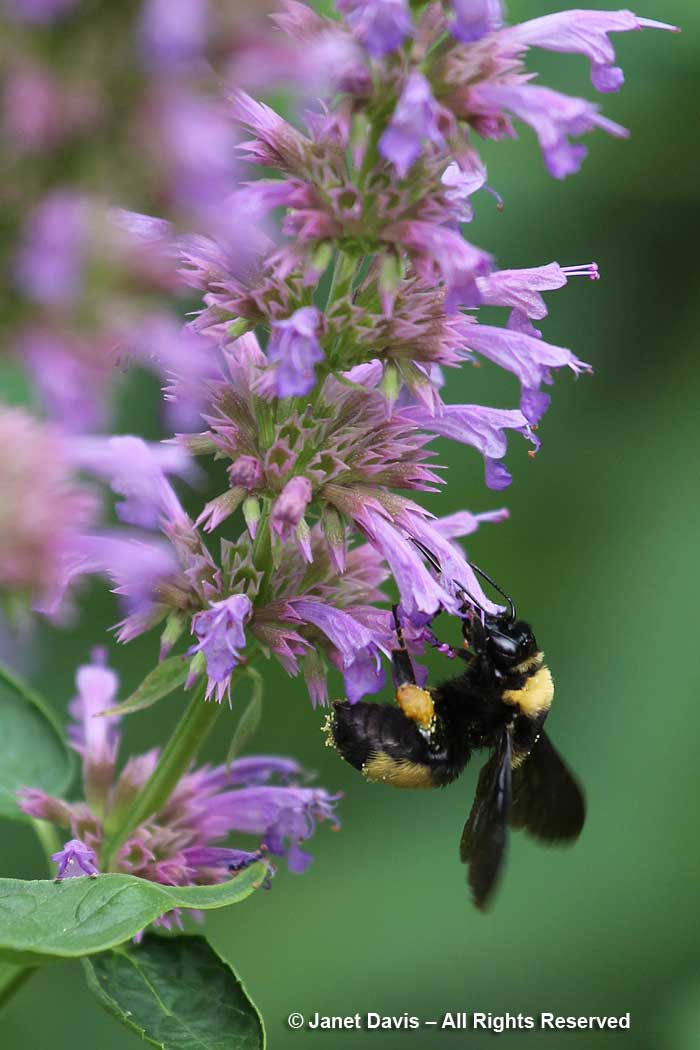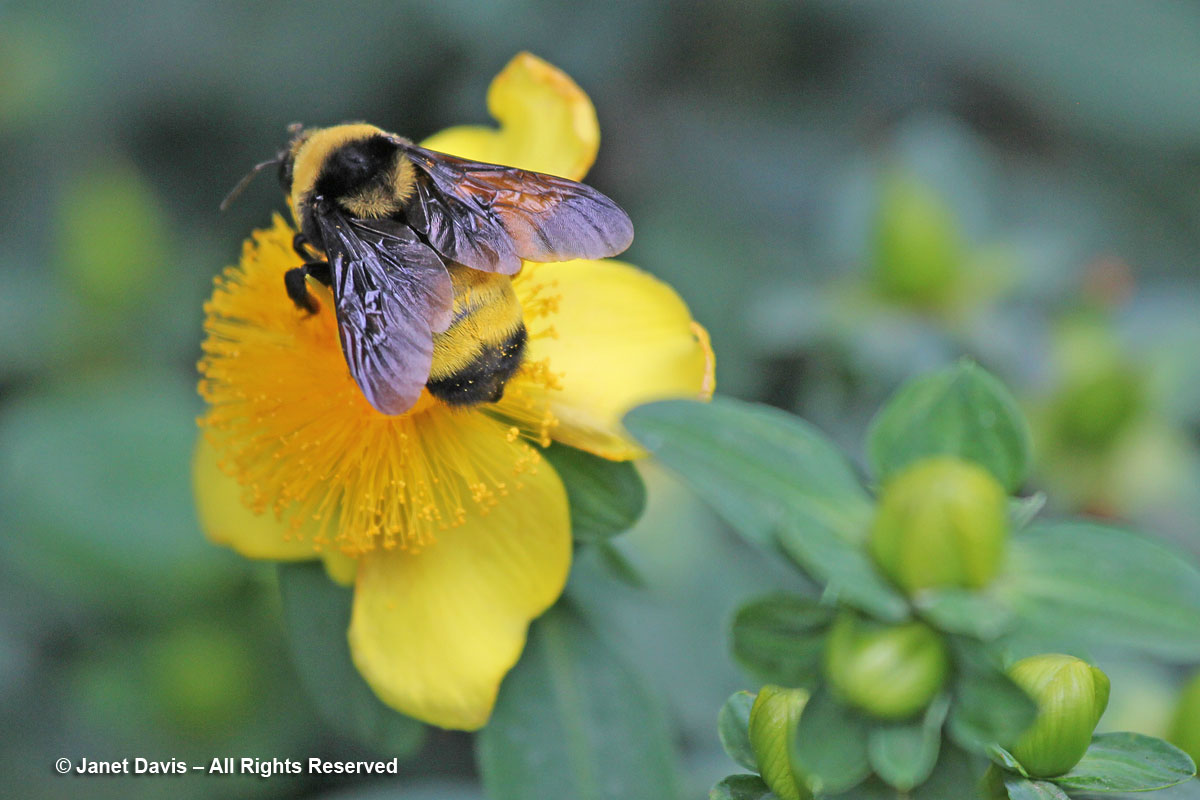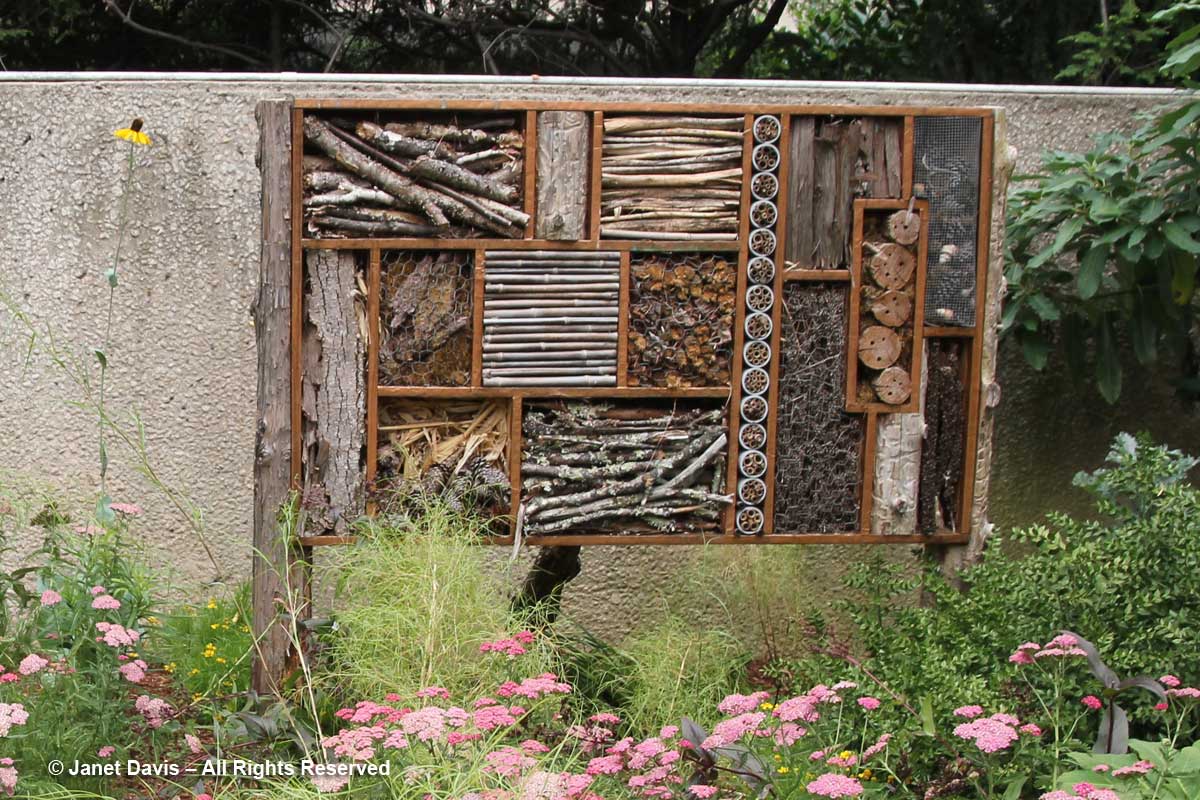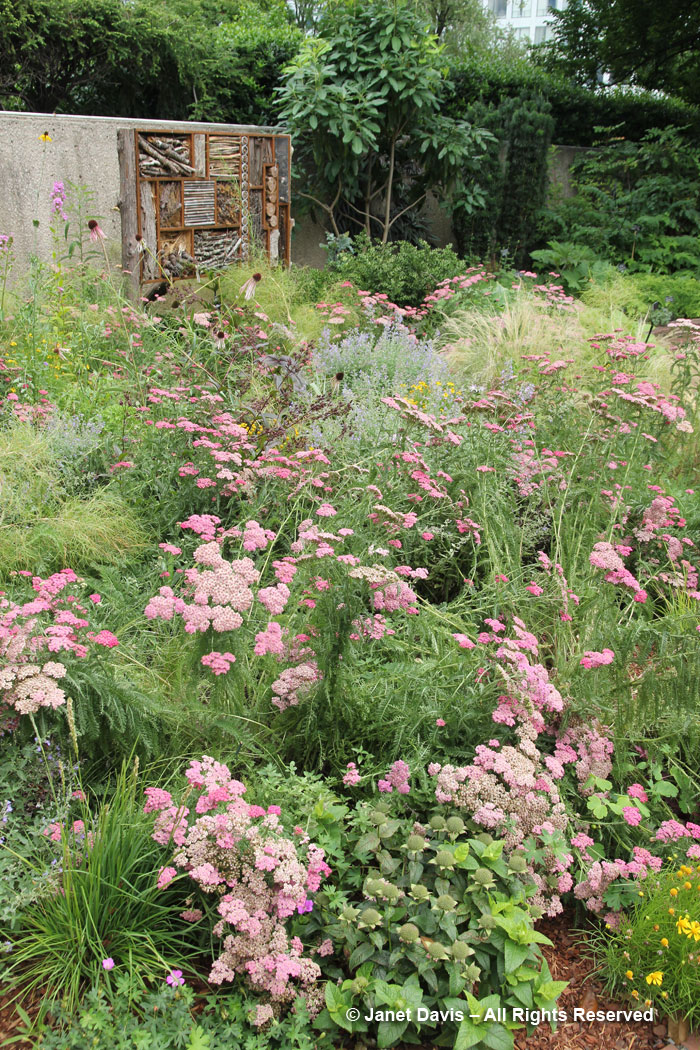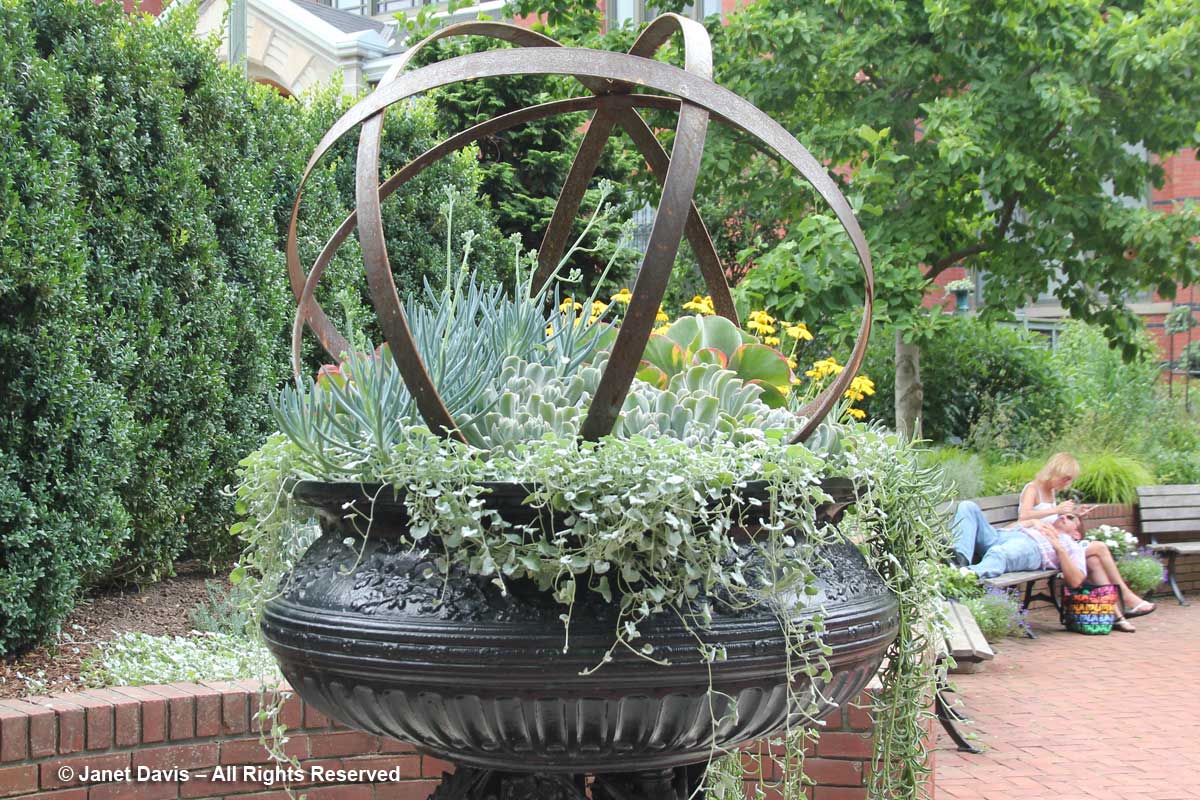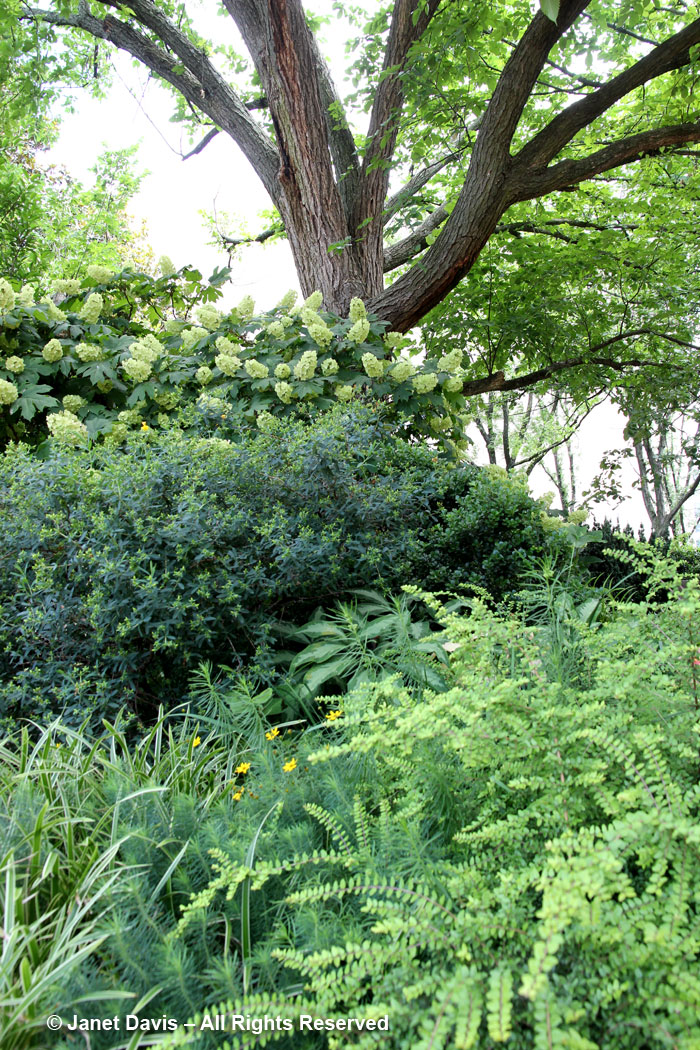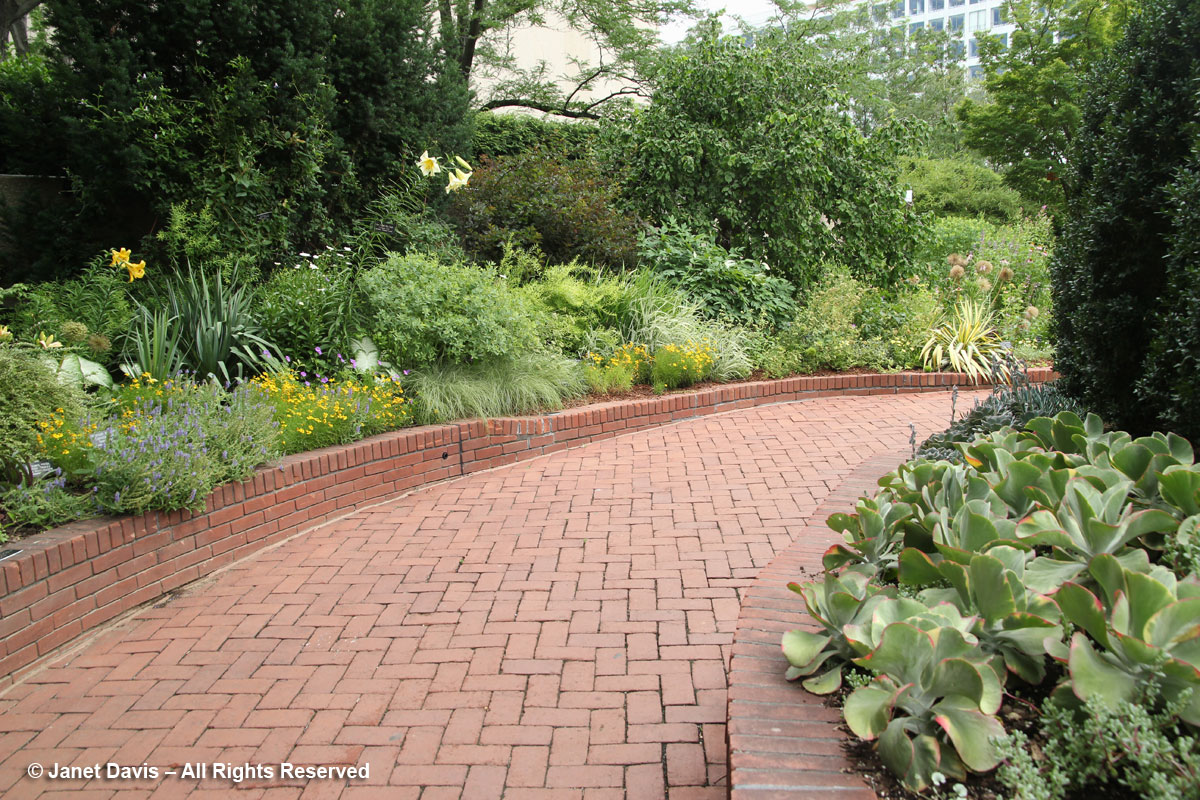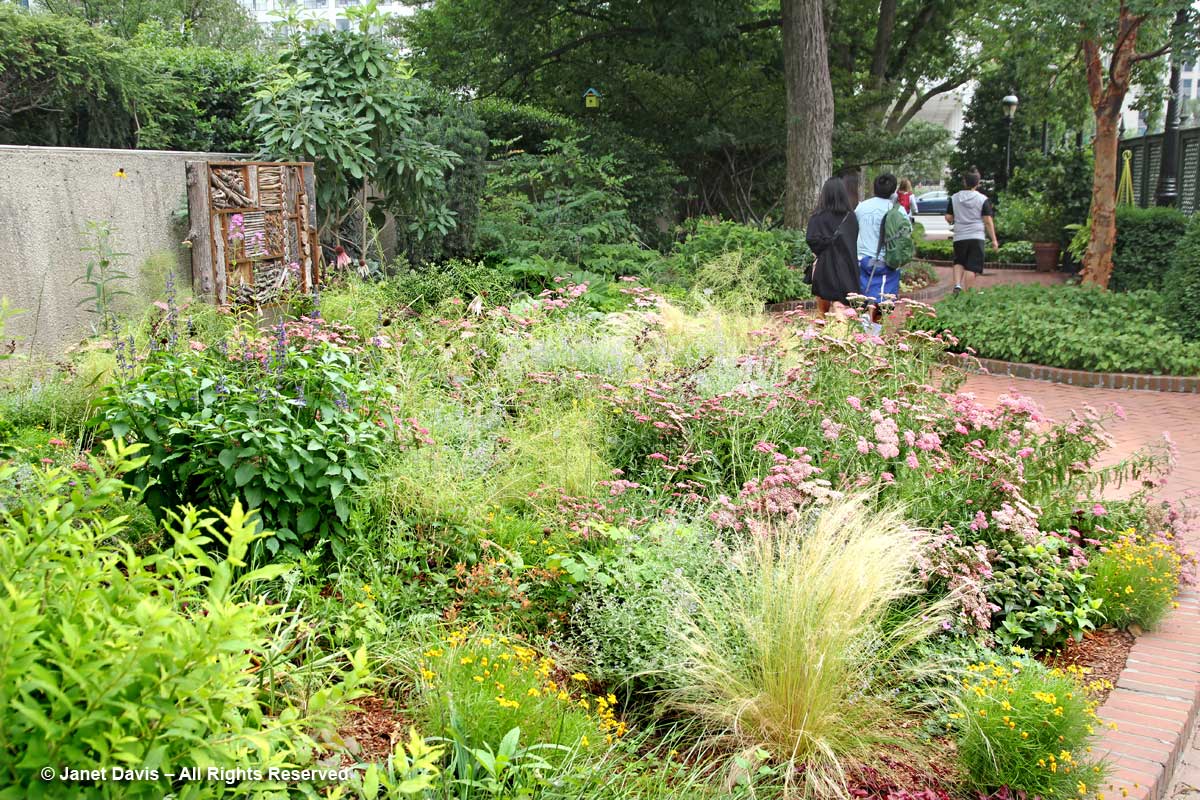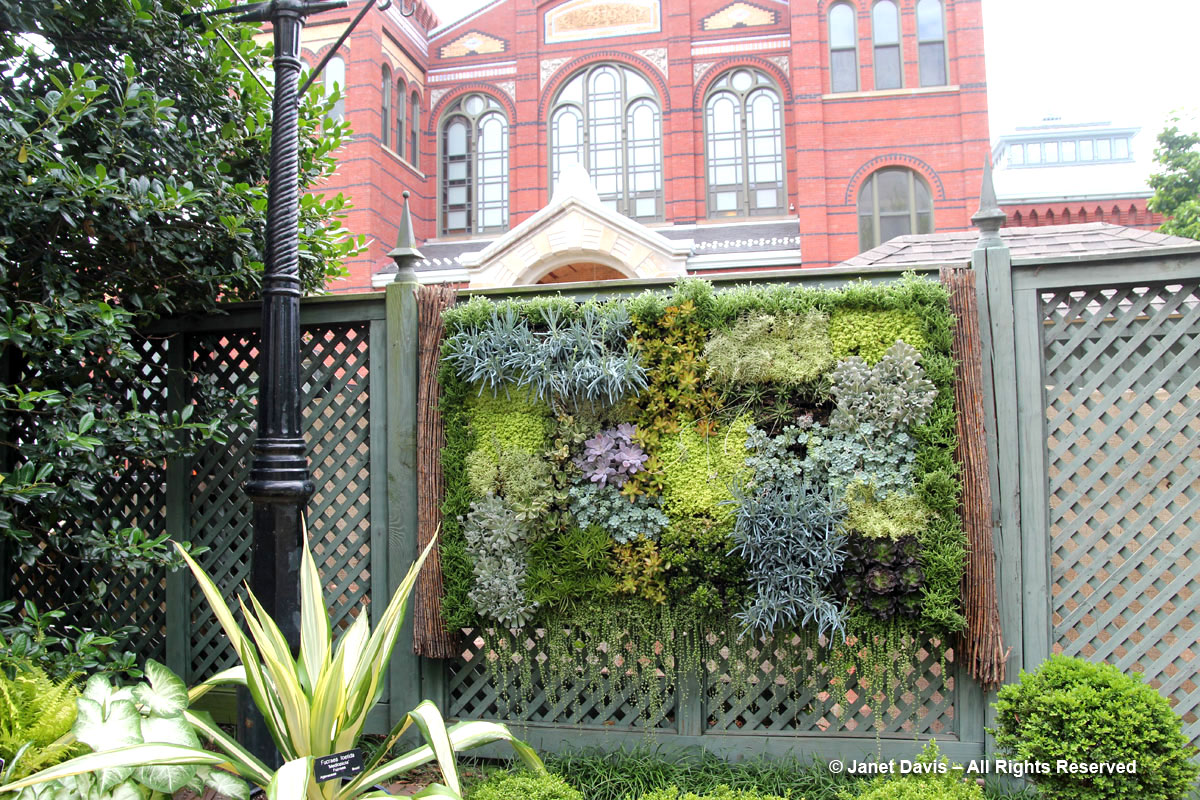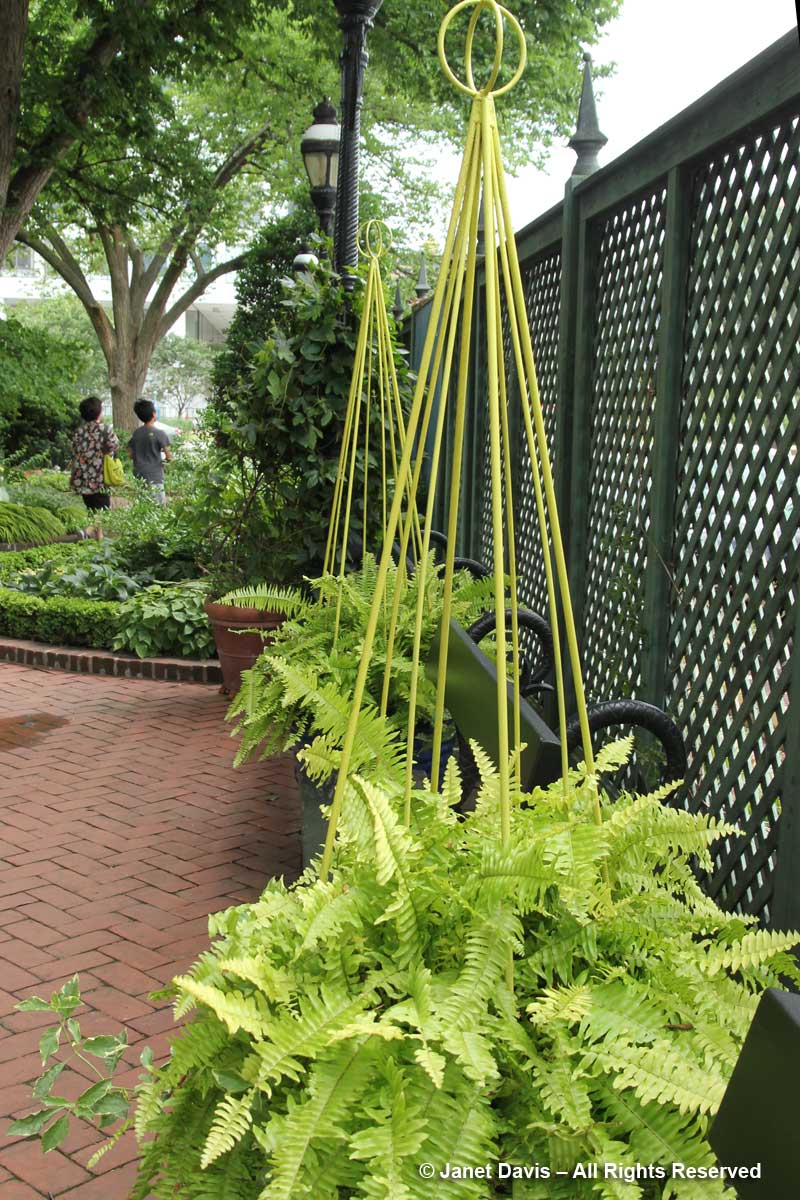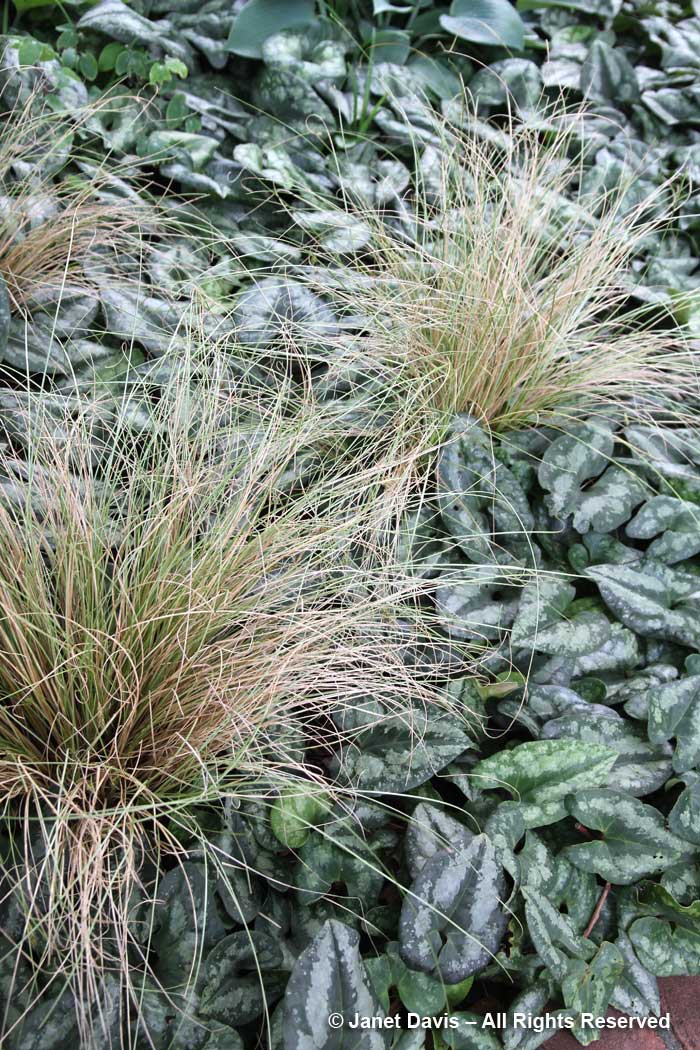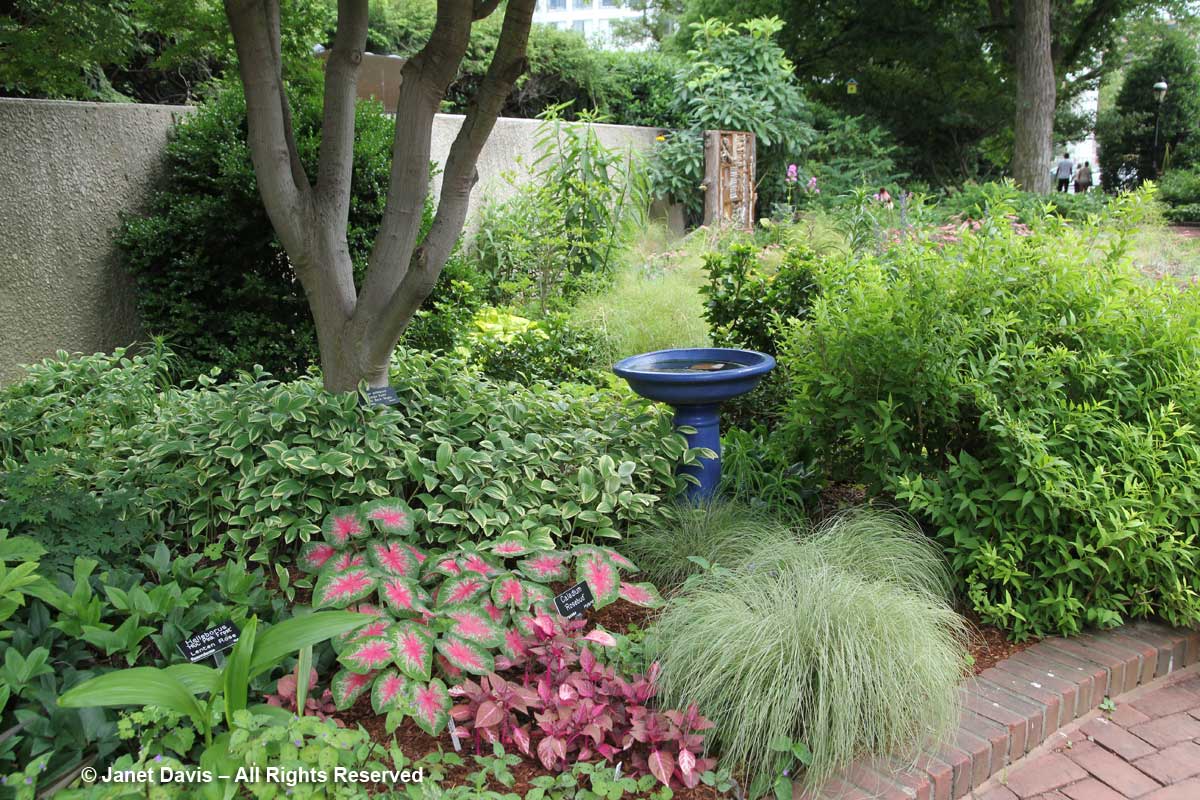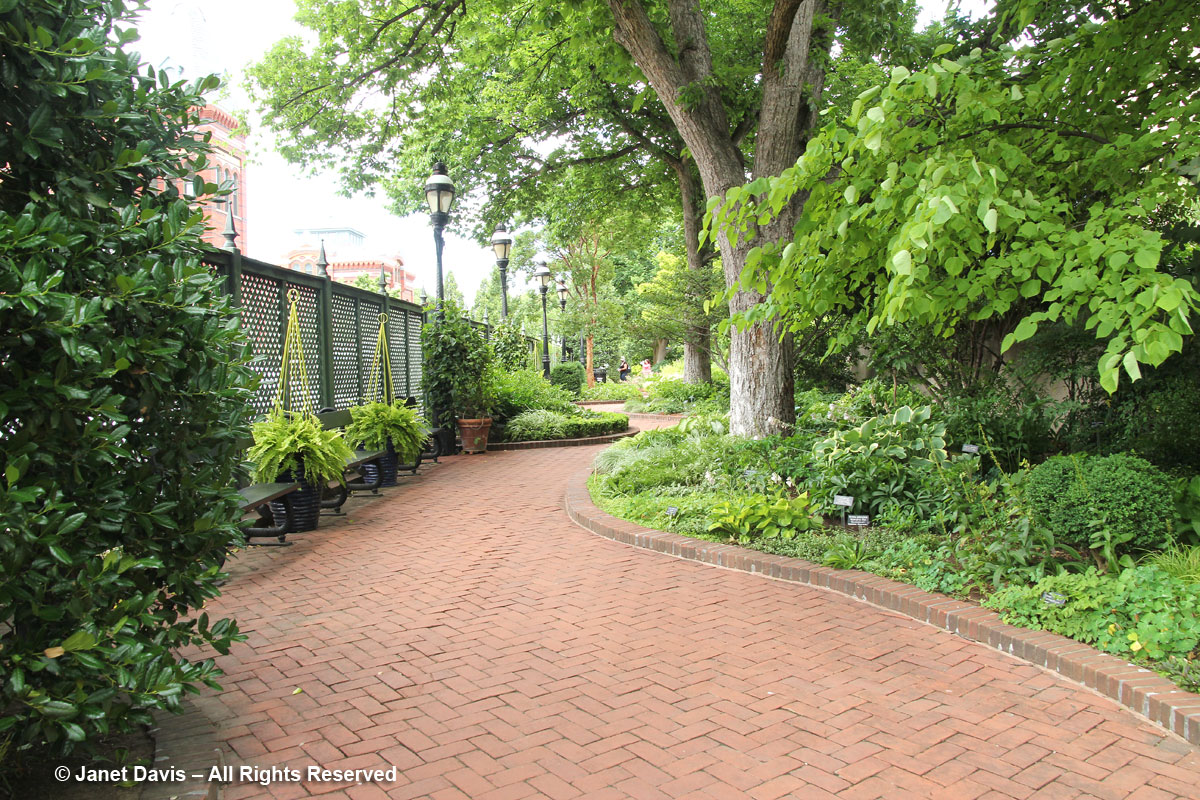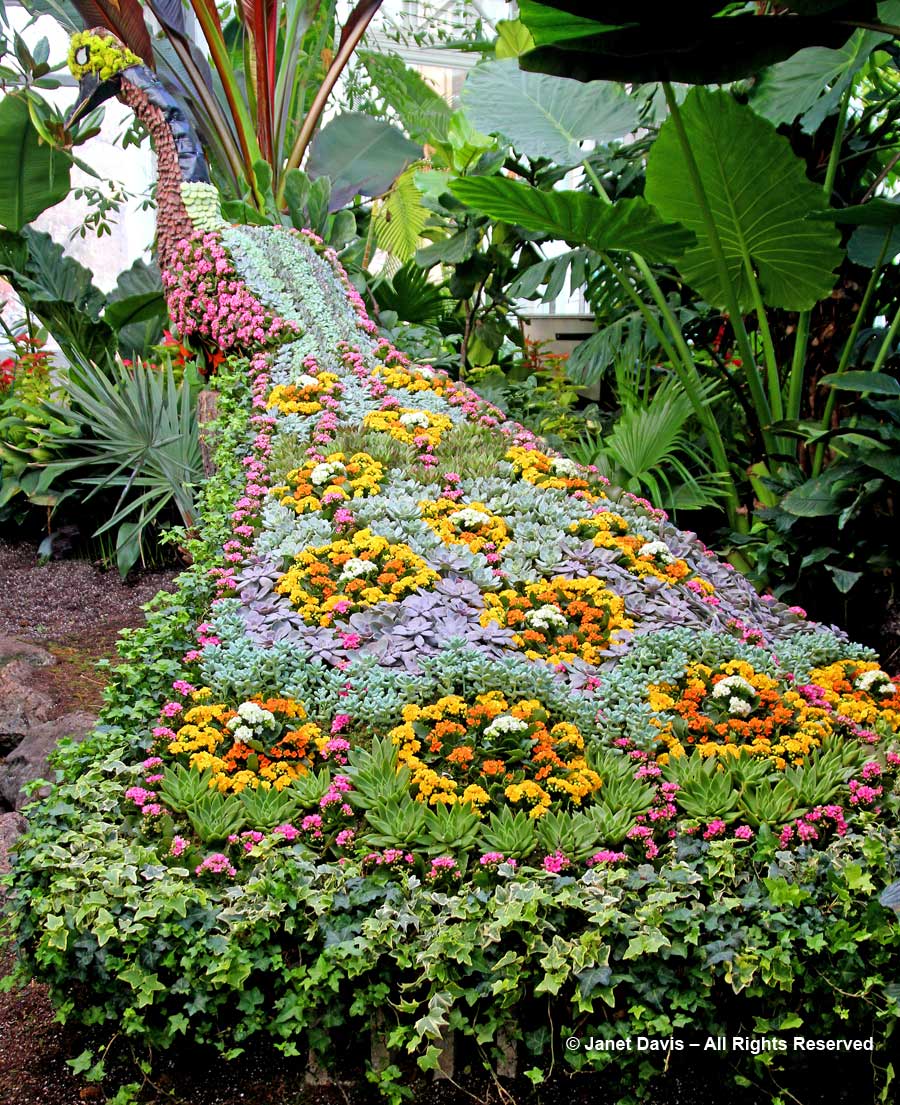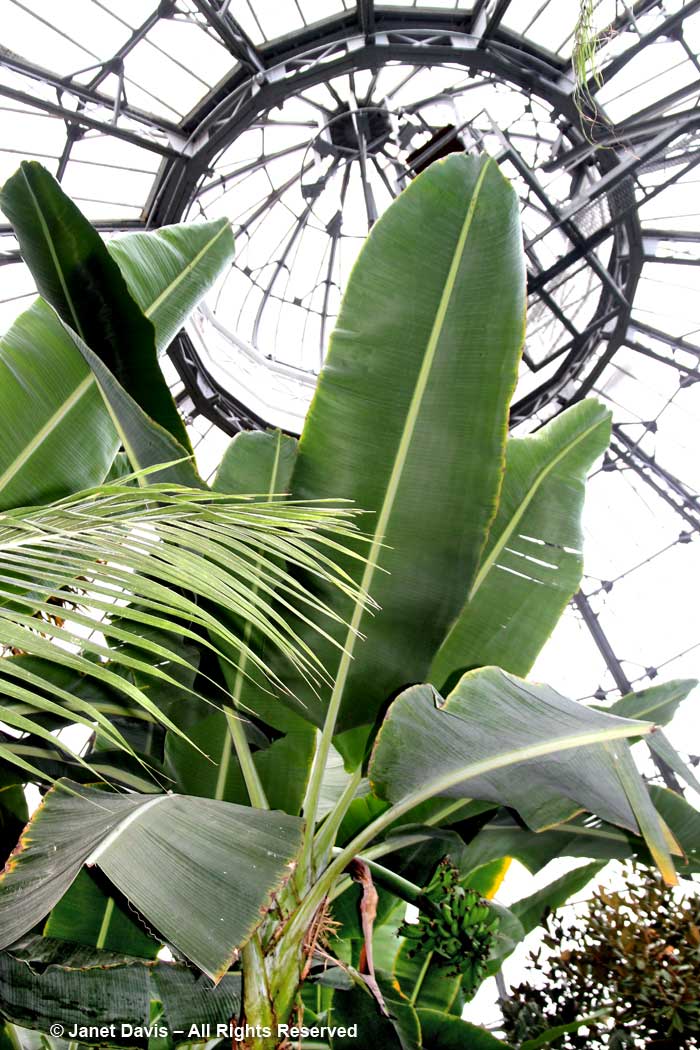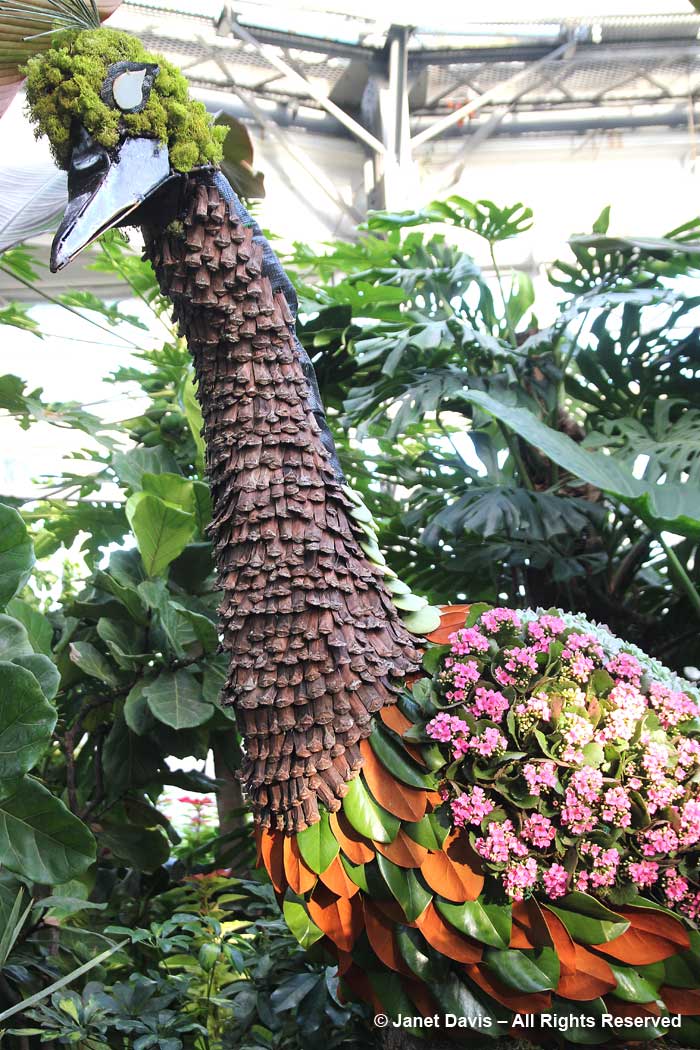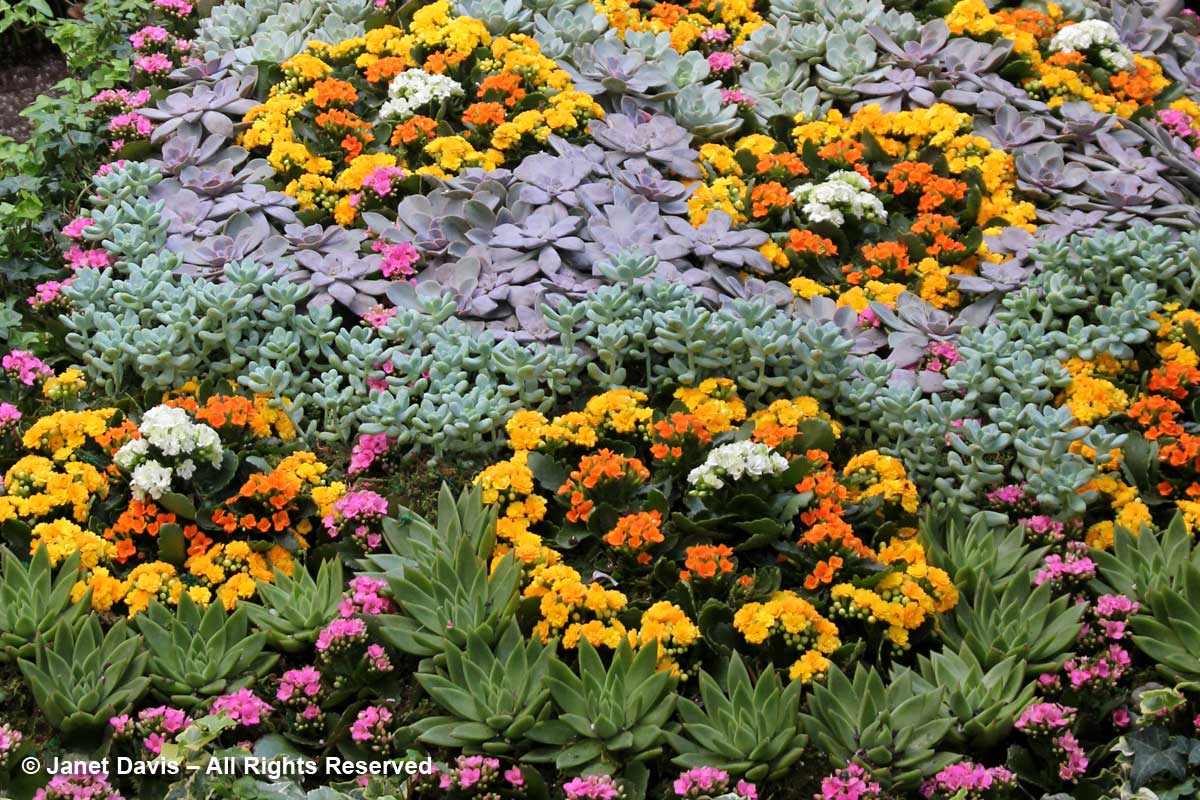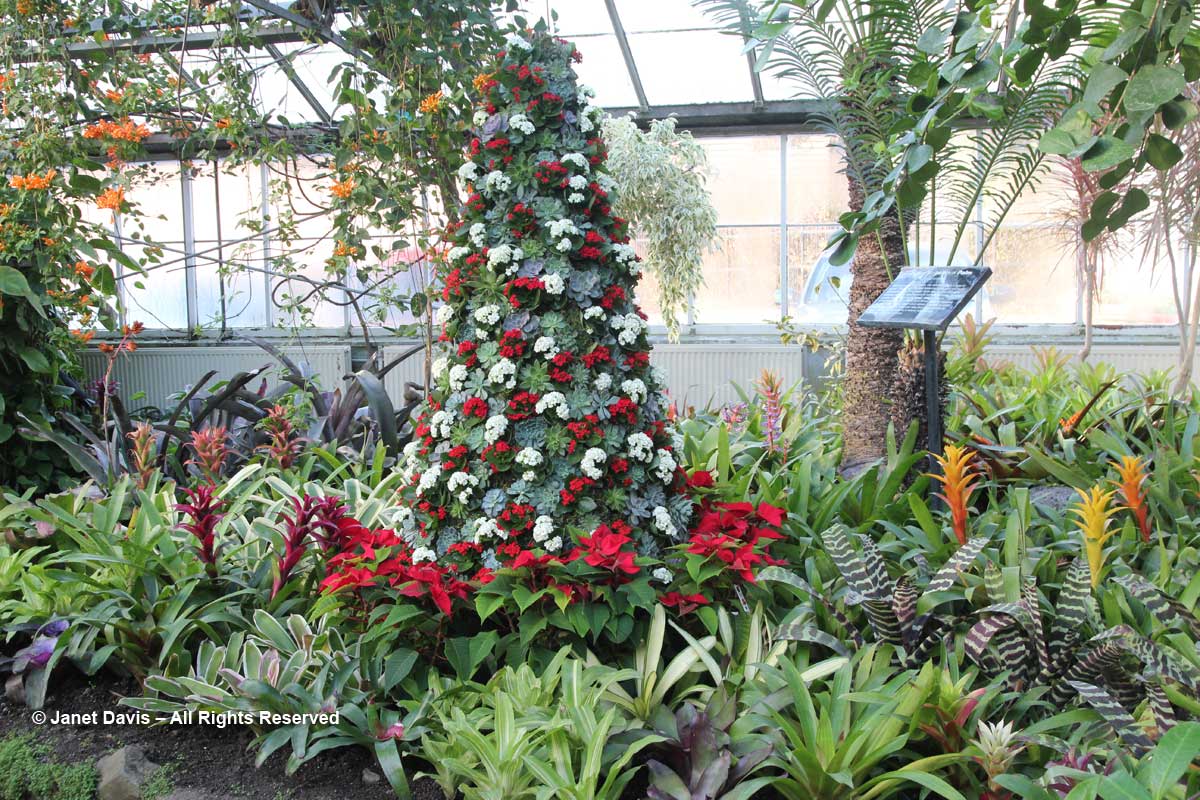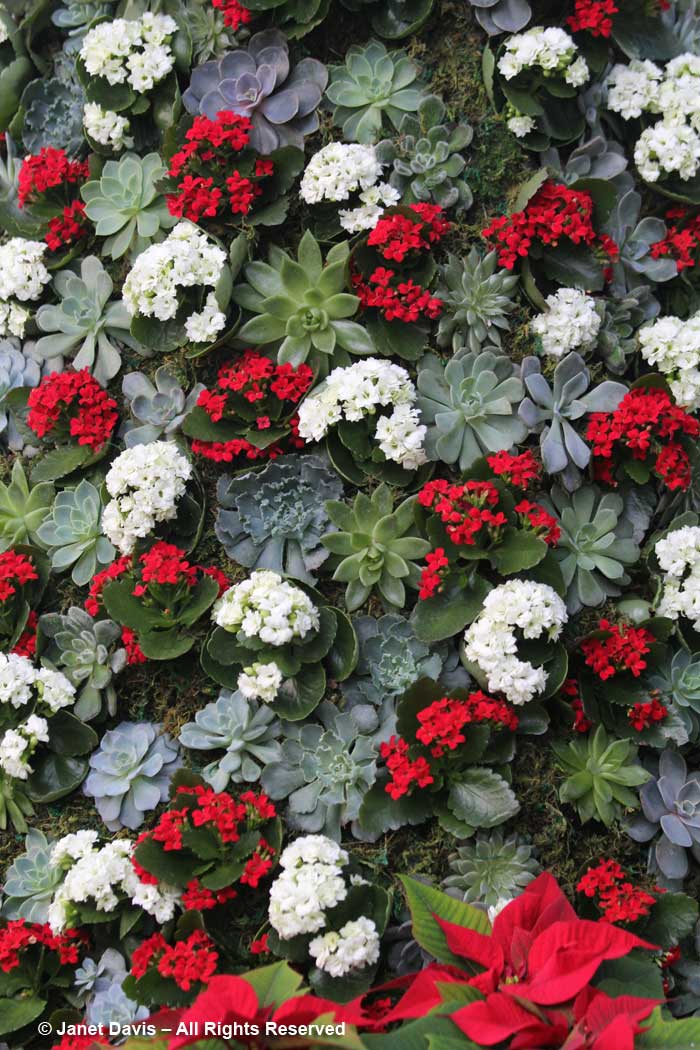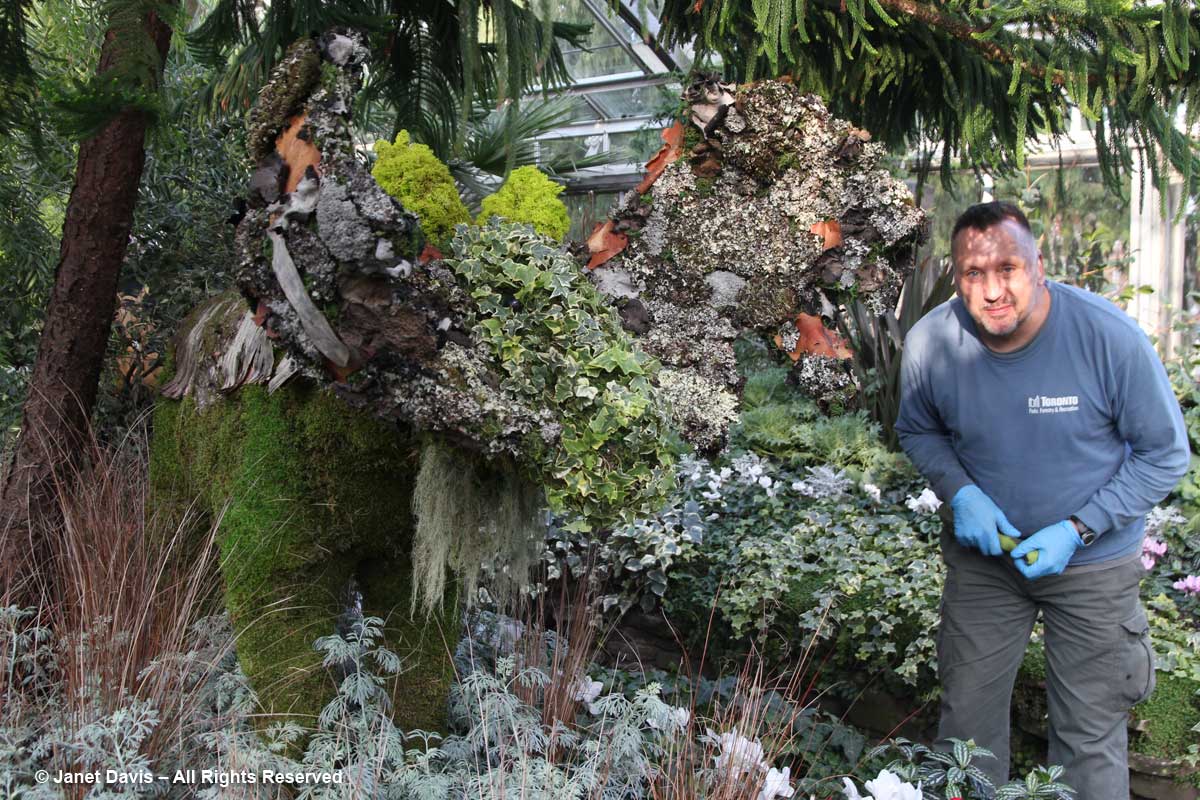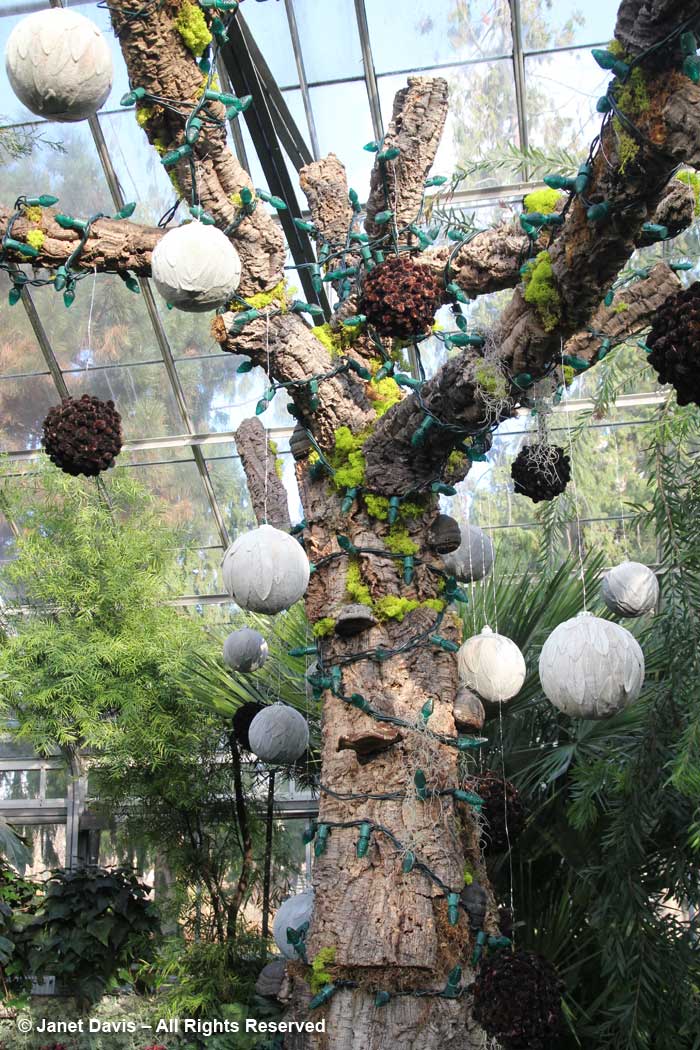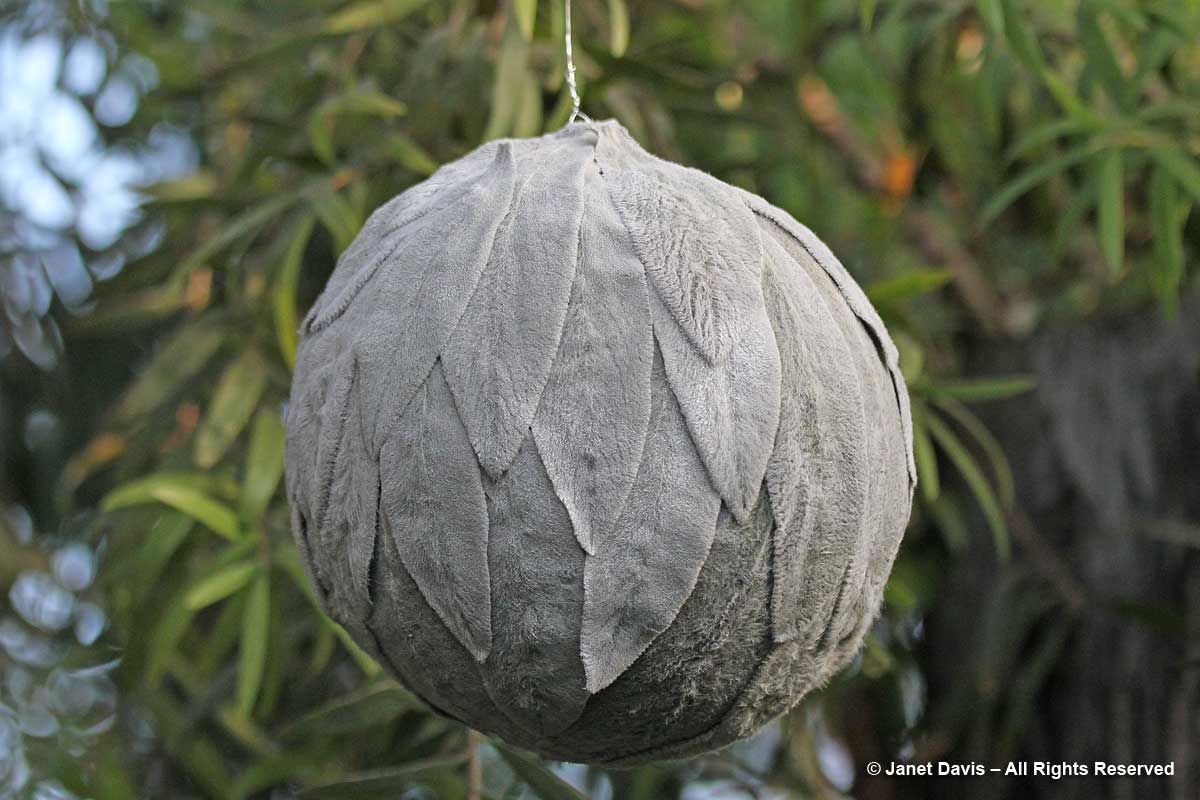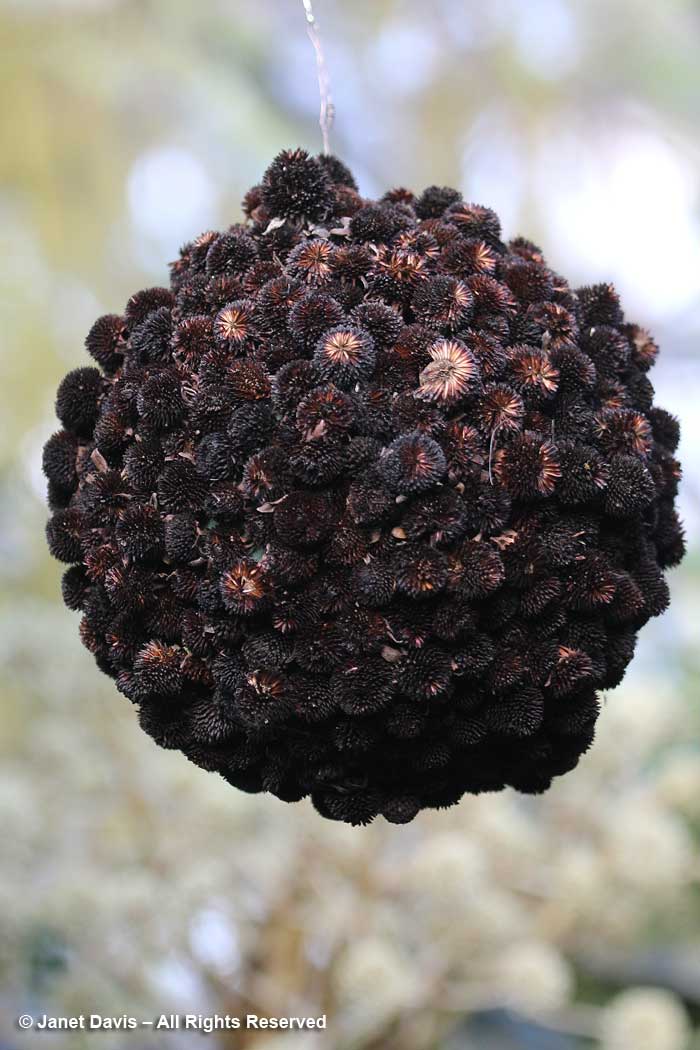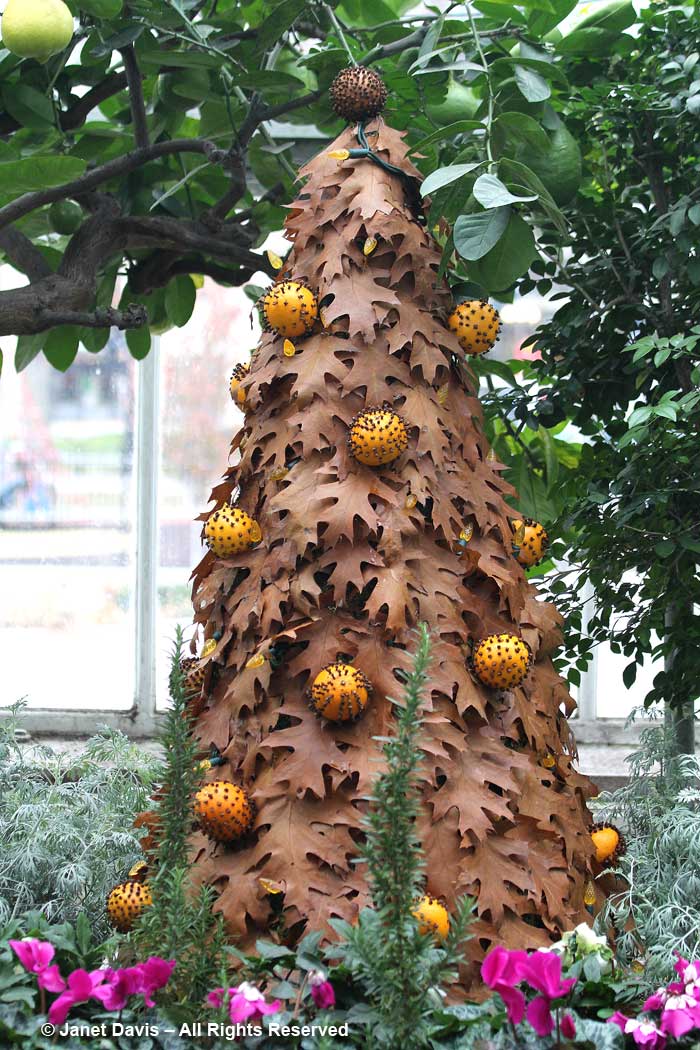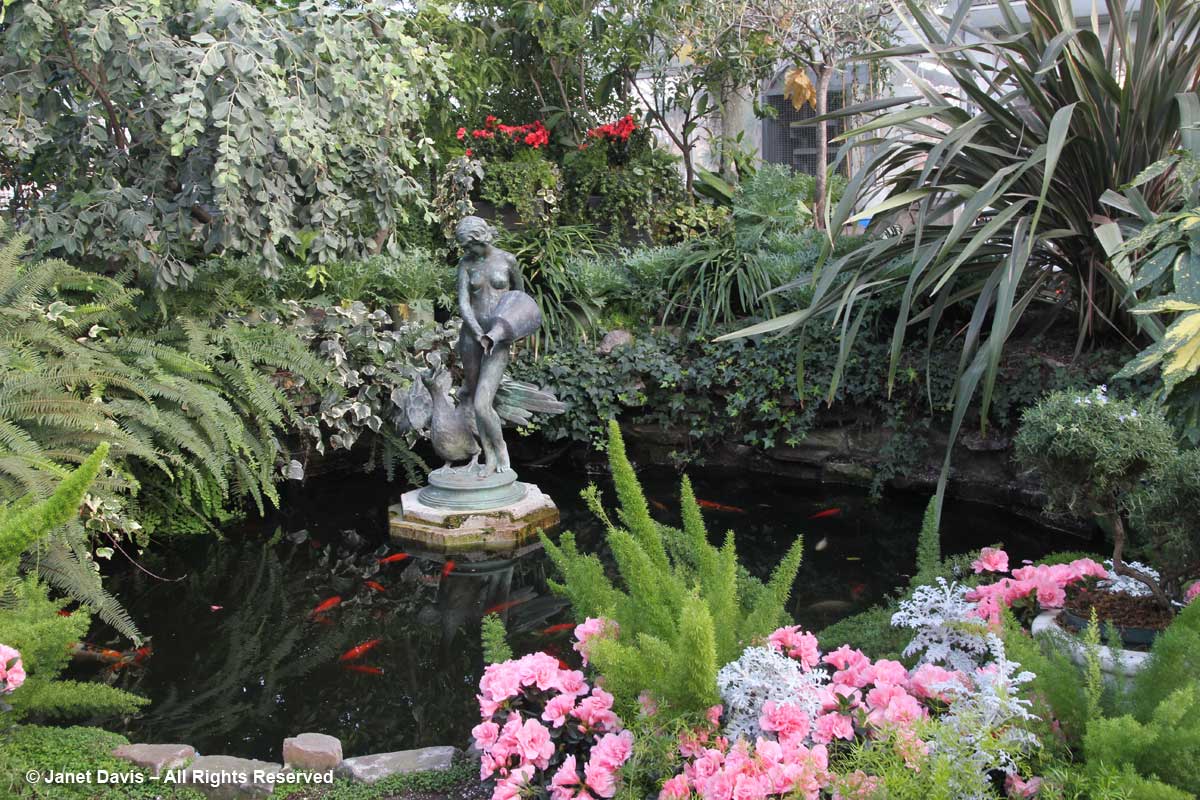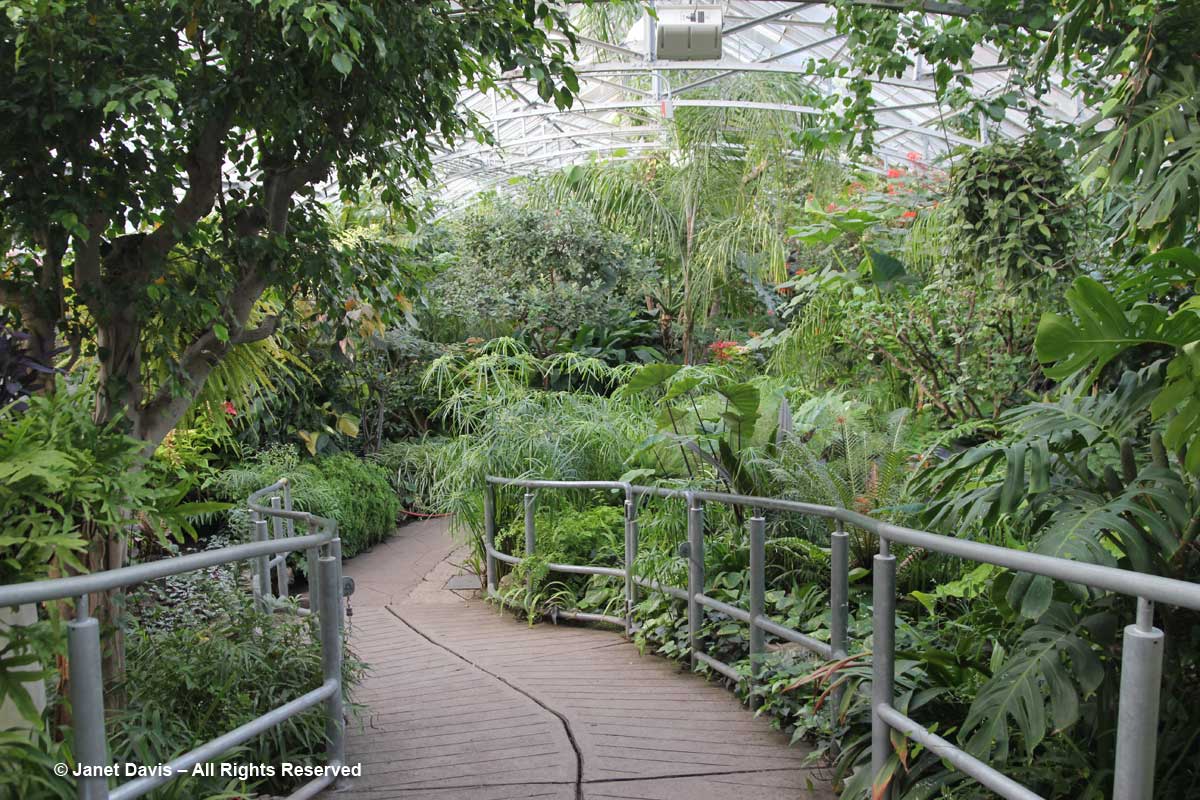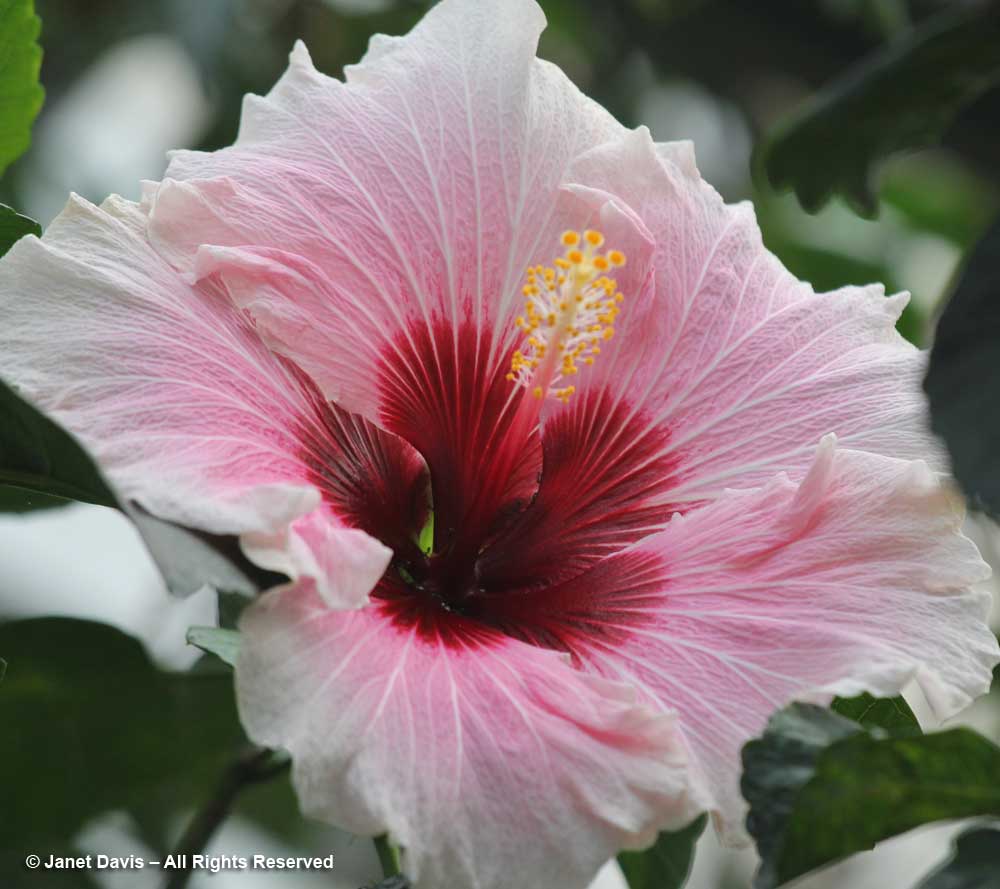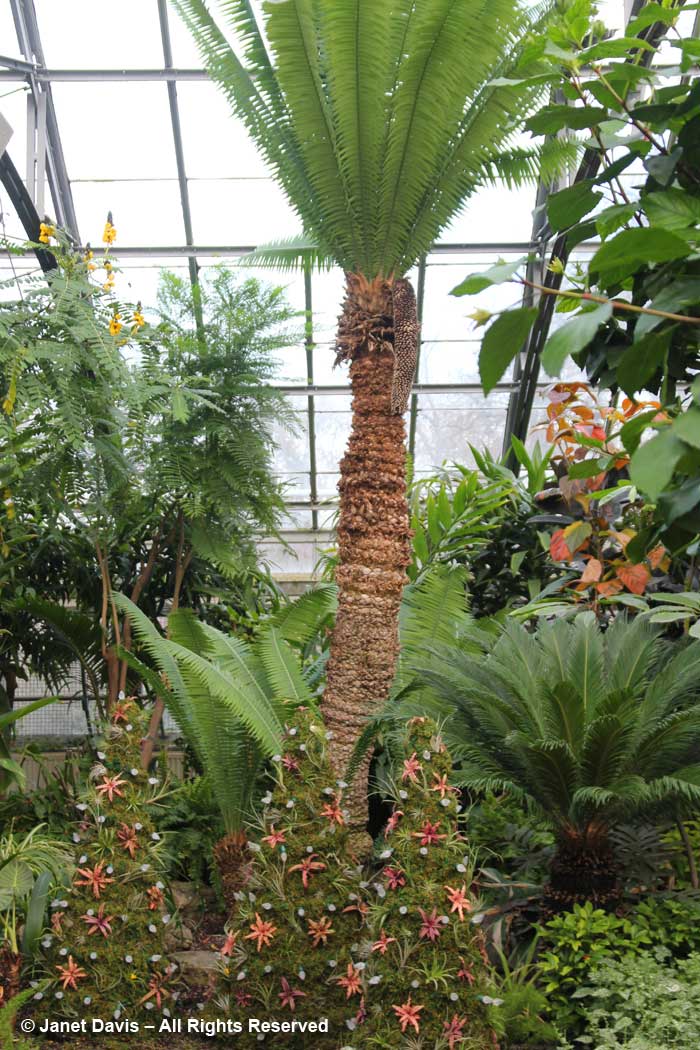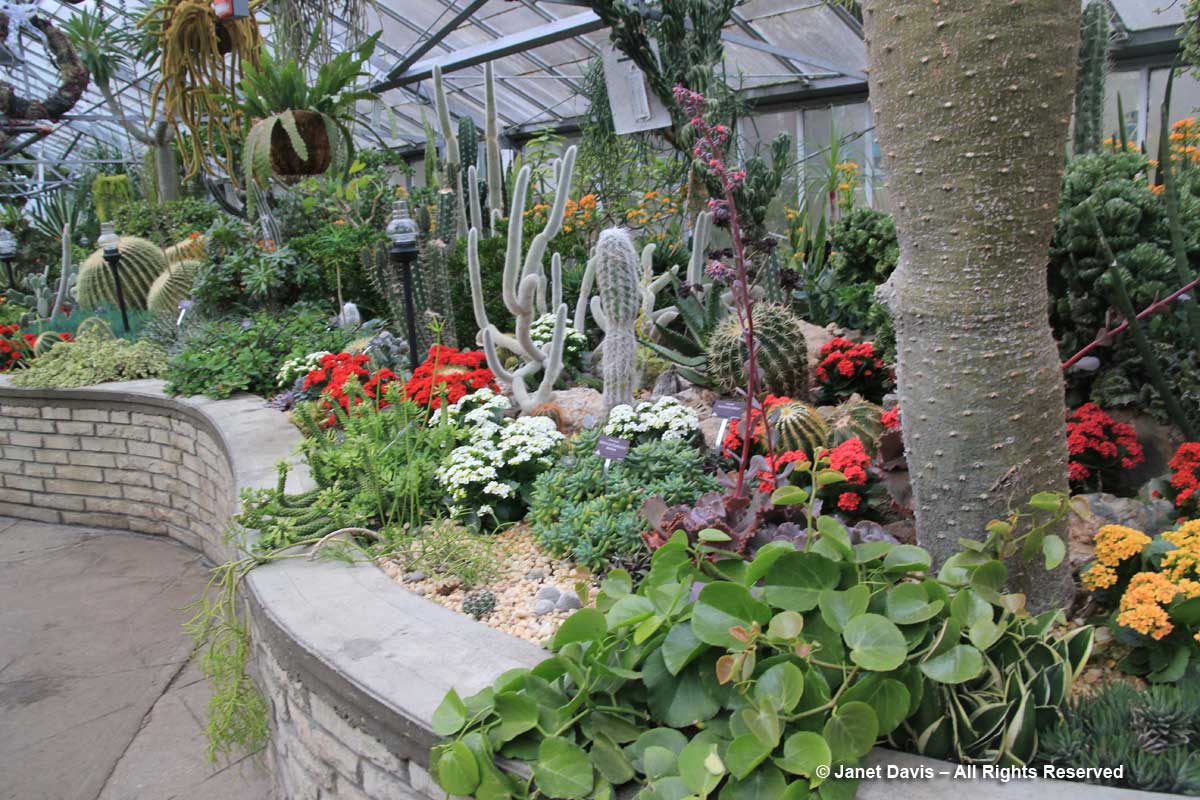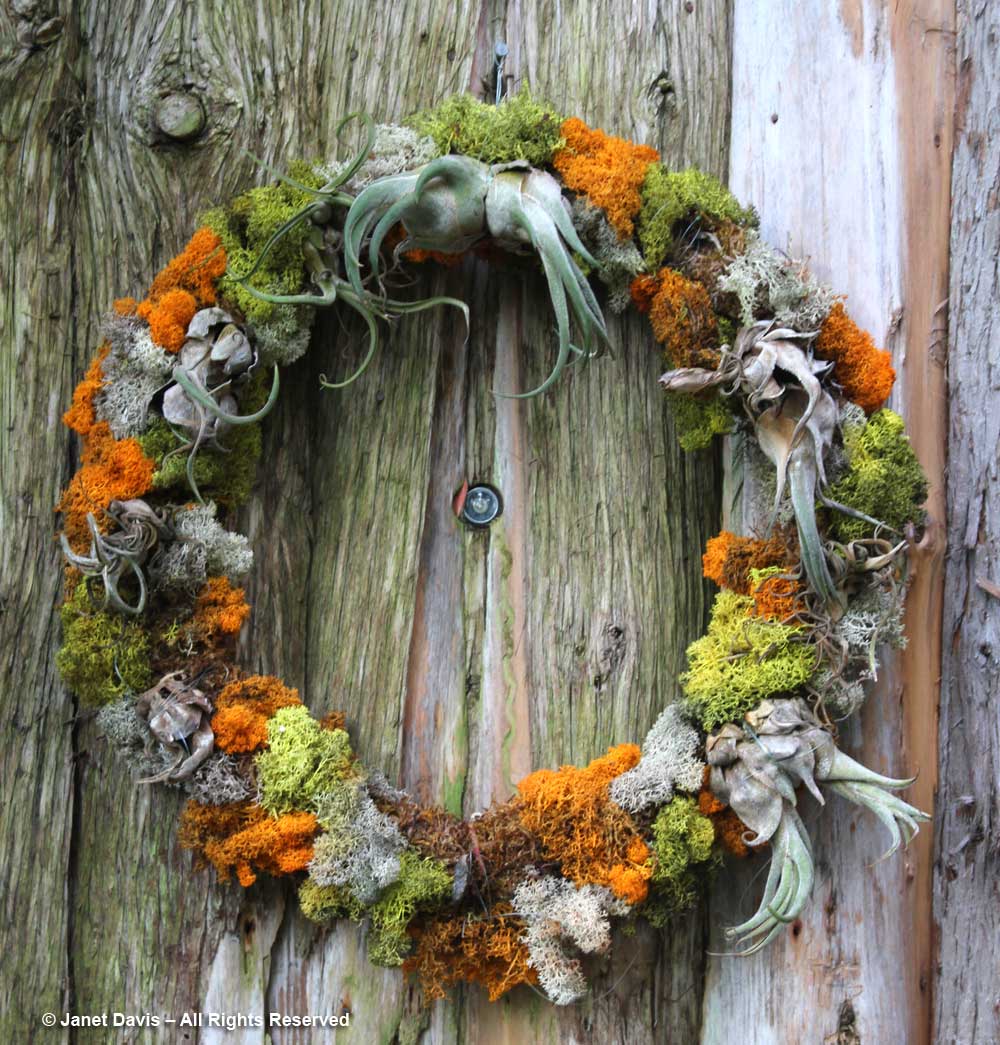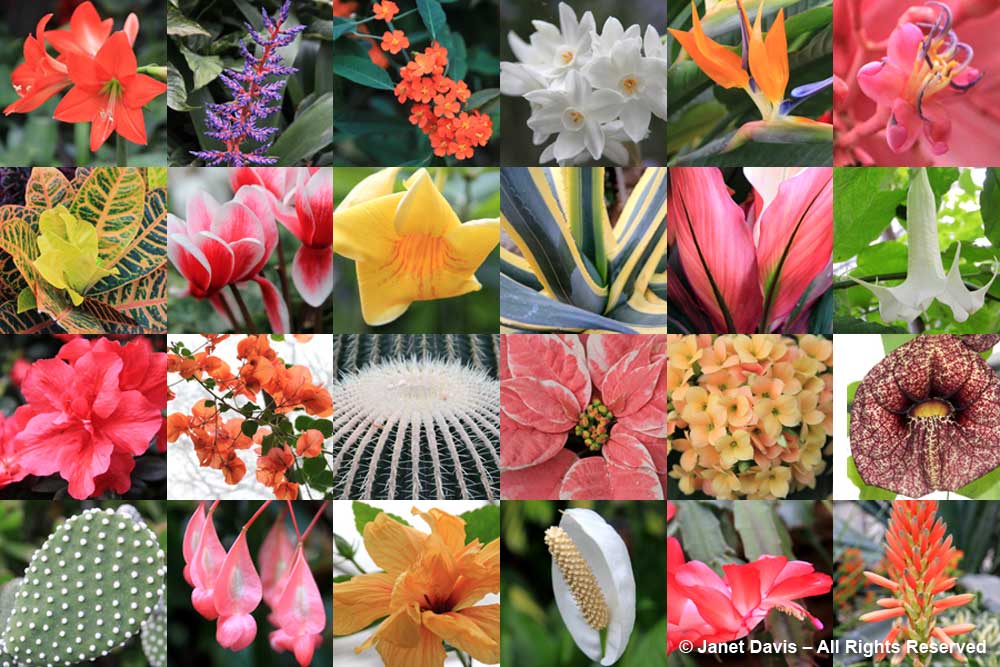After getting to know Pam Penick during previous Garden Bloggers’ Flings, it was fun to visit her Austin, Texas garden in early May when bloggers from that lovely city who had hosted the very first fling in 2008 celebrated by hosting another 10 years later. Pam, a long-time blogger and author whose work can be seen in Garden Design magazine and other publications, was the one who had the idea for that first fling and organized it along with three other bloggers, including Diana Kirby (whose lovely garden was essentially rained out the previous day). We got out in a pretty neighbourhood and walked under the multi-stemmed Texas live oaks (Quercus fusiformis) in her front garden.
Let’s move a little closer to the house, past the raised bed….
….. that holds a lovely ‘Green Goblet agave and beautiful blue, ceramic spheres. Blue, as you’ll see when you finish this blog and scan the photos, is a favourite colour of Pam’s, and she does it well.
There is no front lawn here, just gravel mulch and fabulous, minimalist containers of succulents and generously-proportioned, poured concrete slabs leading to the front door. It’s not surprising that Pam wrote two books that are illustrated so well in her garden. The first on conserving water is titled The Water Saving Garden: How to Grow a Gorgeous Garden with a Lot Less Water (2016). The other is Lawn Gone: Low-Maintenance, Sustainable, Attractive Alternatives for Your Yard (2013).
I liked this little garage wall planter with its Buddha reposing amidst cacti and succulents.
Sticks on fire (Euphorbia tirucallii) from South Africa makes a great container subject.
Pam is on hand to answer questions about her garden and plant choices, about which she has said: “I enjoy growing plants native to central Texas, supplemented by well-adapted and drought-tolerant non-natives, many from northern Mexico. Mixing it up with architectural agaves and colorful salvias, feathery ornamental grasses and golden yuccas, I’m striving for a garden with four-season interest and cat-like tendencies—meaning it doesn’t need my attention every single day. I like to play and relax in the garden, not just tend to it.”
A long border softens space between the Penicks’ house and the neighbour’s driveway.
At the end of the border is a dramatic arrangement of dark-leaved dyckias with an heartful metal heart.
This is a beautiful combination, whale’s tongue agave (Agave ovatifolia) and Salvia greggii…..
…. and behind it, a perfect little vignette in a galvanized trough.
Pam’s love of blue is certainly on display in this sitting area just outside the house door….
…. including a little blue bird in a blue dish with succulents.
Like the walls of any indoor dining room, Pam’s house wall gets the outdoor dining decorative treatment, too.
I do a lot of photography of colour in plant design, but people often forget that a spray can or a gallon of stain can be their best friend when wanting to inject colour in the garden, as with this fun perforated table and its blue and green accessories.
The property descends in the back quite steeply towards a greenbelt, so the deck has container-laden stairs leading up from ground level.
This cinderblock arrangement is such a cool, easy way to display succulents while setting up a visual boundary in the garden. And I like the taupe finish!
I’m willing to bet these vintage metal lawn chairs didn’t start out this colour, but met Pam’s clear love of all things blue!
Another Agave ovatifolia, with the small yellow flowers of hesperaloe and the reflections of the sky in a green gazing globe. The deer are so fond of “antlering” the hesperaloes and agaves that Pam surrounds them with black wire fencing from autumn until early spring.
There aren’t many colours here, just the cool blues of the pots and the myriad greens of the variegated yucca, Mexican feather grass (Nassella tenuissima) and other plants.
At the bottom level of the garden is a swimming pool (sorry about the harsh light but we definitely preferred the sun to the previous day’s rain torrents)….
….. with a fun focal point.
A poolside Adirondack chair sports just the right colour of cushion.
Pam has a great fondness for galvanized stock tanks and troughs that she buys at farm supply stores. They add sophisticated lines and a unity of colour that looks great with all her greens and blues. I loved this simple row of pail planters.
And this is the mother of all stock tanks! With lovely aquatic plants.
If I was building a water feature to replace the labour-intensive, in-ground lily pond I already have, I’d create a simple fountain like the one below. Just enough water splash to create a little music in the garden.
No southern garden is complete without a bottle tree, and Pam’s unsurprisingly is blue!
And of course, of Pam’s collection of ornamental sages, blue Salvia guaranitica strikes just the right colour note.
It was time to head on to the next garden and I returned to the front via the sloping, gravel path on the other side of Pam’s house.
What could have been a blank, uninteresting garage wall along this path had been turned into something quite special with the addition of four trellised mirrors that reflected back sunlight and the greens of foliage.
Even here, there was a spot to sit and enjoy a moment of quiet. The light also reflected from the mirrored globes in the basket…..
….. and above my head, I caught sight of myself in yet another mirror, standing under those Texas live oaks, pointing my camera up at a final image in Pam Penick’s lovely Austin garden garden.

